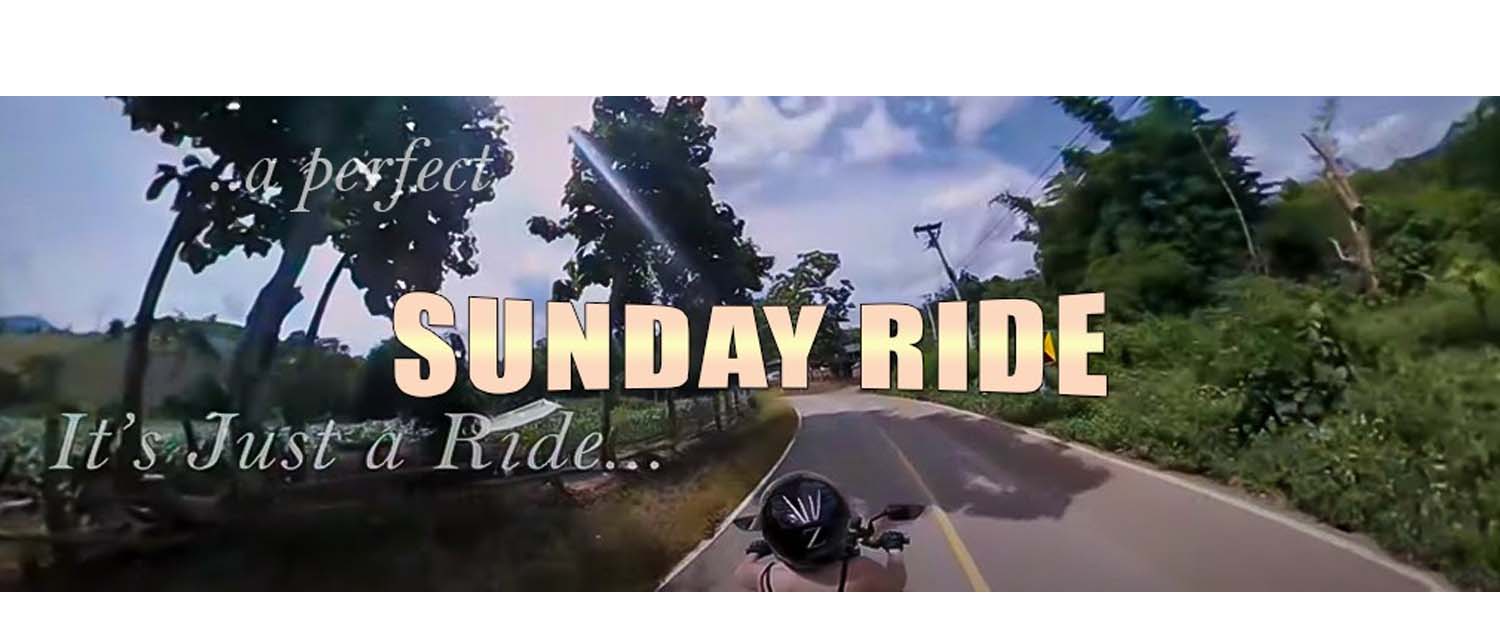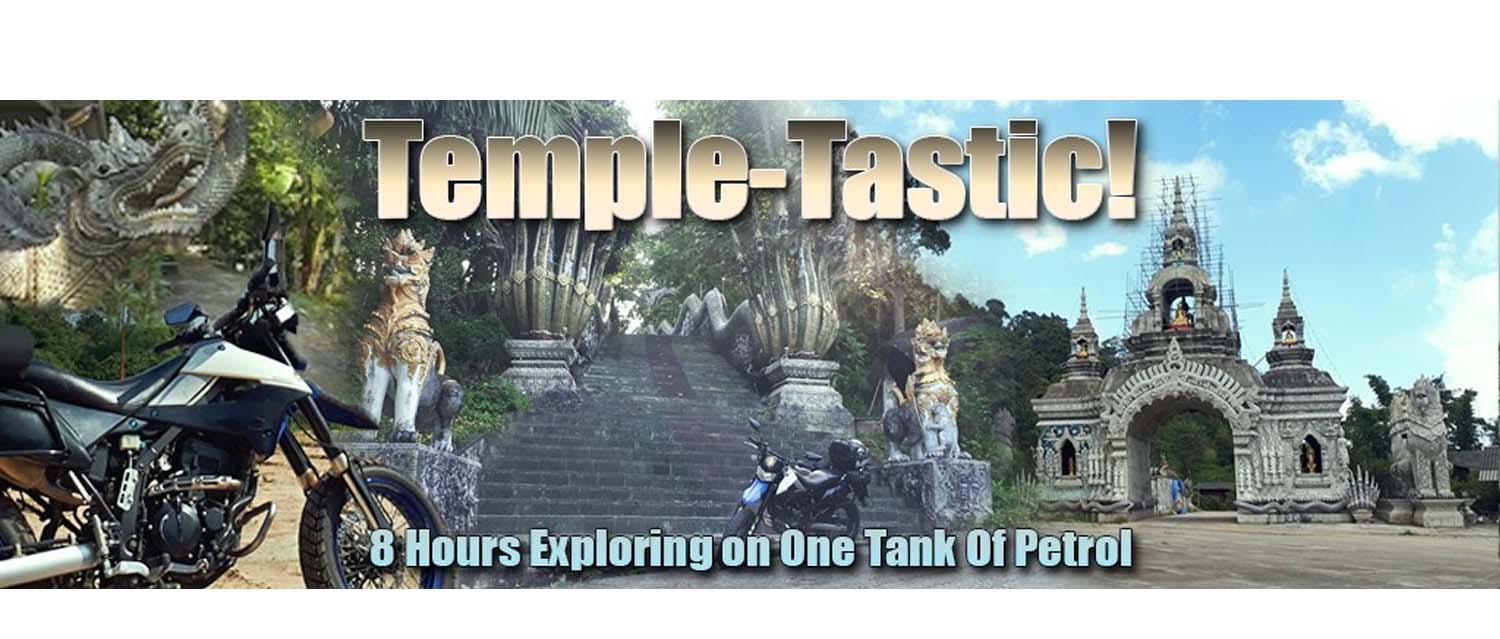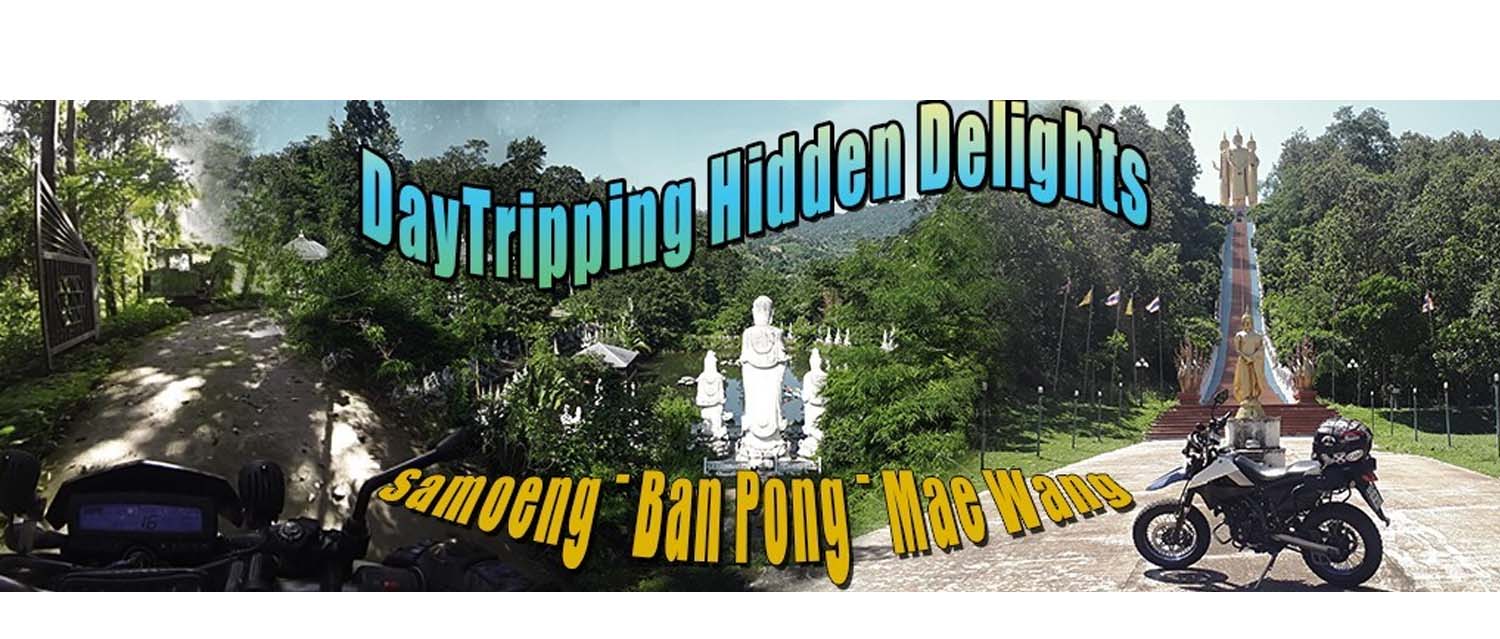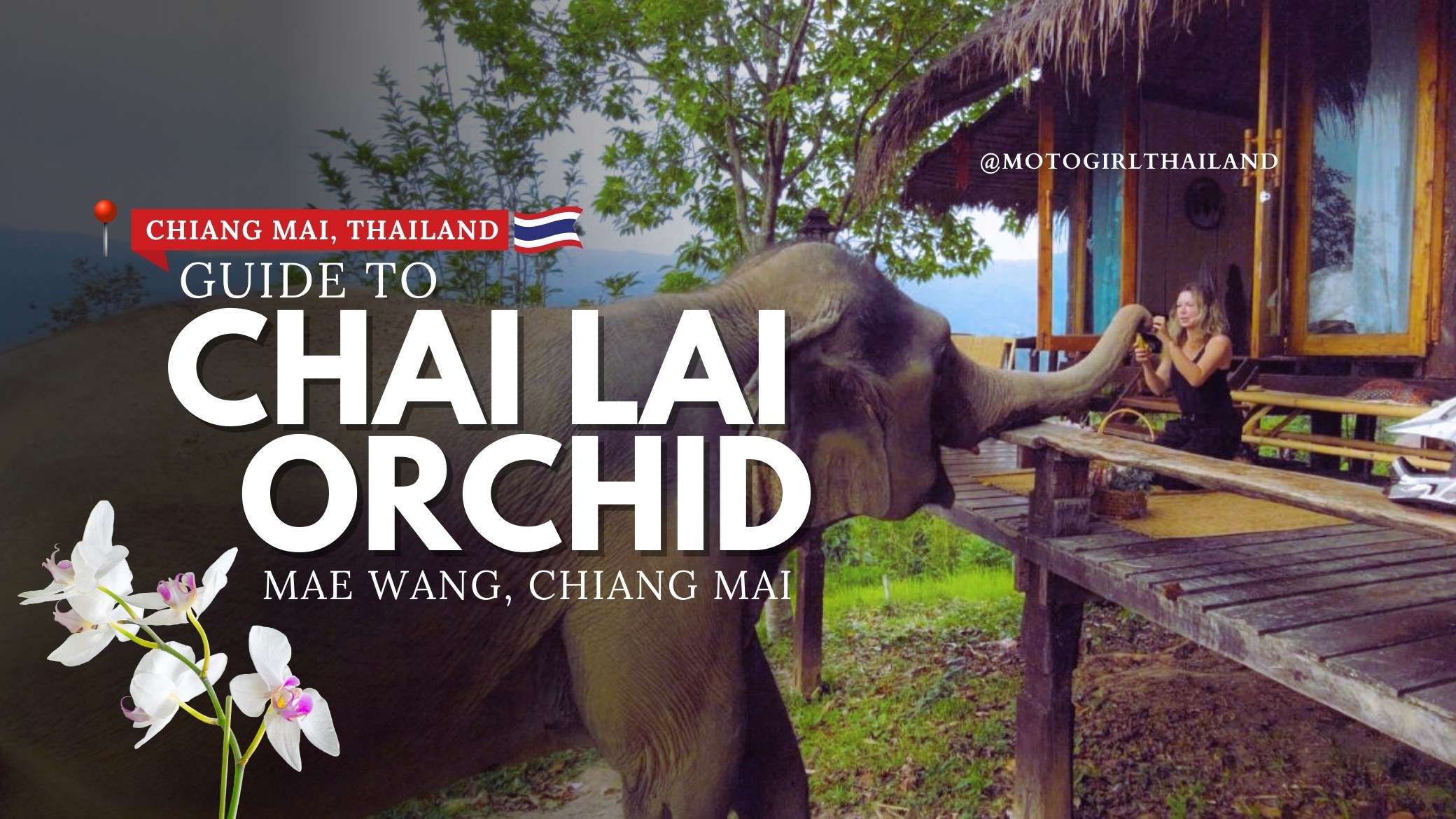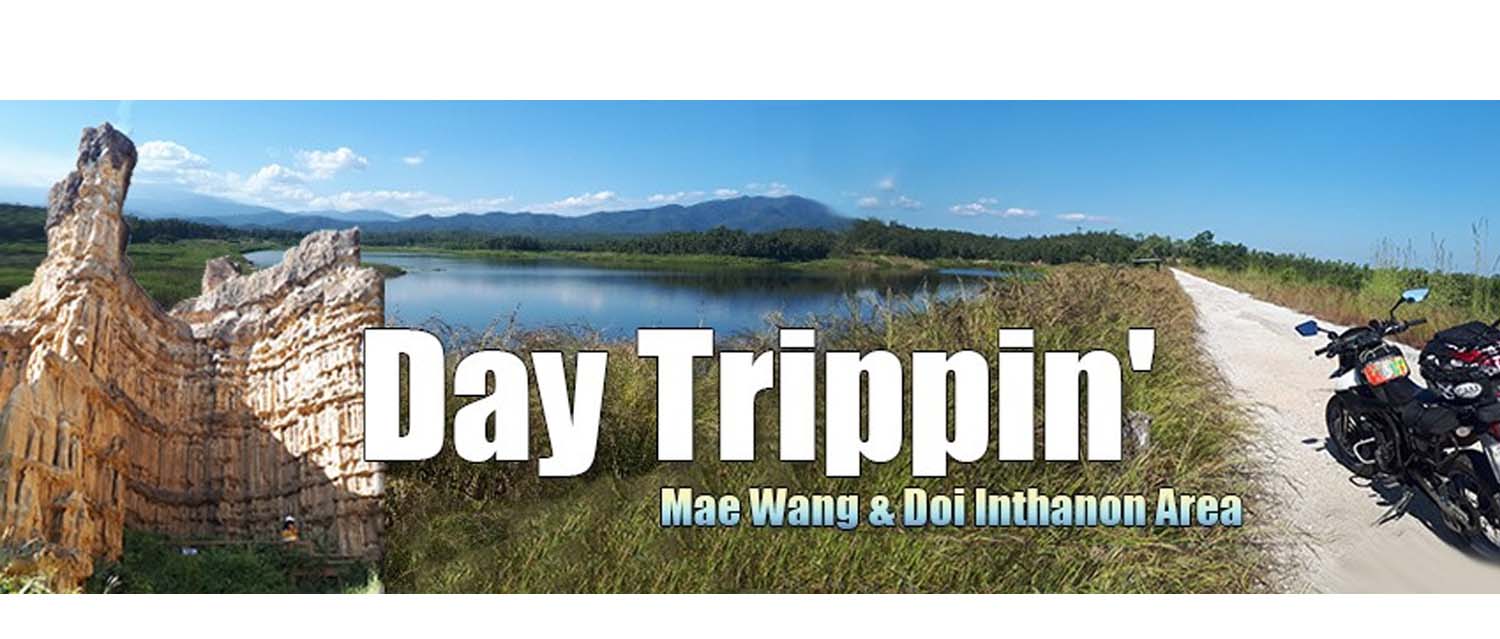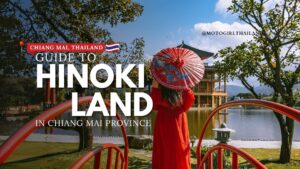Beyond the tourist trail is a hidden world of Chiang Mai temples tucked deep in the jungle, perched on misty hillsides, and rooted in ancient legends. These 20 lesser-known temples aren’t just photo ops—they’re peaceful, often mystical spaces that offer a more intimate, authentic glimpse into the region’s spiritual and cultural soul.
Please don’t copy or repost this content without credit. This guide is the result of over 20 years of exploring and living in the region. If you found it helpful, feel free to share directly from the original source, and don’t forget to follow, support, and spread the word — every bit helps keep the wheels turning at MotoGirlThailand.com. 🏍️✨

(Click dropdown)
Individuals with Mobility Issues: This guide provides helpful information for individuals with mobility challenges. The aim is to provide accurate details; however, please comment if any section needs to be changed or updated.
1: Wat Phra That Doi Nok
The stunning พระธาตุดอยนก./ Doi Nok Pagoda (named “Bird Mountain Pagoda” due to the many birds in this peaceful area) is a sacred place for the local Tai Lui Hilltribe people of Ban Mae Sap.
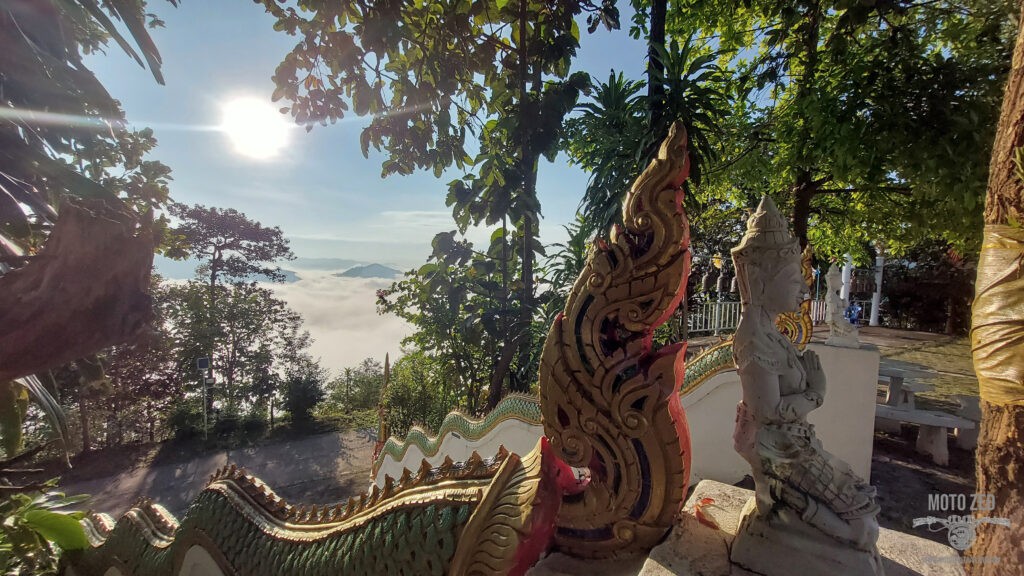
Details
- Location: 60 km from the City (map)
- Opening Hours: Daily, 6:00 AM – 6:00 PM
- Entry: Free (donations welcomed)
- Best Time to Visit: Early morning during the Rainy Season and Cool Season for a chance to witness the breathtaking sea of mist and clouds. What makes the temple special is the morning mist.
- Parking: Limited parking is available on the temple grounds via a short, narrow, and steep route. From the base of the temple route, follow the steep road to find a parking spot. Alternatively, drivers and riders can park at the base of the hill and climb 1,297 steps to the pagoda.
- Food/Drinks: Nothing is available at the temple, but eateries are dotted around en route.
- Disabled Access: Whilst not specifically designed with disabilities in mind, most could probably manage if parking at the top of the temple.
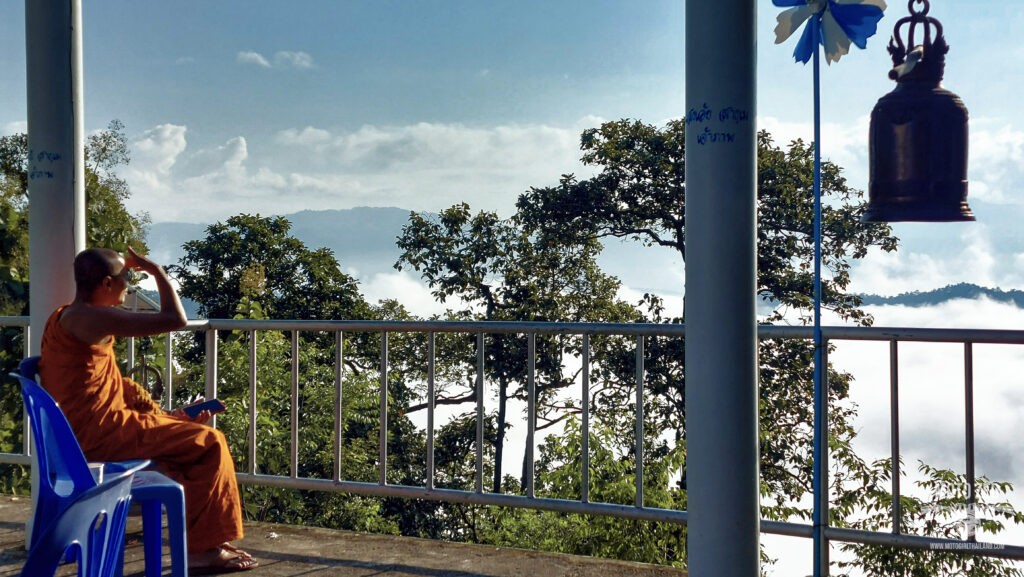
What makes Wat Doi Nok truly special is the breathtaking mountain view. If you time your visit well, especially early in the morning, you may witness a magical sea of mist gently lifting to reveal the stunning landscape below.

Historical and Cultural Aspects:
Wat Phra That Doi Nok is believed to have been established over 500 years ago, though much of its history has been obscured by time. The temple’s name, “Doi Nok,” means “Mountain of Birds,” which is a fitting reference to the temple’s location in a quiet and secluded area, surrounded by nature.
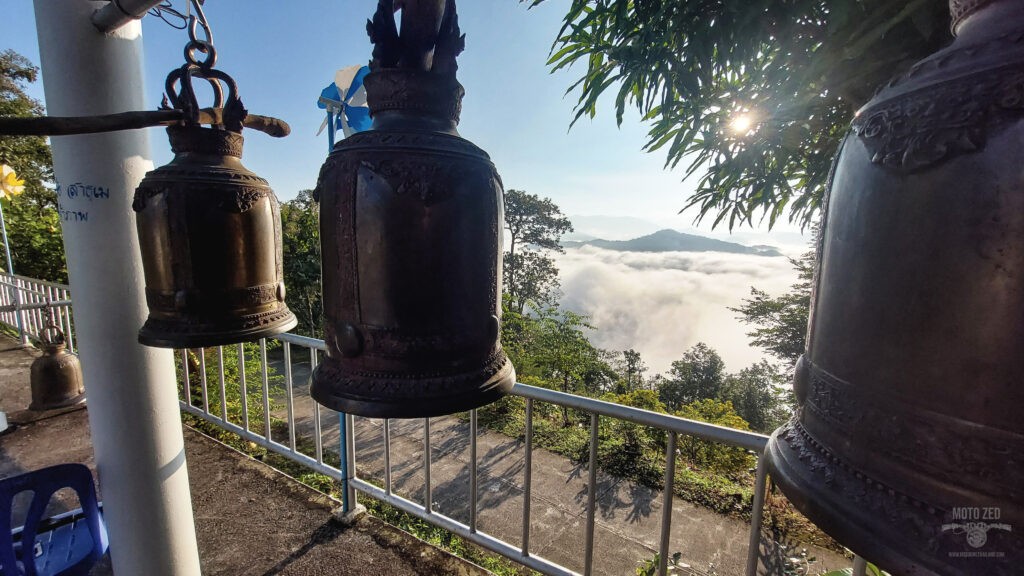
The temple is dedicated to Lord Buddha and holds a significant place for locals, who come to offer prayers and pay respects to the sacred relics housed in the temple.
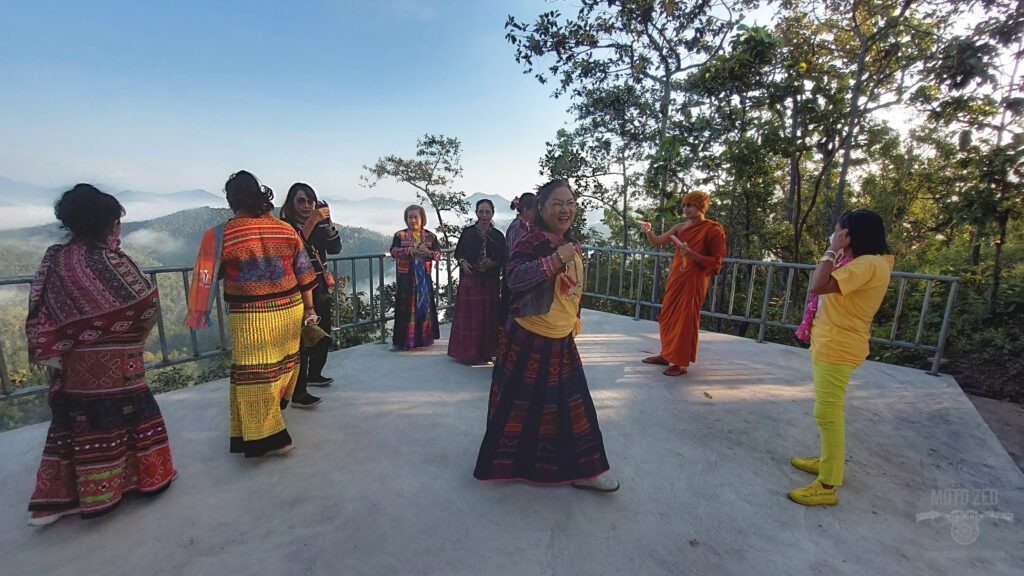
Architectural Features:
Wat Phra That Doi Nok features a traditional Lanna-style design, with a chedi (stupa) at the centre, surrounded by smaller structures and shrines. The chedi, believed to house important Buddhist relics, is a focal point of the temple.
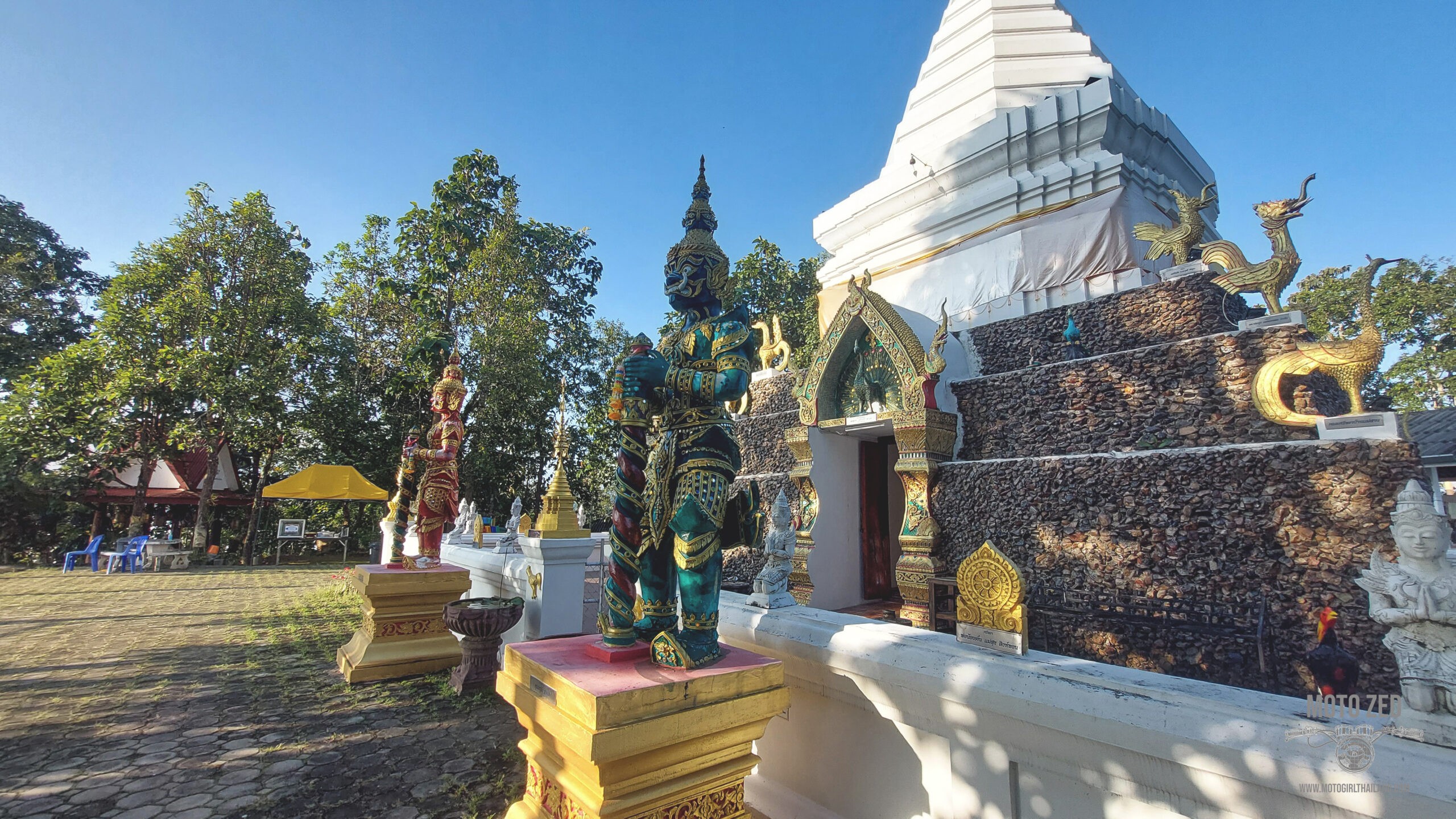
Additional Notes:
The journey to the temple takes you through lush forest surroundings and the natural beauty of the region.
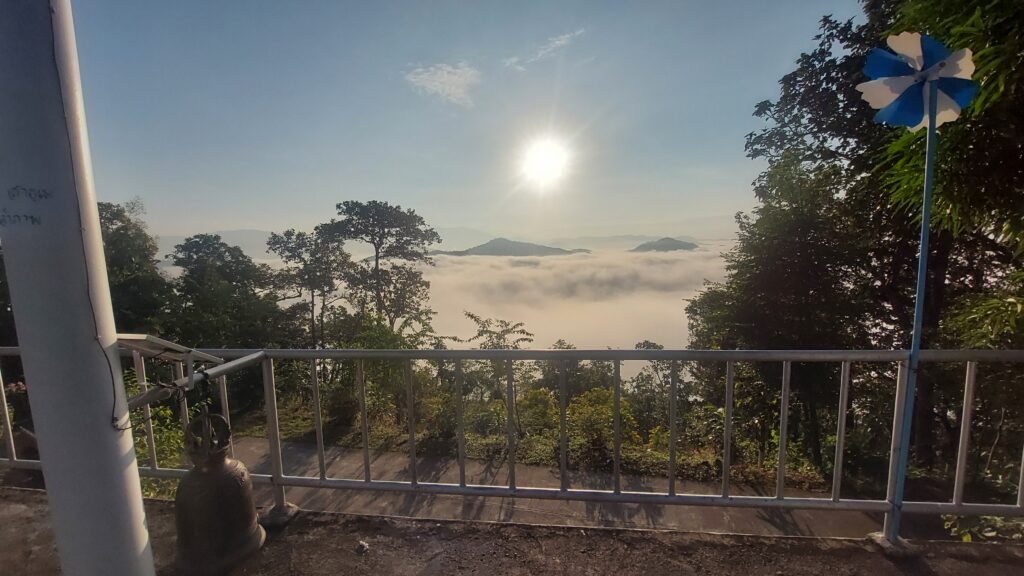
If you’re a nature lover and enjoy a more secluded, off-the-beaten-path experience, Wat Phra That Doi Nok provides an opportunity to connect with both the natural world and the spiritual heritage of Chiang Mai.
MotoSplore GPS Guide which includes this zone. – A pocket guide direct to your phone
2: Wat Phraphutthabat Si Roi
The sacred วัดพระพุทธบาทสี่รอย / Wat Phraphutthabat Si Roi in Mae Rim District is a revered pilgrimage site due to the four overlapping footprints of the Buddha, believed to be miraculously imprinted in stone.

Details
- Location: 50 km from the City (map)
- Opening Hours: Daily, 6:00 AM – 6:00 PM
- Entry: Free (donations welcomed)
- Best Time to Visit: Early morning for a peaceful experience and cooler temperatures.
- Parking: Parking is available on the temple grounds.
- Food/Drinks: A cafe eatery is available on-site.
- Disabled Access: Yes
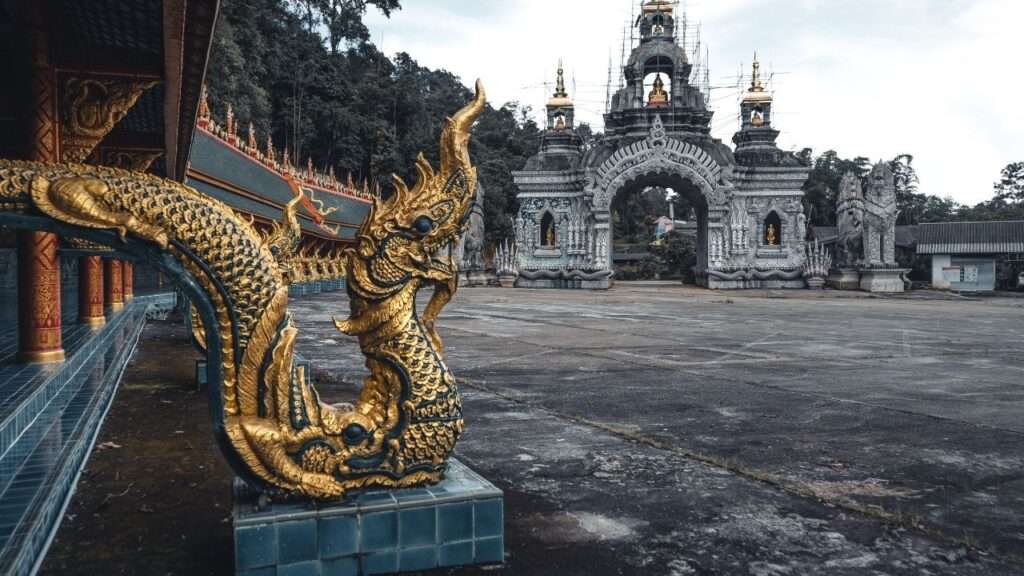
The temple’s name translates to “Temple of the Four Buddha Footprints,” and it holds deep significance for local Thai Buddhists, who journey here to make merit and pay respects.
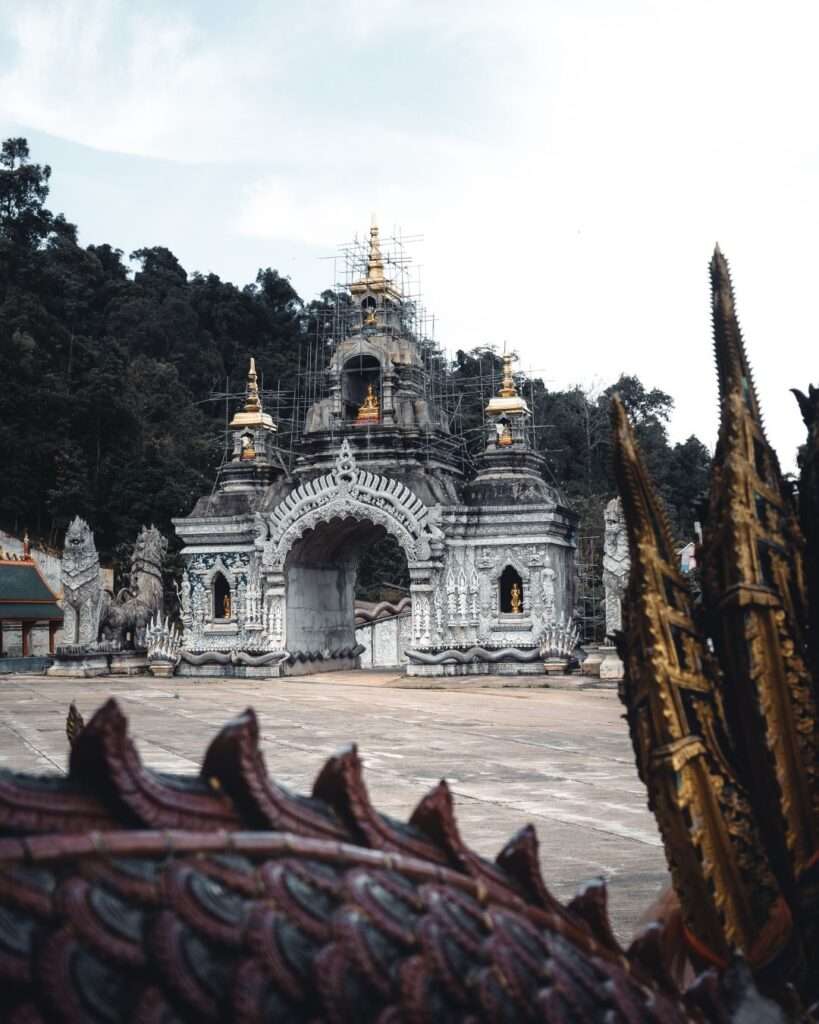
Historical and Cultural Aspects:
Wat Phraphutthabat Si Roi is steeped in spiritual lore and reverence, believed to have been established centuries ago as a sacred site marking the miraculous appearance of four Buddha footprints—stacked one atop the other—on a natural rock formation.
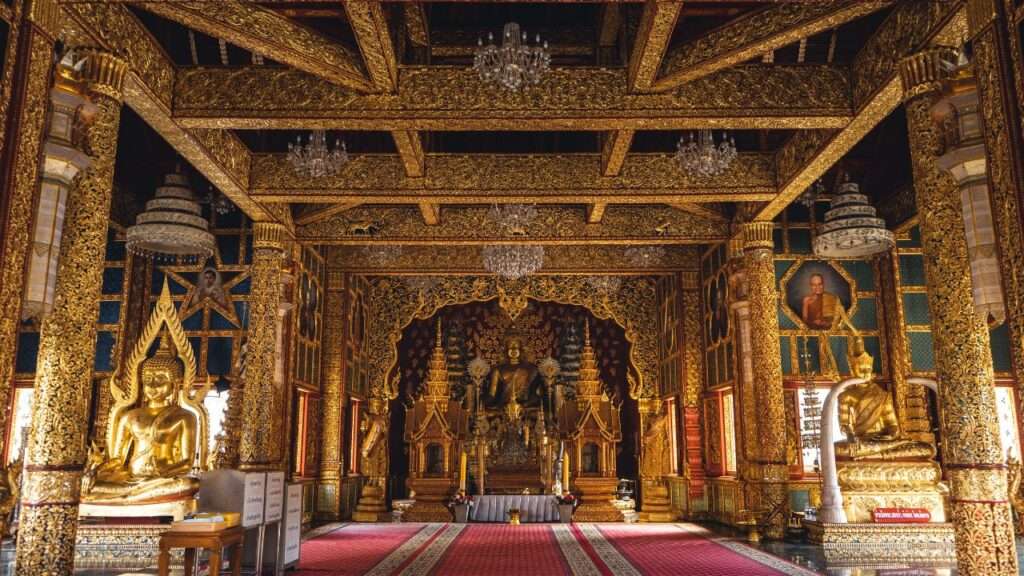
Architectural Features:
The temple blends traditional Lanna architecture with natural surroundings, creating a serene and majestic atmosphere. The complex is built along the slope of a forested hillside, with intricately carved wooden pavilions, colourful murals, and ornate Naga staircases leading visitors upward to the sacred Buddha footprints.

At its heart lies a serene shrine housing the four superimposed footprints, sheltered under a beautifully decorated pavilion that highlights the temple’s spiritual and architectural grace.
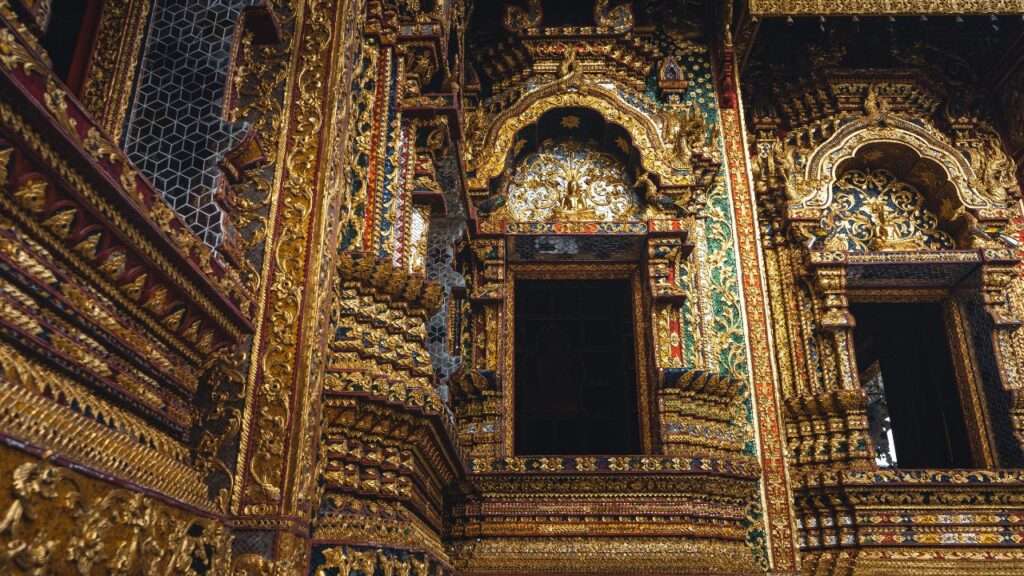
Upon arrival, visitors are welcomed by a calm, spiritual atmosphere and the sound of rustling trees. Wander through the hillside temple grounds, take in the intricate Lanna architecture, enjoy a coffee or bite to eat in the cafe on-site, and follow the stairway to the revered Buddha footprints.
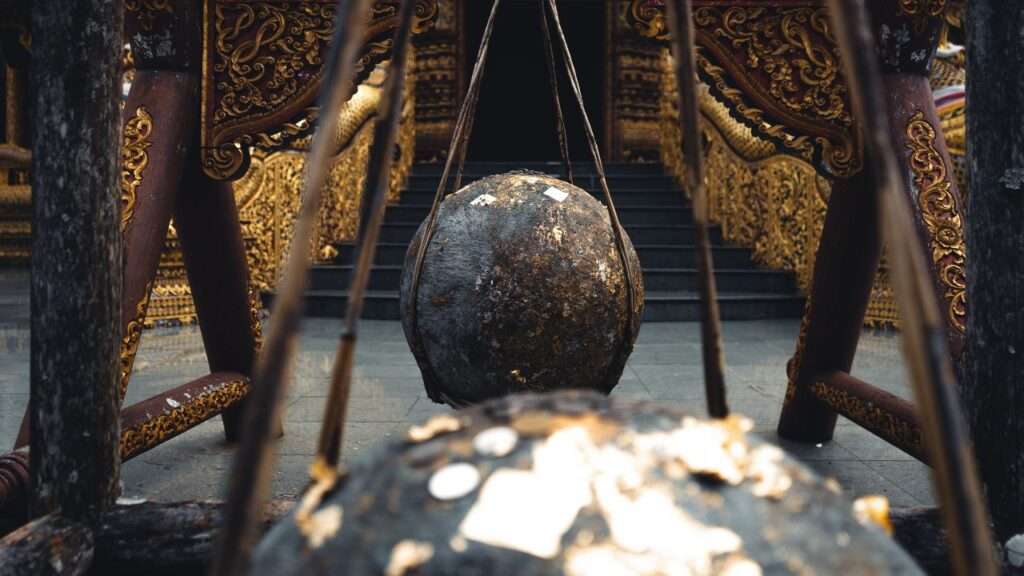
Additional Notes:
The scenic journey to Wat Phraphutthabat Si Roi is spectacular. The route winds through forested hills, quiet rural roads, and mountain landscapes.
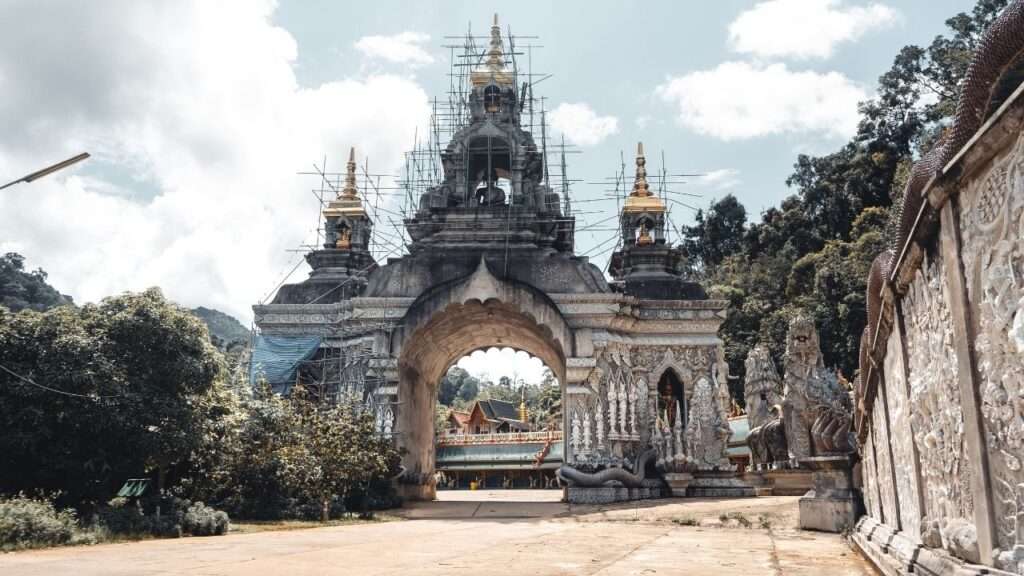
3: San Pa Gu Meditation Centre
สำนักปฏิบัติธรรมสันกู่ / San Pa Gu Meditation Centre in Mae Rim District stands out for its harmonious blend of natural beauty and spiritual simplicity. Unlike more frequented temples, this peaceful retreat remains largely untouched by tourism, offering visitors a rare chance to experience authentic Thai meditation culture in a serene, undisturbed setting.
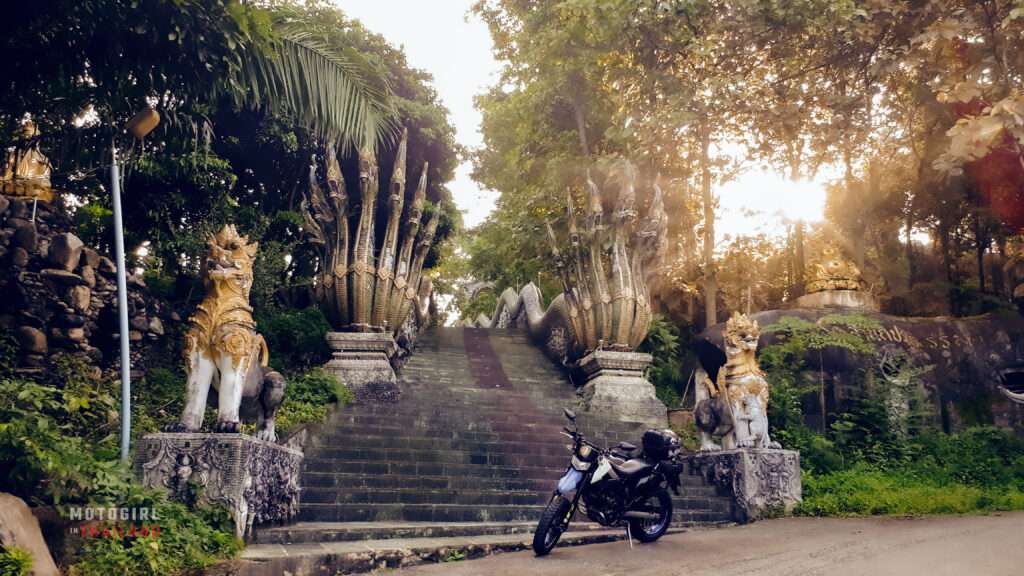
Details
Note: This meditation retreat has various sections. If you prefer not to walk up the steep stairway (and if you need a larger parking area), use this location. If you wish to see the beautiful stairway, the location is here.
- Location: 20 km from the City (Map)
- Opening Hours: Daily, 6:00 AM – 6:00 PM
- Entry: Free (donations welcomed)
- Best Time to Visit: Early morning for a peaceful experience and cooler temperatures.
- Parking: The parking area is at the top of the retreat (not at the base of the stairs). Stairway Location. / Main Entrance
- Food/Drinks: Noting on-site for visitors, but there are local eateries close by.
- Disabled Access: (To be confirmed)
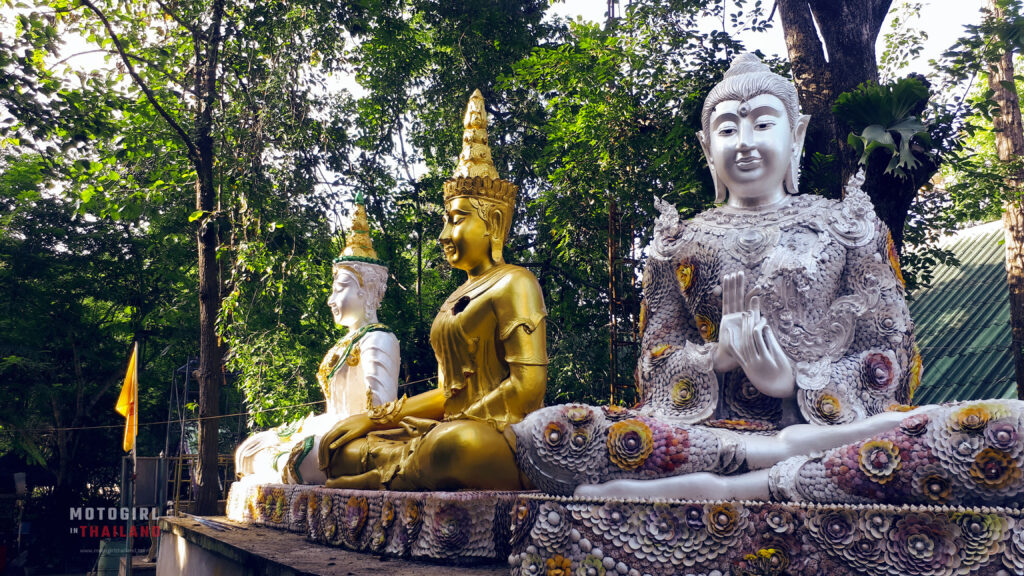
The serene San Pa Gu Meditation Centre is located in the tranquil outskirts of Chiang Mai city, offering a peaceful retreat for those seeking spiritual solace. It remains a lesser-known sanctuary for both locals and visitors and is ideal for quiet reflection and mindfulness practice.
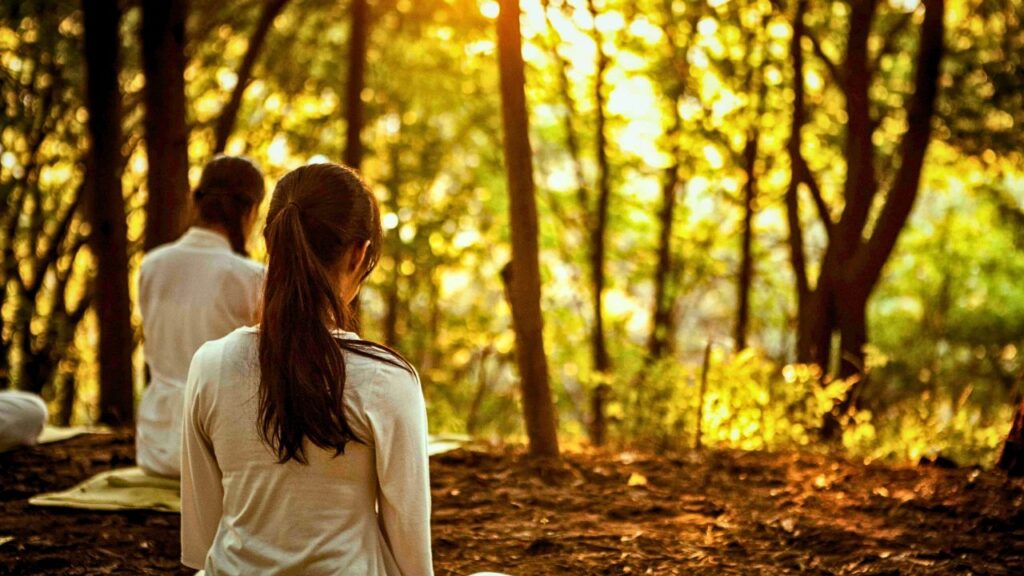
Historical and Cultural Aspects:
San Pa Gu Meditation Centre is a practising meditation retreat, emphasising traditional Buddhist teachings and mindfulness practices. Surrounded by nature, the centre provides an environment conducive to meditation and introspection.
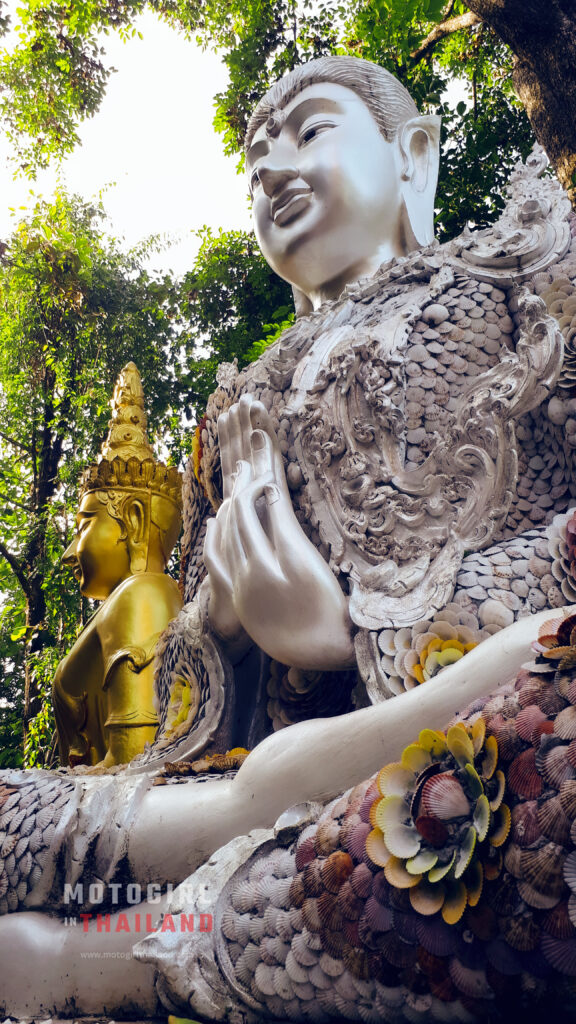
Architectural Features:
One of its most iconic elements is the long stairway lined with colourful Buddhist flags, leading upward toward the main meditation area. This symbolic ascent represents the path to spiritual elevation and mindfulness.
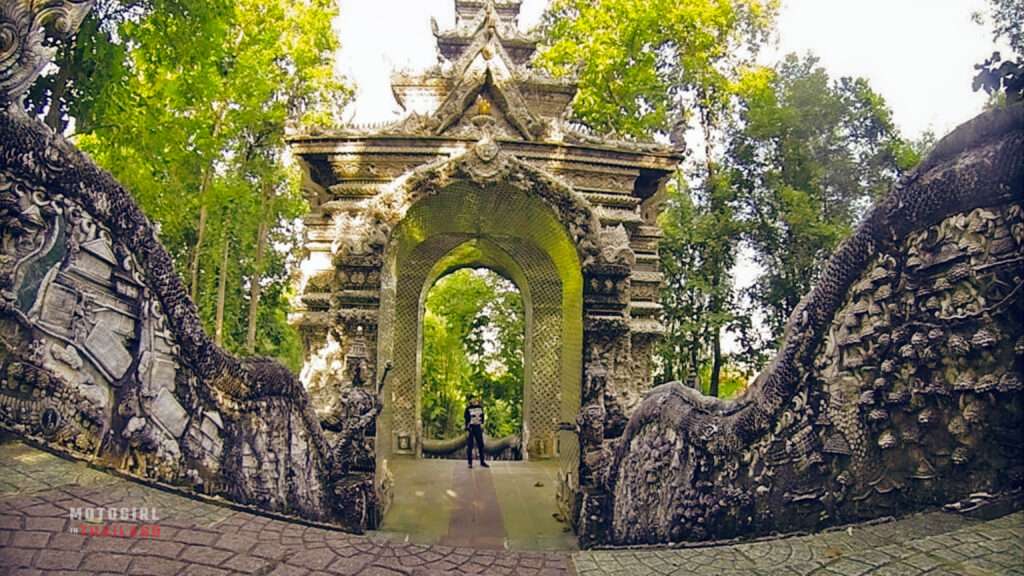
At the top of the stairs, you’ll find a simple meditation venue, built in a minimalist yet traditional northern Thai style. In the garden there are many Buddha statues, depicting various stages of the Buddha’s life and teachings.
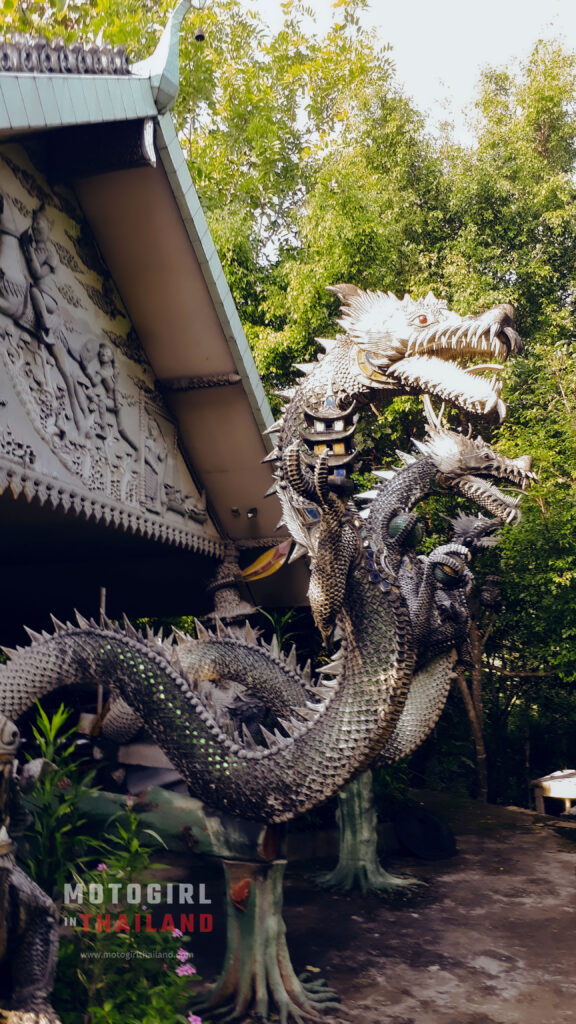
Small thatched-roof pavilions and shaded seating areas are scattered throughout the gardens, offering ideal spots for walking meditation or silent contemplation. The entire complex is designed to foster stillness, spiritual discipline, and a deep connection with the natural world.
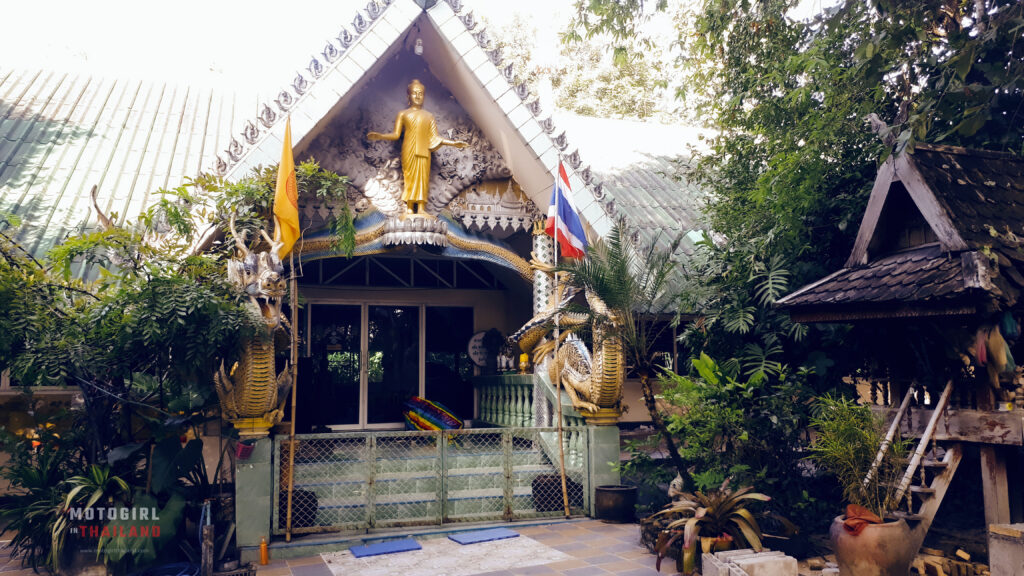
Architectural Notes:
The route to San Pa Gu eventually leads you through lush rice paddy fields lined with amazing cafes and eateries.
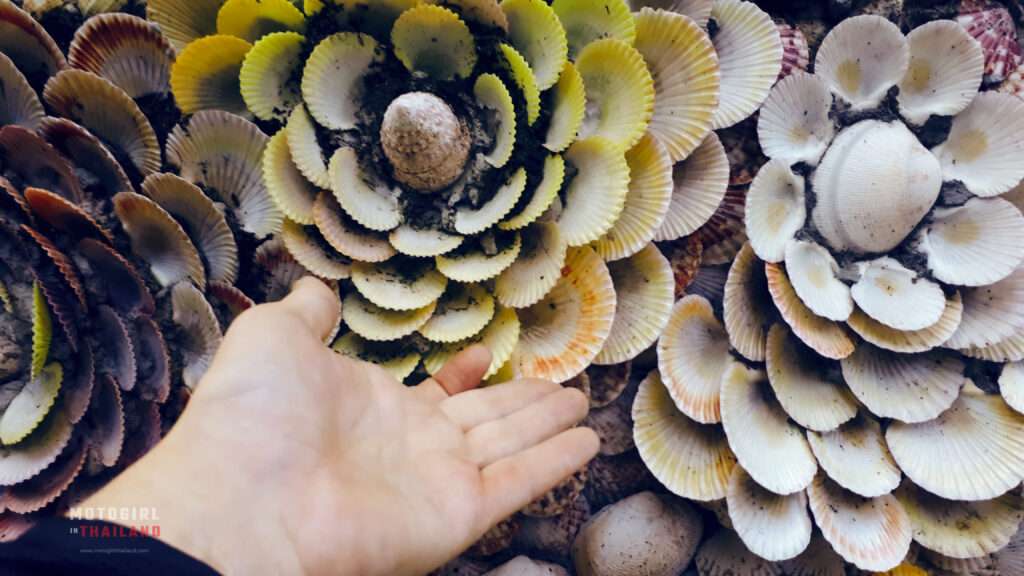
If you’re seeking a serene, off-the-beaten-path experience, San Pa Gu Meditation Centre offers a unique opportunity to connect with nature and the spiritual traditions of Chiang Mai.
4: Wat Doi Sapphanyu
วัดดอยสัพพัญญู / Wat Doi Sapphanyu in the Mae Wang areastands out for its harmonious integration of natural beauty and spiritual significance. Its off-the-beaten-path location ensures a tranquil atmosphere.
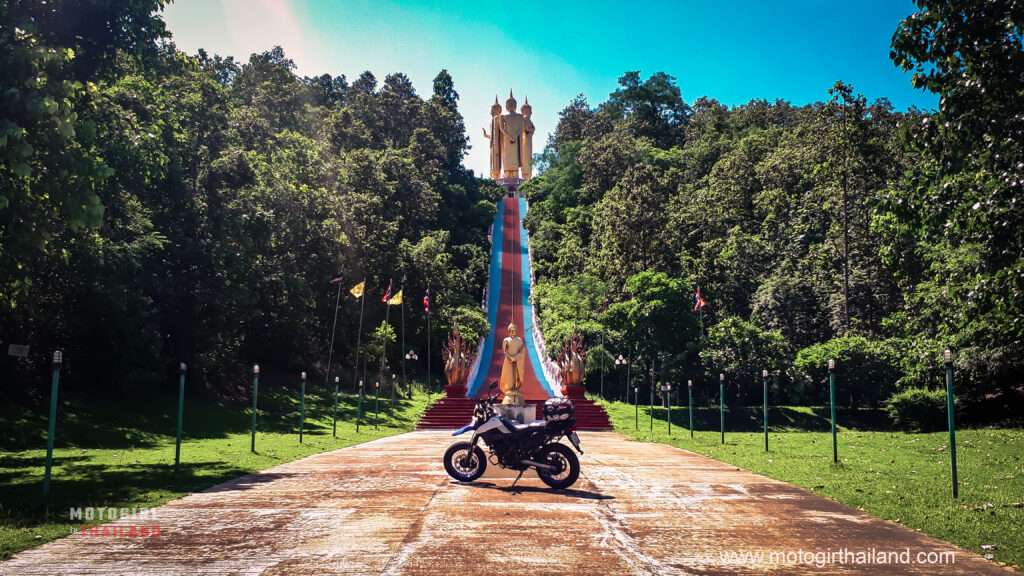
Details
- Location: 40 km from the City.
(Main Temple Map) / (Stairway Map) - Opening Hours: Daily, 6:00 AM – 6:00 PM
- Entry: Free (donations welcomed)
- Best Time to Visit: Early morning for a peaceful experience and cooler temperatures.
- Parking: Ample parking is available on the temple grounds near the stairs (and further up if you prefer not to walk up via the staircase).
- Food/Drinks: Nothing on site and limited facilities in this area; it’s advisable to bring water and snacks.
- Disabled Access: Yes. (Use the main temple map)
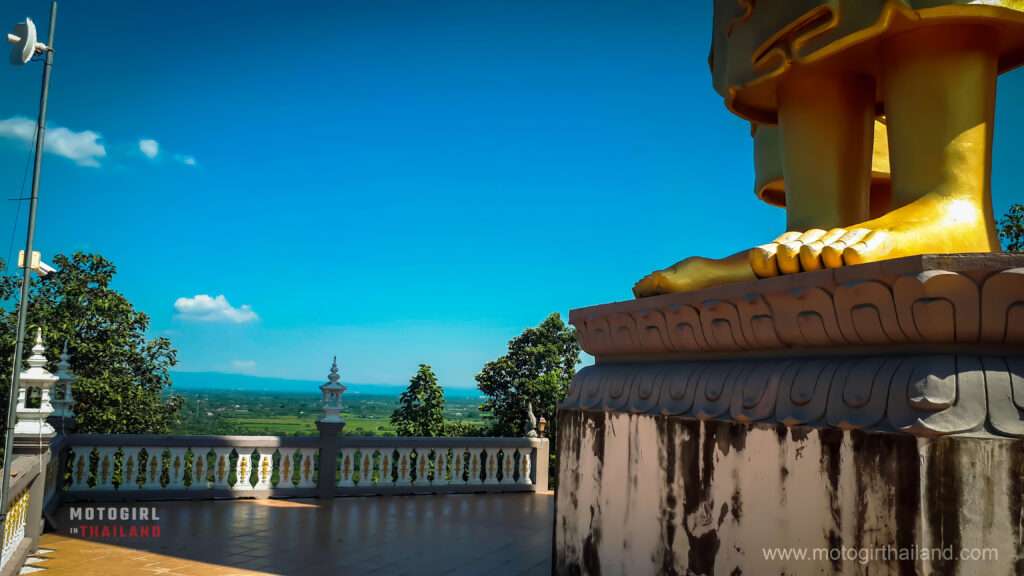
Wat Doi Sapphanyu, also known as Wat Nam Bo Tib, is tucked away in the lush hills of Mae Wang District. Perched atop a serene hill, the temple offers wonderful panoramic views of the landscape.
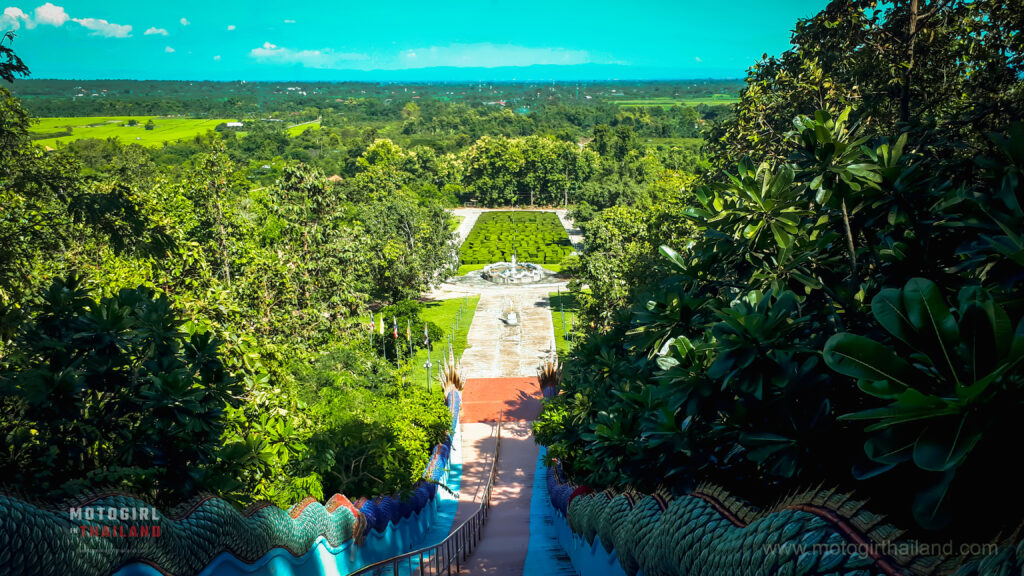
Historical and Cultural Aspects:
Originally established in the 14th century during the reign of King Kue Na of the Lanna Kingdom, the temple served as a significant religious and cultural centre. However, over time, it fell into disuse and was eventually left deserted.
In 1994, Wat Doi Sapphanyu was revitalised by Phra Ratcharat Rattanakorn, the former abbot of Wat Phra That Doi Suthep, along with dedicated supporters. This restoration transformed it into a vibrant spiritual centre, preserving its historical significance.
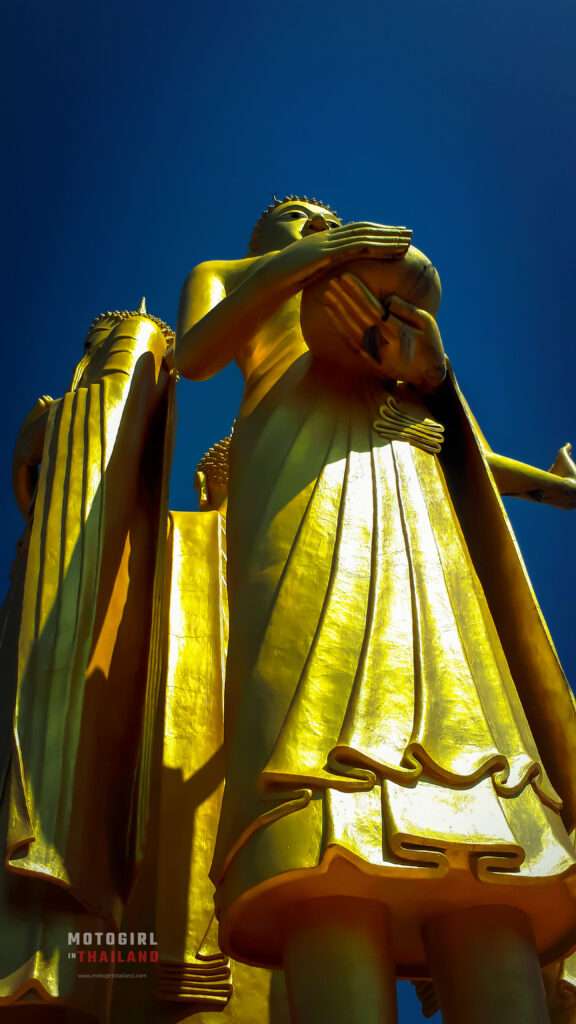
Architectural Features:
Wat Doi Sapphanyu showcases traditional Thai architectural elegance, highlighted by four giant standing Buddha statues, each facing a cardinal direction. These statues are not only remarkable for their size but also, you may see beehives nestled under their arms, adding a touch of natural wonder to the sacred site.
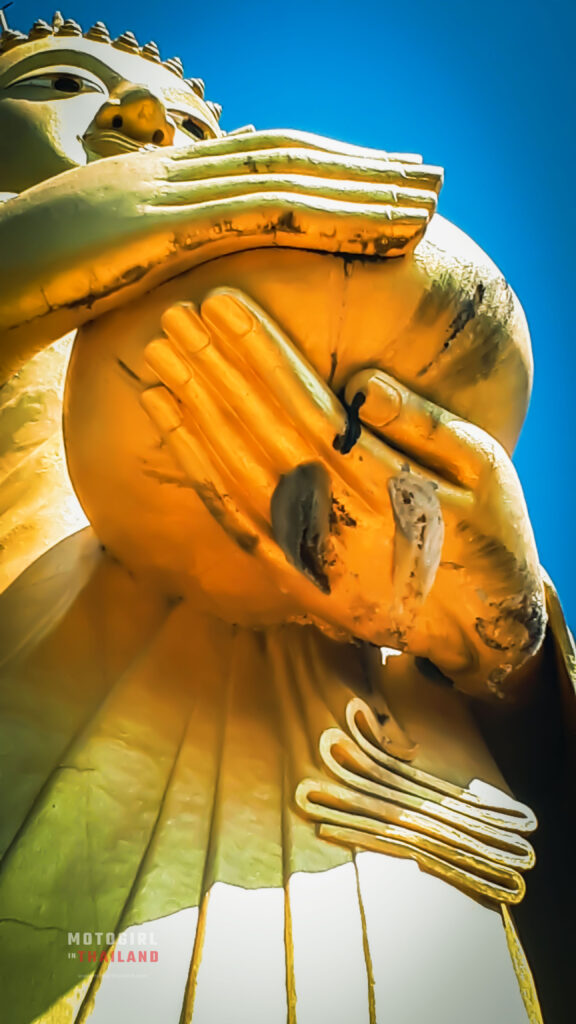
The three Buddhas together symbolise the continuity of the Buddhist teachings across time—past, present, and future. The three figures remind worshippers of the impermanence of the world and the enduring nature of enlightenment.
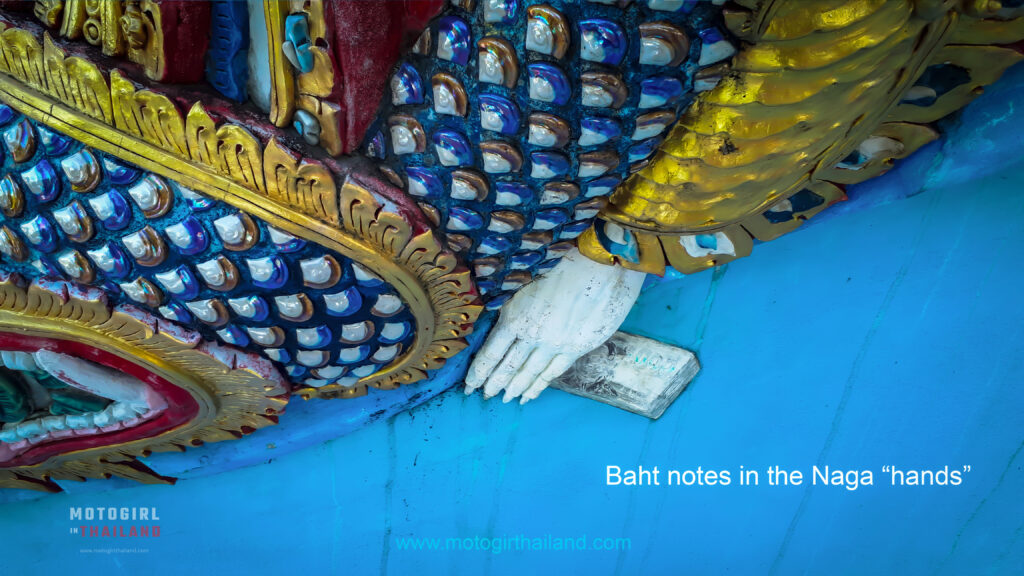
Additional Notes:
The journey to Wat Doi Sapphanyu takes you through scenic rural landscapes, culminating in a peaceful retreat away from the city’s hustle.
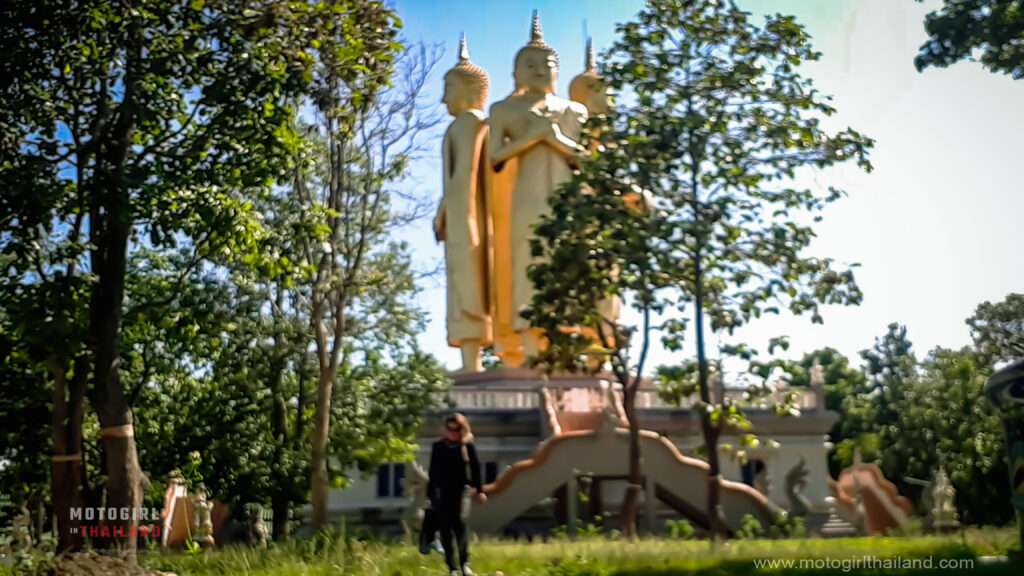
MotoSplore GPS Guide which includes this zone. – A pocket guide direct to your phone
5: Wat Phra That Sri Somdet
สำนักวิปัสสนาพระธาตุศรีสมเด็จพระพุทธชินวงศ์ / Wat Phra That Sri Somdet, (also known as Phra Buddha Chinwong), in Mae Wang, houses one of the more unusual and unique Buddha statues in the region.
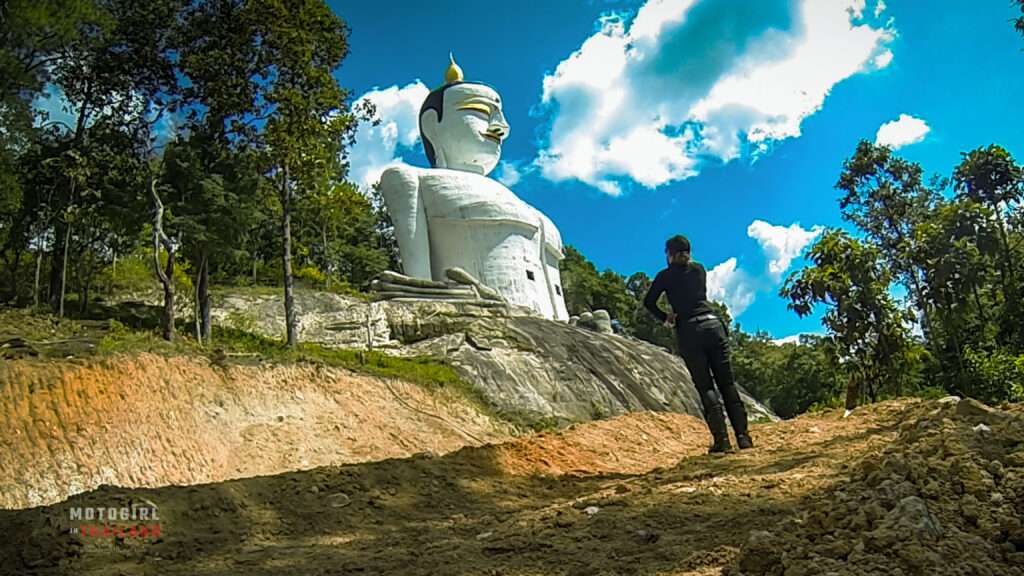
Details
- Location: 70 km from the City. (Map)
- Opening Hours: Daily, 6:00 AM – 6:00 PM
- Entry: Free (donations welcomed)
- Best Time to Visit: Early morning or late afternoon for cooler temperatures and a peaceful experience.
- Parking: available opposite the temple stairwell.
- Food/Drinks: Limited facilities; it’s advisable to bring water and snacks.
- Disabled Access: No
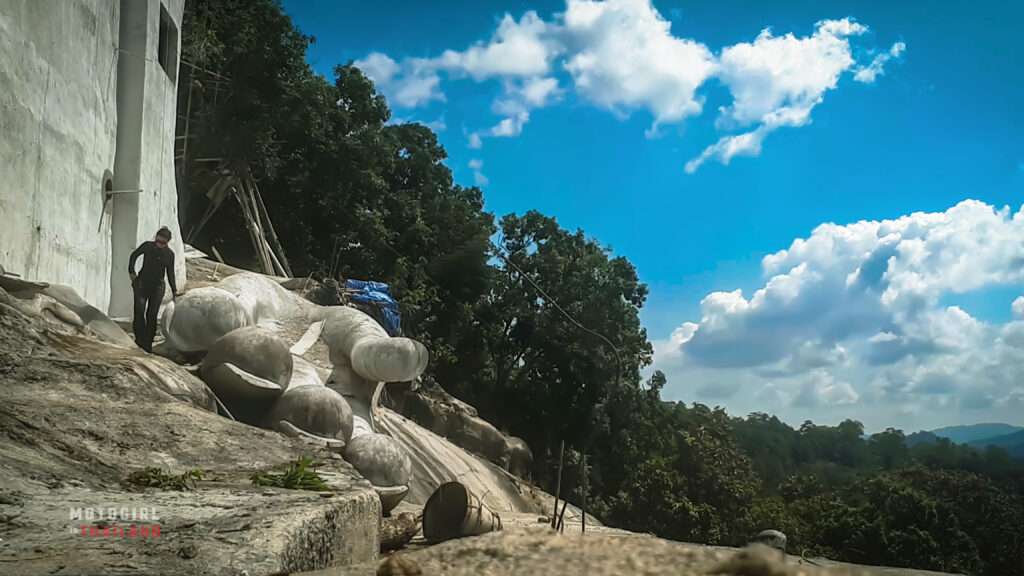
Wat Phra That Sri Somdet Phra Buddha Chinwong meditation centre with it’s specular colossal white Buddha statue, really needs to be seen to be believed.
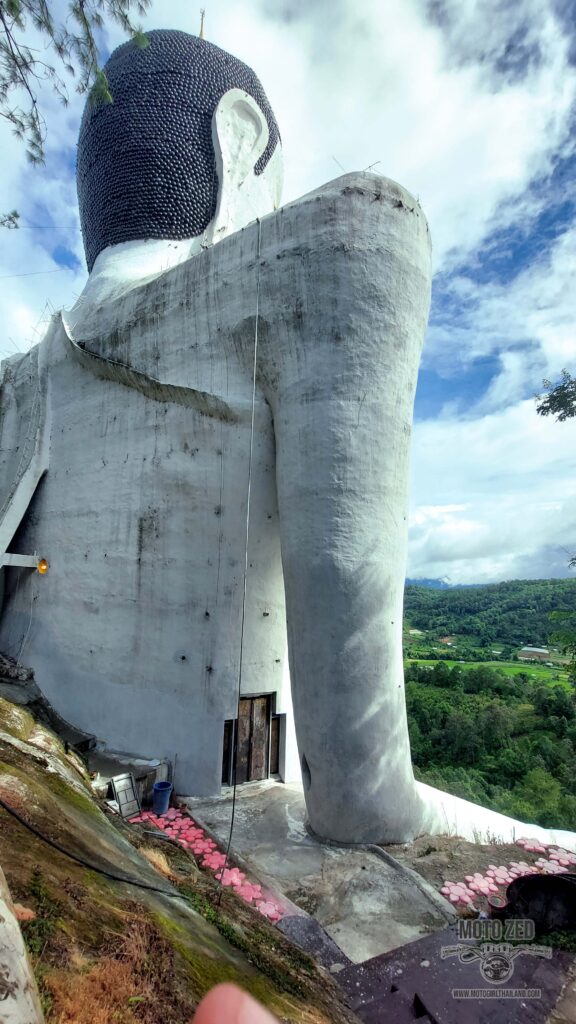
Side-note: I first spotted this Buddha statue from a distance when out exploring on my motorbike, but had no idea it would turn out to be so huge!
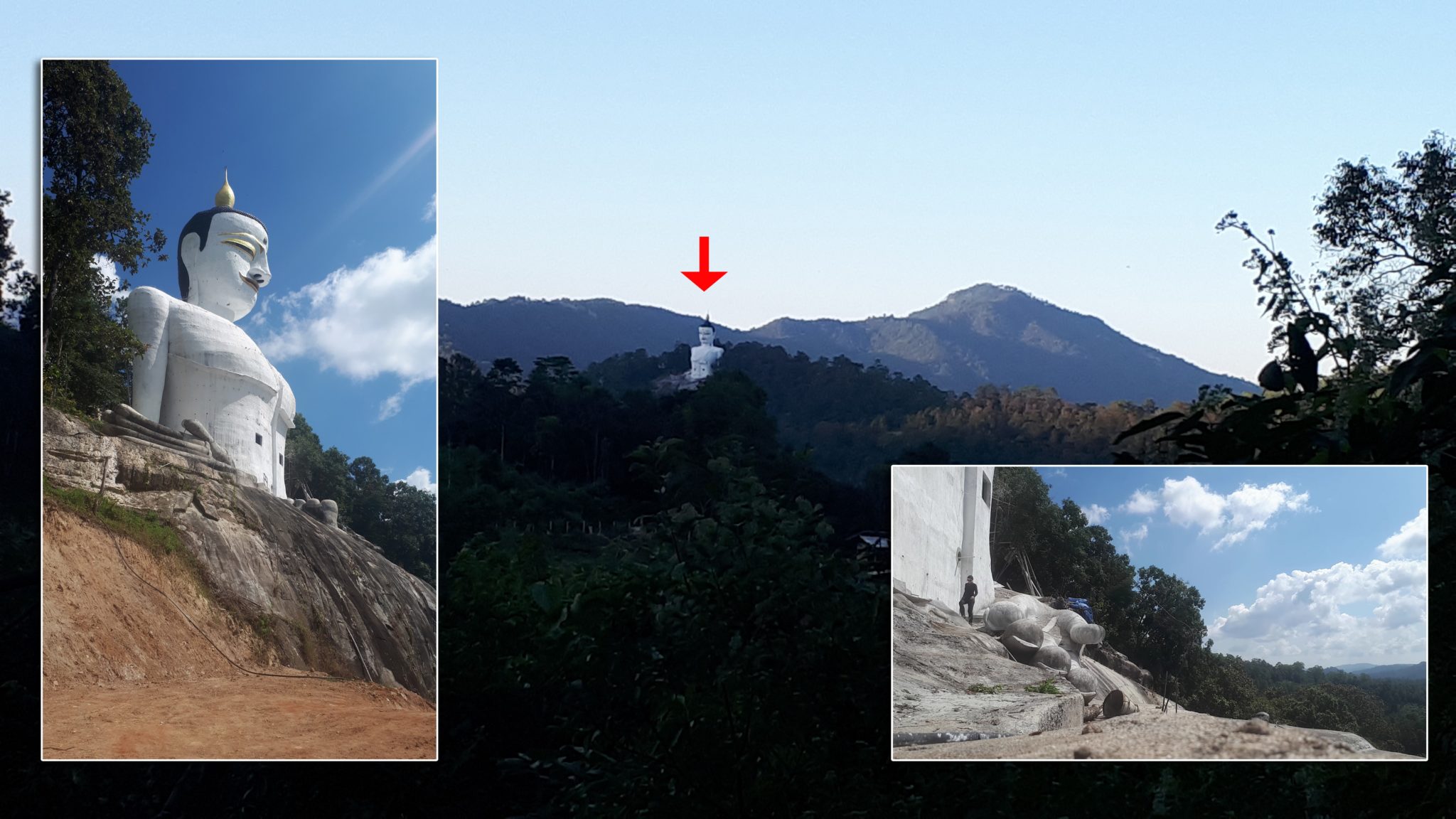
What makes this Buddha more interesting is that you can walk inside the statue. The interior is adorned with murals and sacred imagery, and often a resident artist is painting or restoring religious art, as this is an ongoing process. The murals depict interesting scenes from the Buddha’s life, and also, some fun superhero and Marvel characters mixed in, to entertain younger visitors
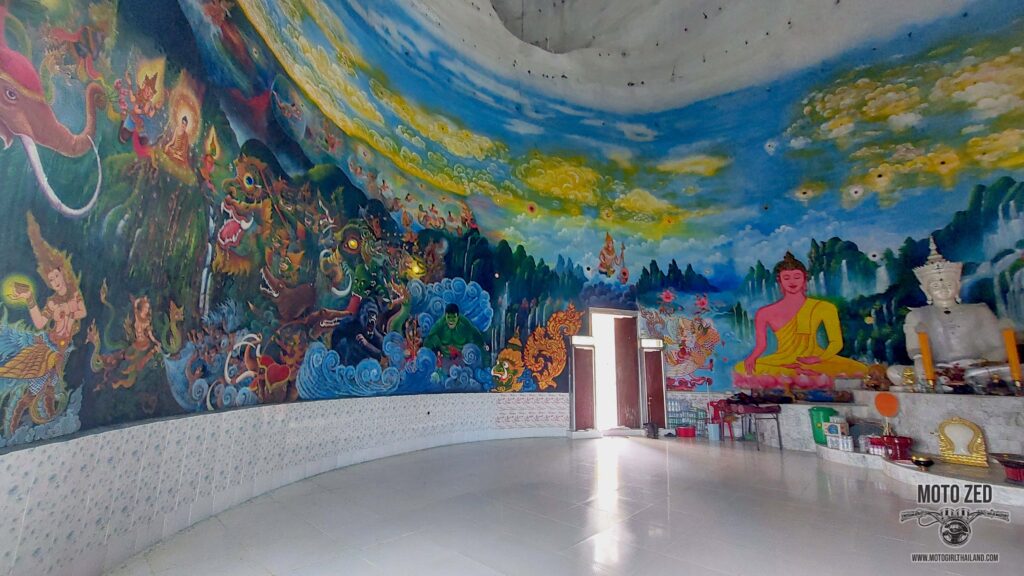
Historical and Cultural Aspects:
Established in 2012, the temple serves as a centre for Vipassana meditation, attracting practitioners seeking inner peace and mindfulness. The temple’s name reflects its dedication to the revered Thai monk, Phra Chinwong, and it has become a significant spiritual site for both locals and visitors.
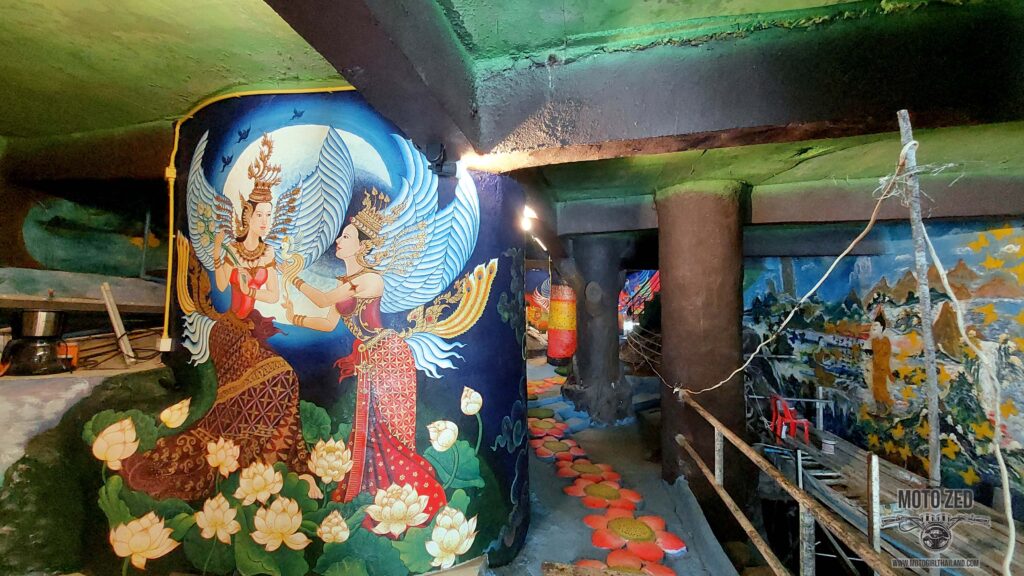
Architectural Features:
The ongoing development of the temple complex showcases the community’s commitment to preserving and promoting Buddhist teachings. The temple’s most striking feature is the giant white Buddha statue.. The statue’s immense size and pristine whiteness make it a captivating sight against the backdrop of greenery.

Additional Notes:
The back journey to Wat Phra That Sri Somdet Phra Buddha Chinwong takes you through picturesque rural landscapes via a thrilling twisty route. Upon arrival, visitors are greeted by the temple’s serene ambience, the gentle sounds of nature, and breathtaking panoramic views.
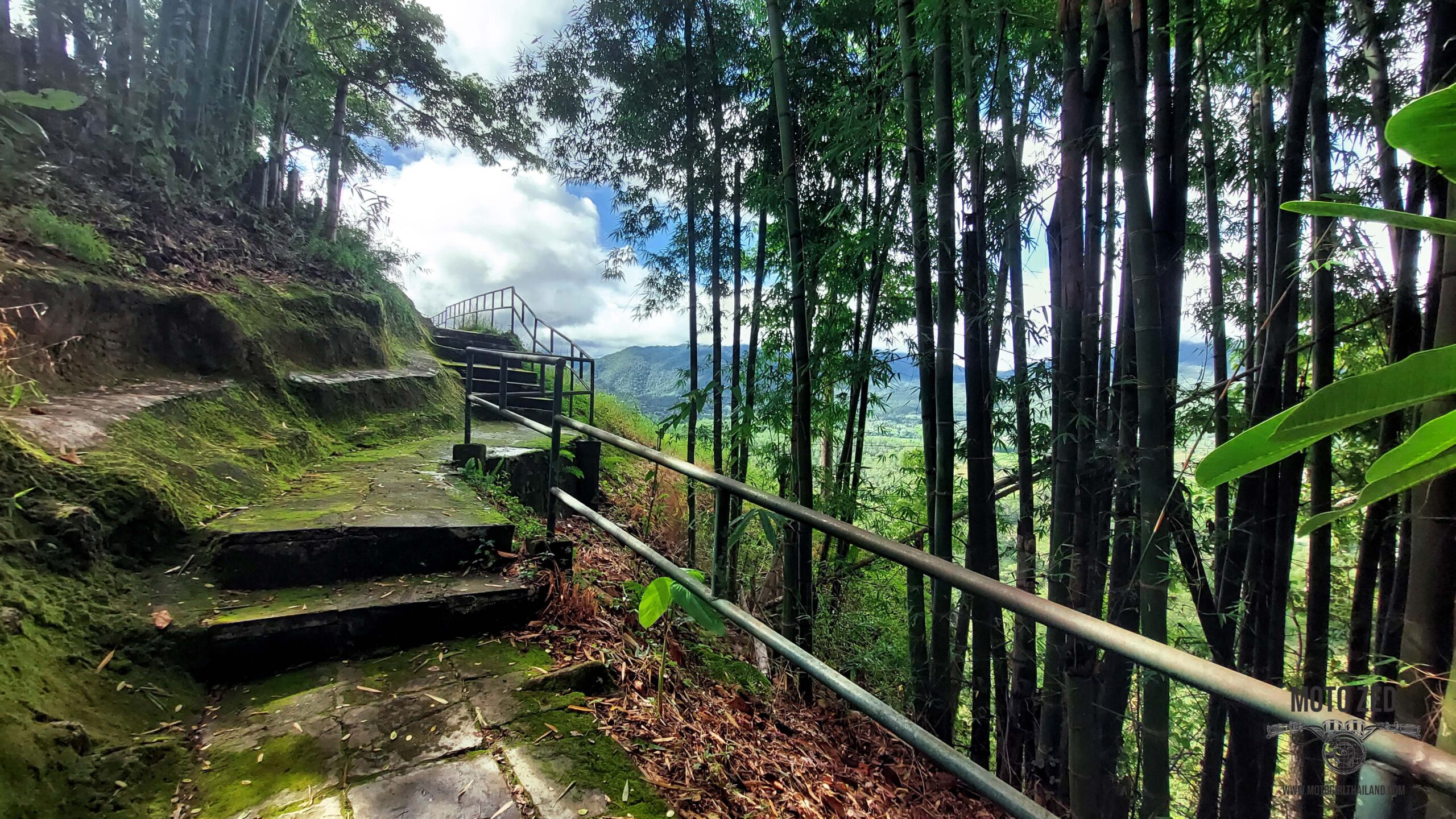
There are several steep and sometimes slippery steps to the temple, so best to wear grippy shoes and bring water.
The temple Facebook page illustrates the ongoing work for producing this incredible statue.
MotoSplore GPS Guide which includes this zone. – A pocket guide direct to your phone
6: Wat Sukhavati
วัดสุขาวดี / Wat Sukhavati (also known as Cực Lạc Cảnh Giới Tự) is an unusual and surprising Vietnamese Mahayana Buddhist temple hidden away in the hills of Samoeng District, Chiang Mai. When you enter the temple grounds, it is like entering Narnia. From the outside, you could not imagine that the unassuming lane could lead to this 7-hectare sanctuary.
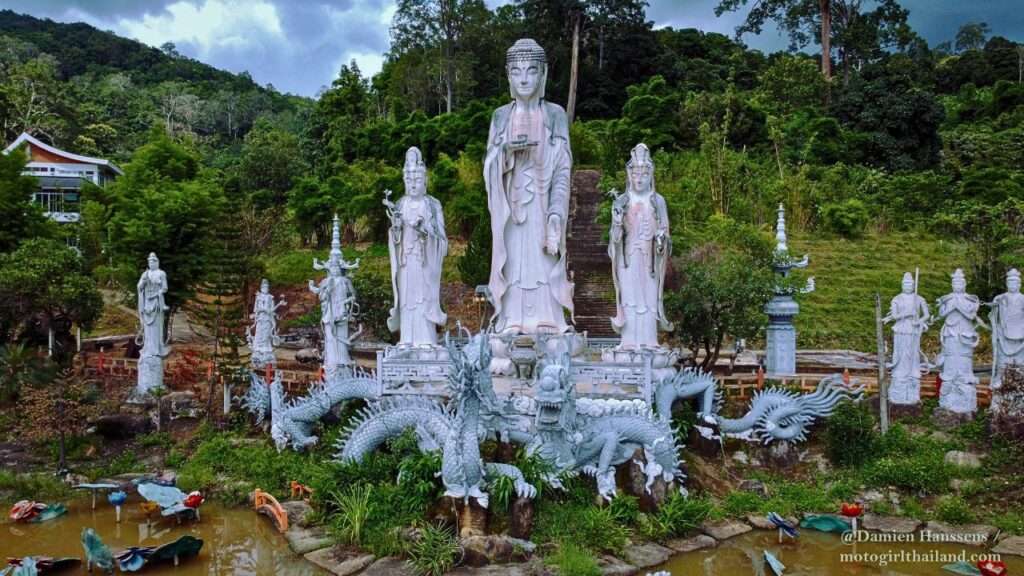
Details
- Location: 60 km from the City. (Map)
- Opening Hours: Daily, 6:00 AM – 6:00 PM
- Entry: Free (donations welcomed)
- Best Time to Visit: Early morning or late afternoon for cooler temperatures and a peaceful experience.
- Parking: available opposite the temple stairwell.
- Food/Drinks: Nothing within the grounds and limited facilities nearby; it’s advisable to bring water and snacks. There are, however, great eateries further out.
- Disabled Access: Whilst not specifically designed with disabilities in mind, there does appear to be reasonable access.
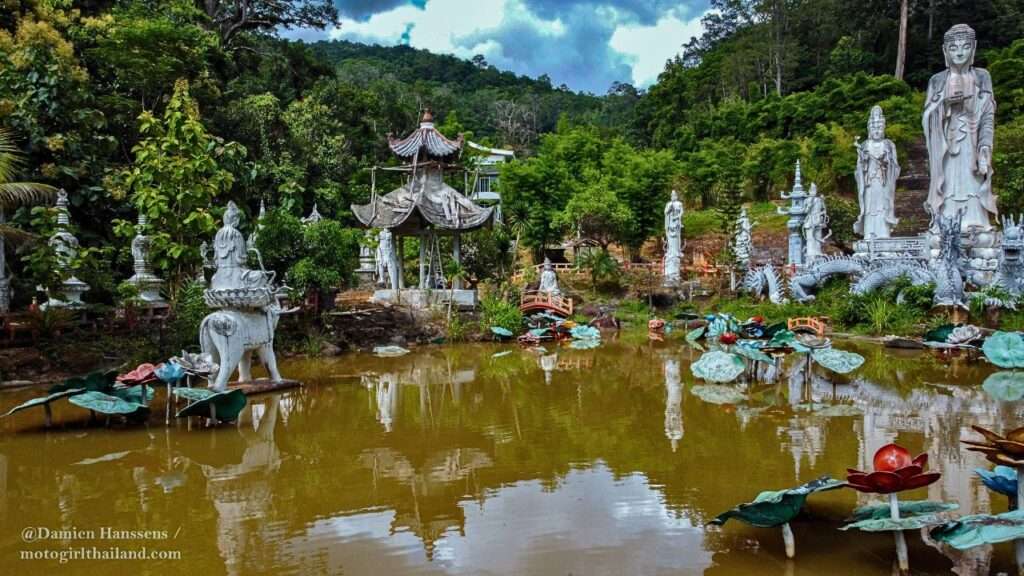
Founded in 2005 by Vietnamese monk Thích Hạnh Nguyện, the temple was created as a spiritual retreat and meditation centre for practitioners of Pure Land Buddhism.
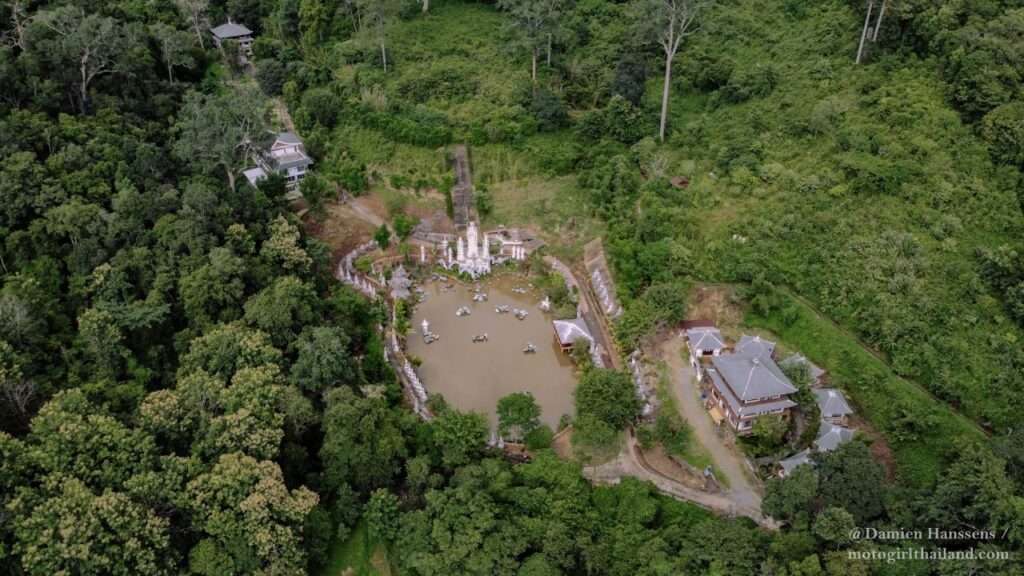
I came across this truly hidden gem a few years ago while out exploring the area on my bike. At the time, the temple was in a state of disrepair, but it’s been heartening to see it lovingly growing since then. It’s become a special place to me, and I’m quietly proud to have helped bring a little more attention to this beautiful sanctuary.
Historical and Cultural Aspects:
Wat Sukhavati was founded as a sanctuary for both monastic and lay practitioners following the teachings of Amitabha Buddha (Phật A Di Đà). Its name, “Sukhavati,” refers to the Western Pure Land in Mahayana belief — a peaceful realm where enlightened beings guide devotees toward liberation.
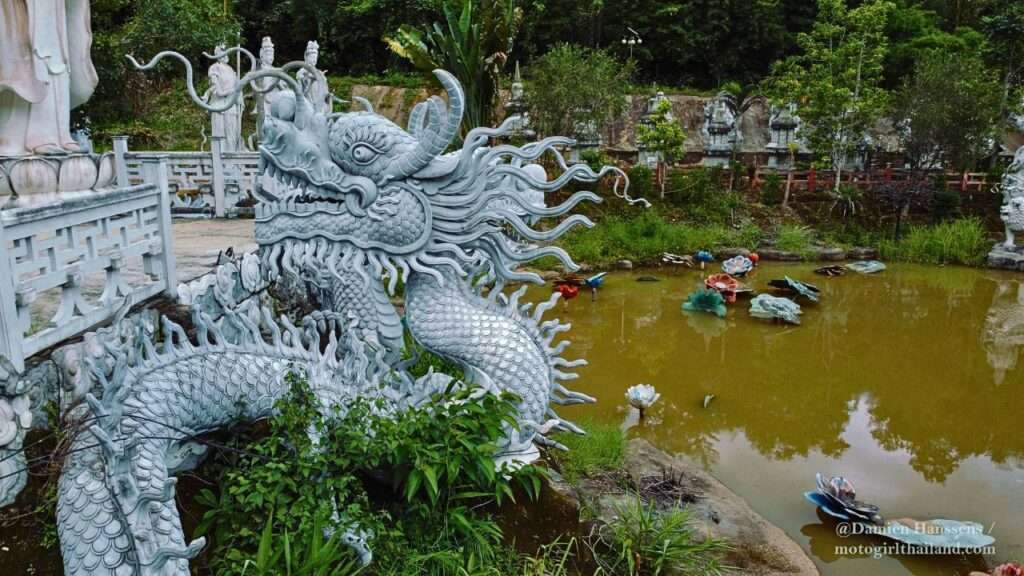
Architectural Features:
Wat Sukhavati’s striking Vietnamese Mahayana Buddhist architecture is designed to harmonise spiritual elements with the natural mountain landscape.
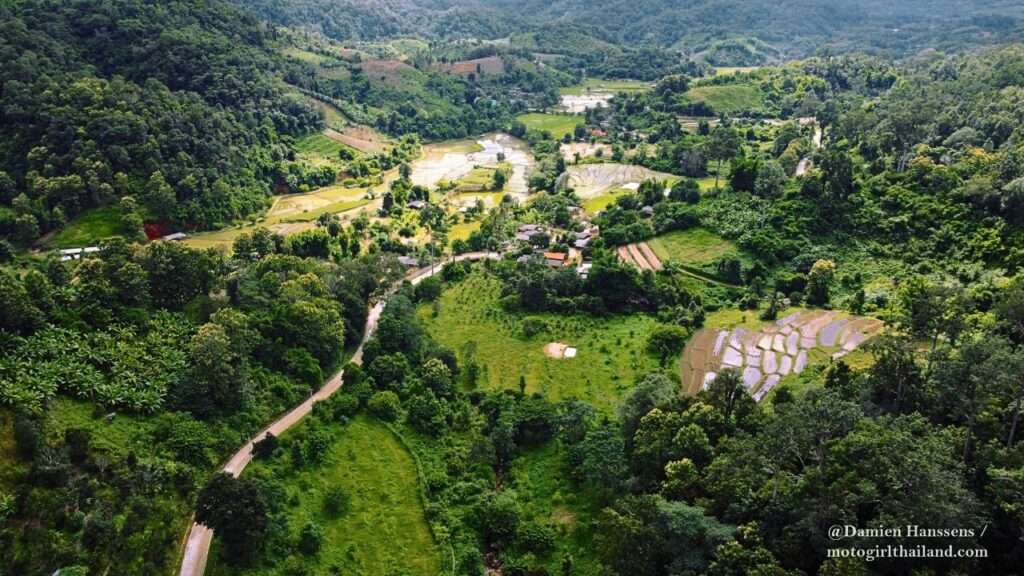
One of its most captivating features is the large symbolic lotus pond representing purity, spiritual awakening.
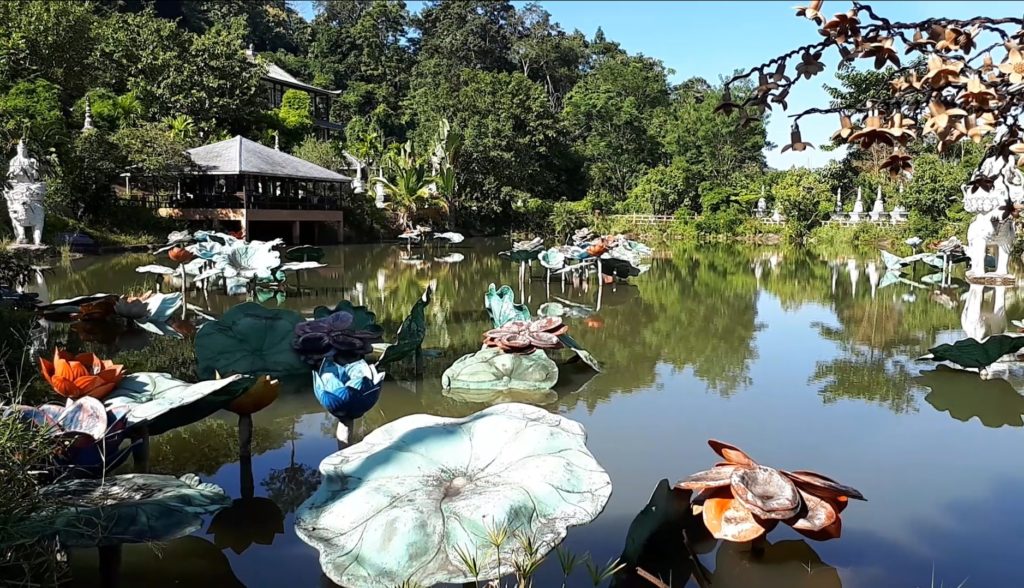
The temple also harnesses solar power for several features, including the pond, which is gently illuminated at night by soft solar lighting.
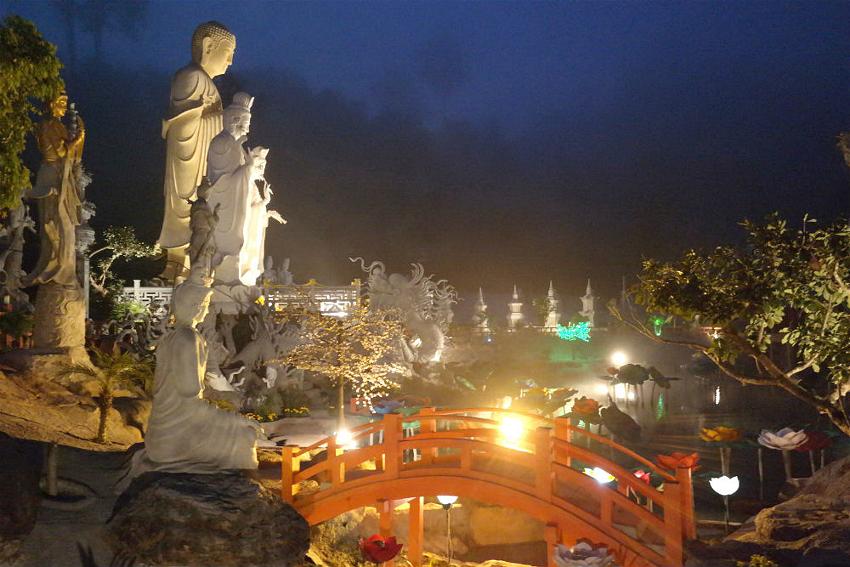
Towering white statues which surround the pond illustrate the Buddha’s journey to enlightenment, while soft background recordings of sacred chants and stories add depth and atmosphere to the experience.
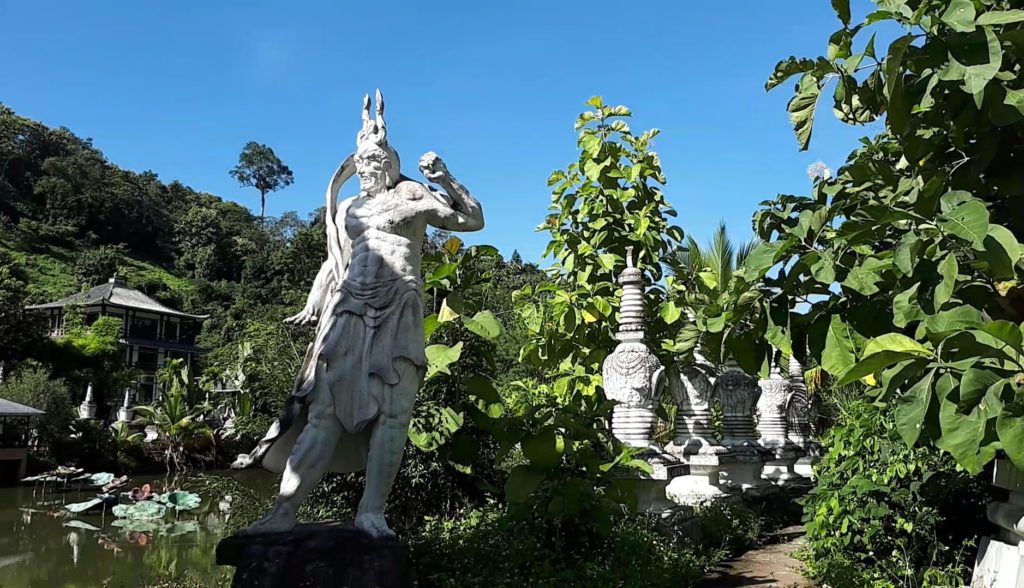
The temple also includes dedicated accommodation areas and a spacious meditation hall. While visitors are welcome, it’s important to ask permission before entering the hall.
Additional Notes:
The entranceway is hard to spot. You may think the GPS location is wrong. Look for the white sign and follow the narrow path to the temple gates. Once inside, you may encounter monks or volunteers engaged in daily activities, and it’s not uncommon to witness chanting or mindfulness practices taking place. Keep in mind that they may not wish to engage with visitors.

Note that on special observance days, the main gates may be temporarily closed. If so, you’ll need to plan a return visit — thankfully, the journey itself is an enjoyable one, with plenty of other places to explore in the surrounding area.
7: Loha Prasat Sri Mueang Pong
Perched atop a forested hill in the Hang Dong District, stands โลหะปราสาท พระธาตุศรีเมืองปง / Loha Prasat Sri Mueang Pong, (known also as Wat Ban Pong), — a serene temple complex, renowned for its striking White Pagoda. This gleaming white and gold temple was constructed over 15 years. It enshrines an ancient stupa and features a three-tiered design with 120 spires, symbolising core Buddhist principles.
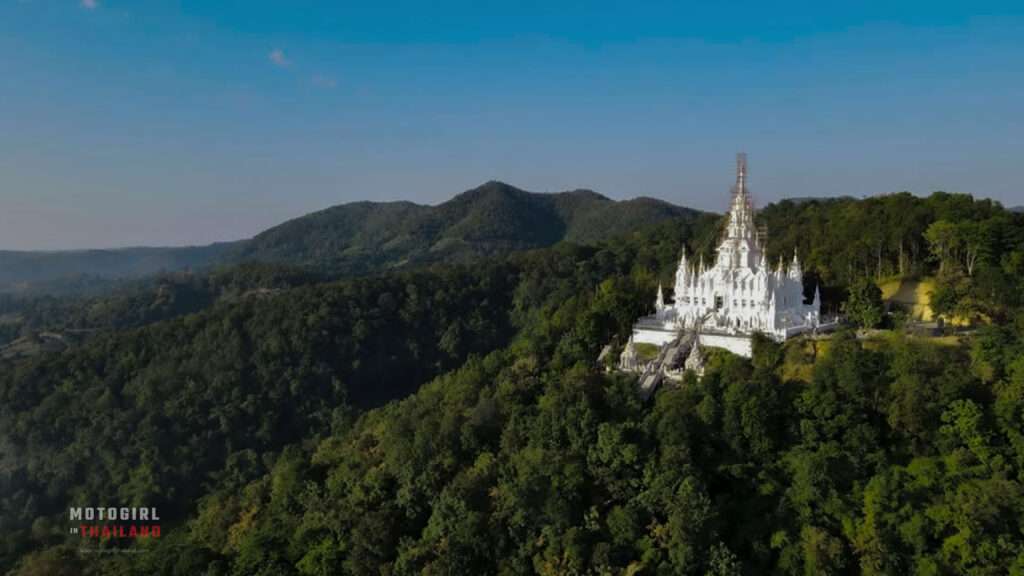
Details
- Location: 20 km from the City. (Map)
- Opening Hours: Daily, 8:00 AM – 6:00 PM
- Entry: Free (donations welcomed)
- Best Time to Visit: Early morning or late afternoon for cooler temperatures and softer lighting.
- Parking: Available at the base of the temple (Wat Ban Pong); limited parking near the summit. (Visitors can reach the site by ascending a serene 900-step staircase or driving up a winding road, both offering panoramic views of the surrounding landscape. You can also park at the base temple and use one of the red songtaew trucks to take you up to the summit.)
- Food/Drinks: There may be vendors on-site, however, it is advisable to bring water and snacks
- Disabled Access: Yes
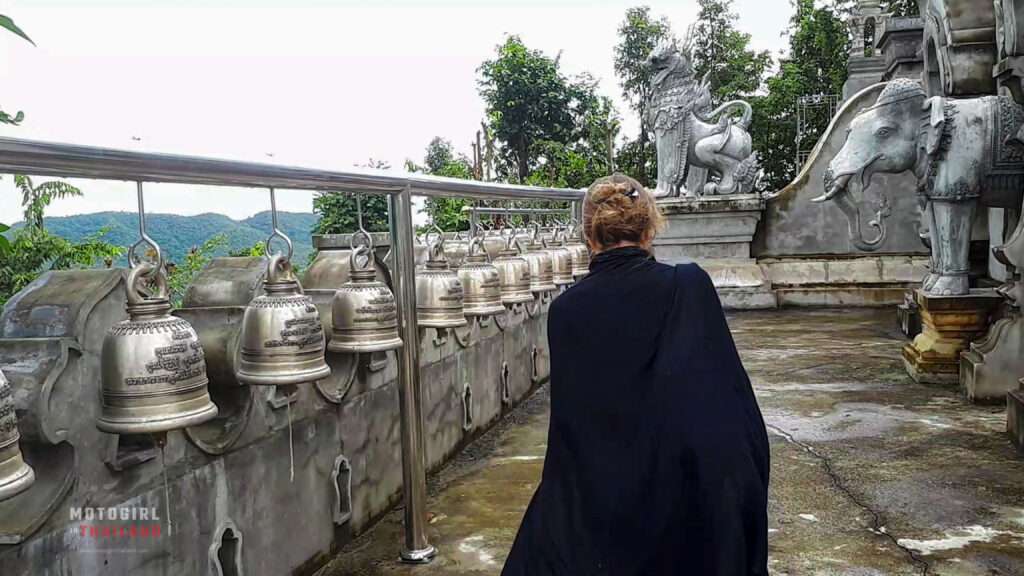
Loha Prasat Sri Mueang Pong feels like something magical no matter the time of day or season. The luminous white-and-gold tiered temple that rises like a dreamscape from the trees.
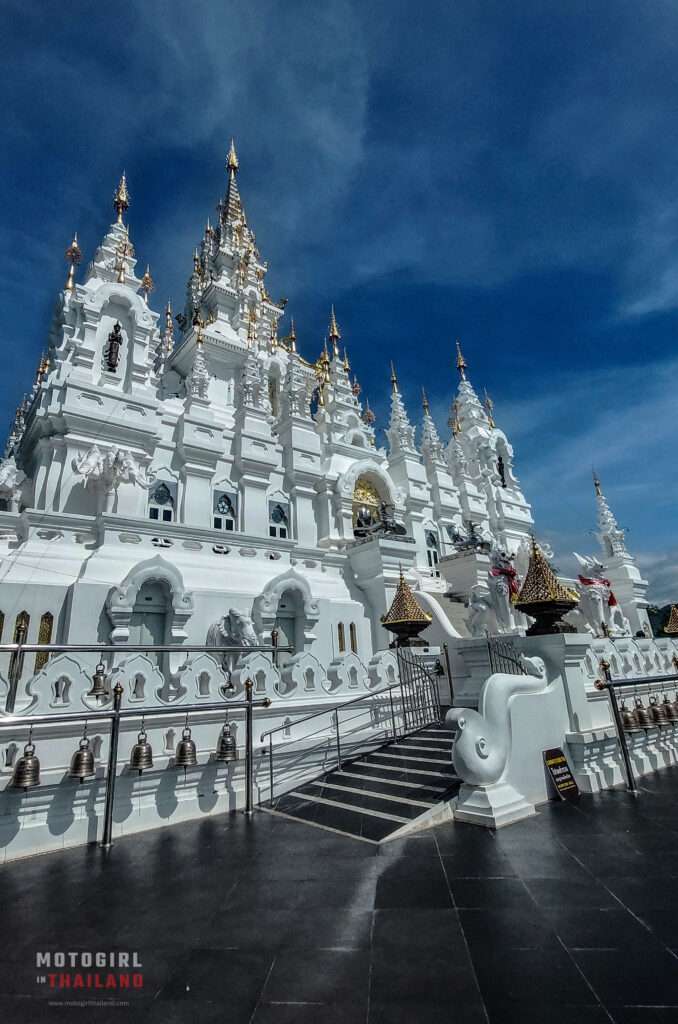
Inspired by Bangkok’s famed Loha Prasat, (known as the “metal castle”), but shaped with Lanna soul, its delicate spires and peaceful presence invite pause and wonder. The structure’s design incorporates elements representing the Four Noble Truths and the Triple Gem (Buddha, Dhamma, Sangha).
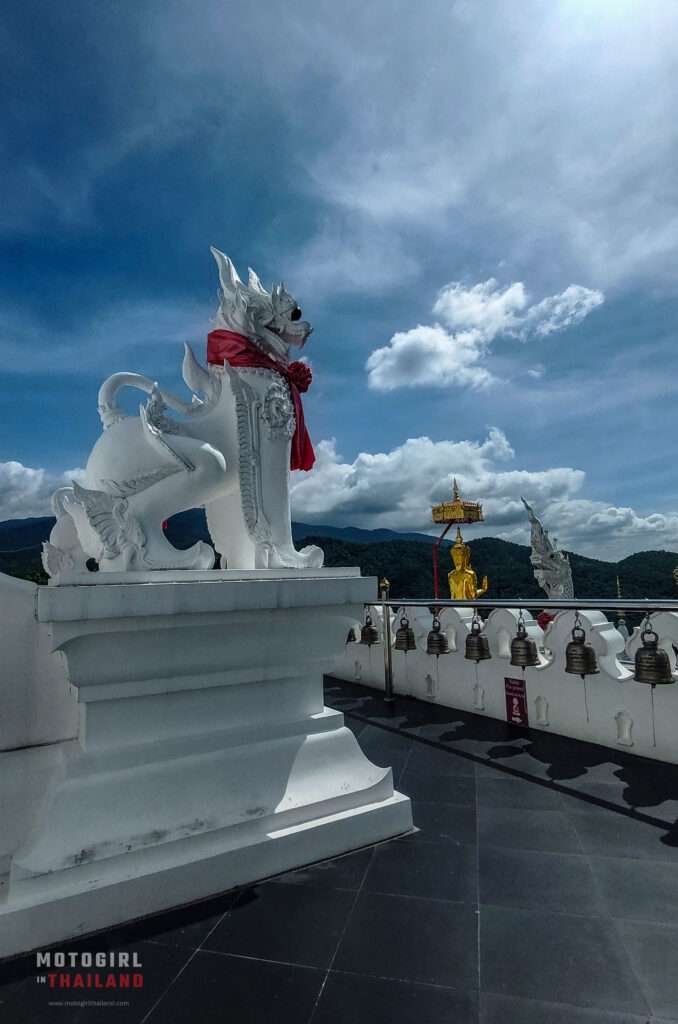
Historical and Cultural Aspects:
Loha Prasat Sri Mueang Pong is Thailand’s second “metal castle” and the world’s fourth, it draws inspiration from the original Loha Prasat structures of ancient India and Sri Lanka, as well as Bangkok’s 19th-century Loha Prasat at Wat Ratchanatdaram. This temple uniquely integrates the Lanna architectural style, characterised by its white facade and golden spires, reflecting the region’s cultural heritage.

The White Pagoda, visible from afar, symbolises purity and enlightenment, aligning with Buddhist teachings. The temple grounds are well-maintained by resident monks and volunteers, reflecting the community’s dedication to preserving this sacred space.
Architectural Features:
The multi-tiered design of Loha Prasat Sri Mueang Pong is symbolic and deeply rooted in Buddhist cosmology. In traditional Buddhist architecture, multi-tiered structures represent the journey toward enlightenment, with each level symbolizing a different stage of spiritual progress. The temple’s ascending tiers mirror the concept of ascending through the different realms of existence, ultimately reaching Nirvana — the state of ultimate peace and liberation.
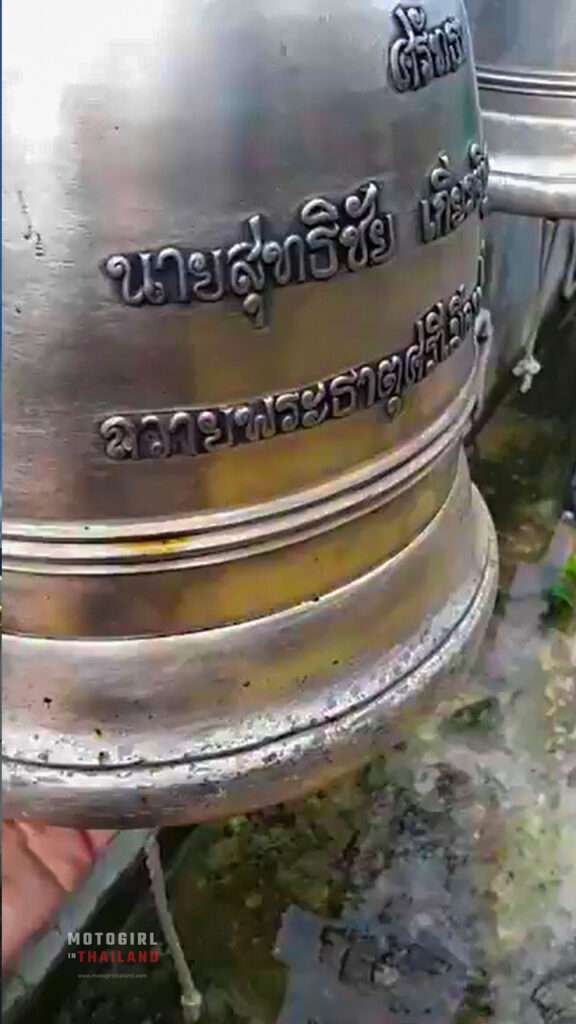
The number of tiers in a Loha Prasat typically correlates with the “Thirty-Two Levels of Enlightenment”, a Buddhist concept representing the stages one must transcend to achieve spiritual awakening. Additionally, the multi-tiered design helps to elevate the temple both physically and symbolically, making it a visual representation of the path to higher consciousness.
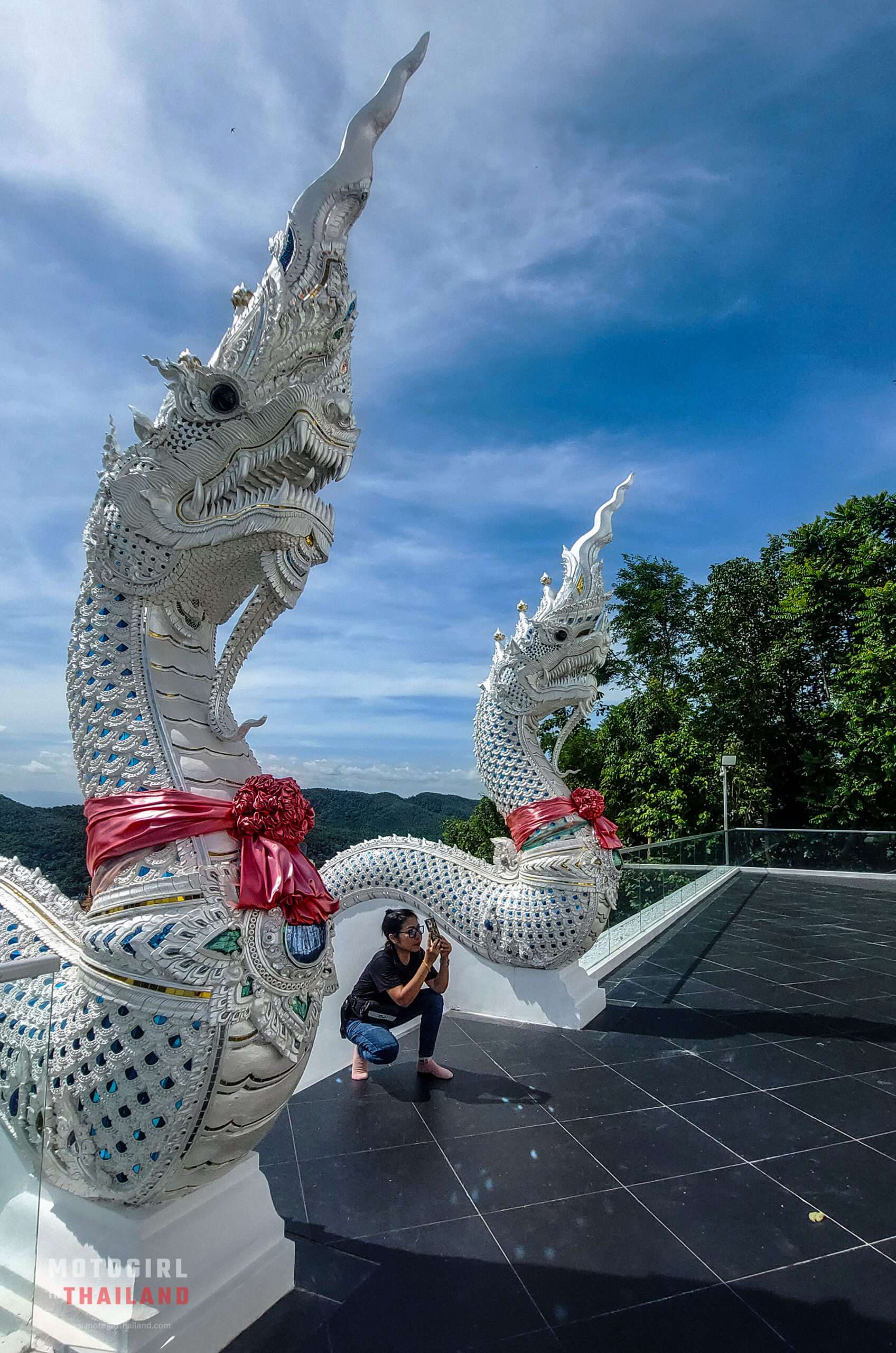
This design is inspired by similar structures in ancient Indian Buddhist architecture, particularly those built in places like Sri Lanka and India, where tiered buildings were often used to symbolise the gradual ascent toward spiritual purity. The Loha Prasat in Chiang Mai continues this tradition while incorporating the distinct Lanna architectural style..

Additional Notes:
It’s common to see monks engaged in daily routines, and visitors are encouraged to observe respectfully. On certain religious observance days, access to specific areas may be restricted.
8: Wat Luang Khun Win
Nestled deep within the lush forests of Mae Wang District, Chiang Mai, is the ancient teak temple of วัดหลวงขุนวิน / Wat Luang Khun Win. Believed to be over 700 years old, it is renowned for its exquisite Lanna-style wooden architecture and harmonious integration with the surrounding natural landscape.
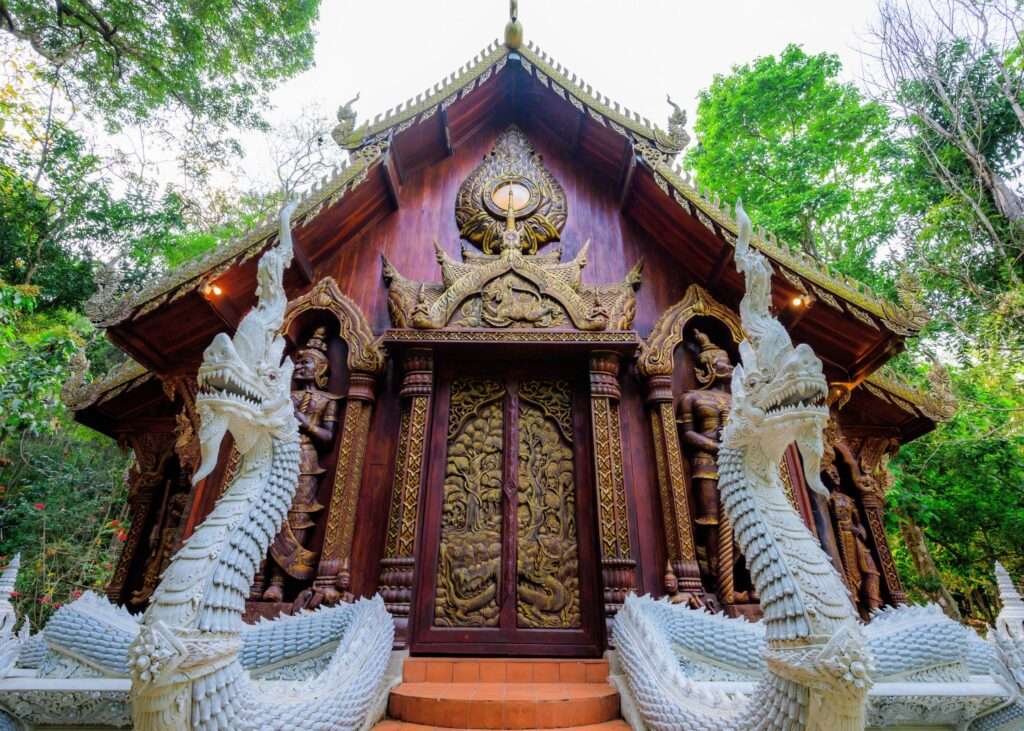
Note: This temple involves riding on dirt. If you are not confident or comfortable on dirt, you can hire a driver to take you there or join a tour group.
Details
- Location: 60 km from the City. (Map)
- Opening Hours: Daily, 6:00 AM – 6:00 PM
- Entry: Free (donations welcomed)
- Best Time to Visit: Dry season (November to February) for easier access and cooler temperatures.
- Parking: Available outside the temple grounds.
- Food/Drinks: It is advisable to bring your own.
- Disabled Access: To be Confirmed
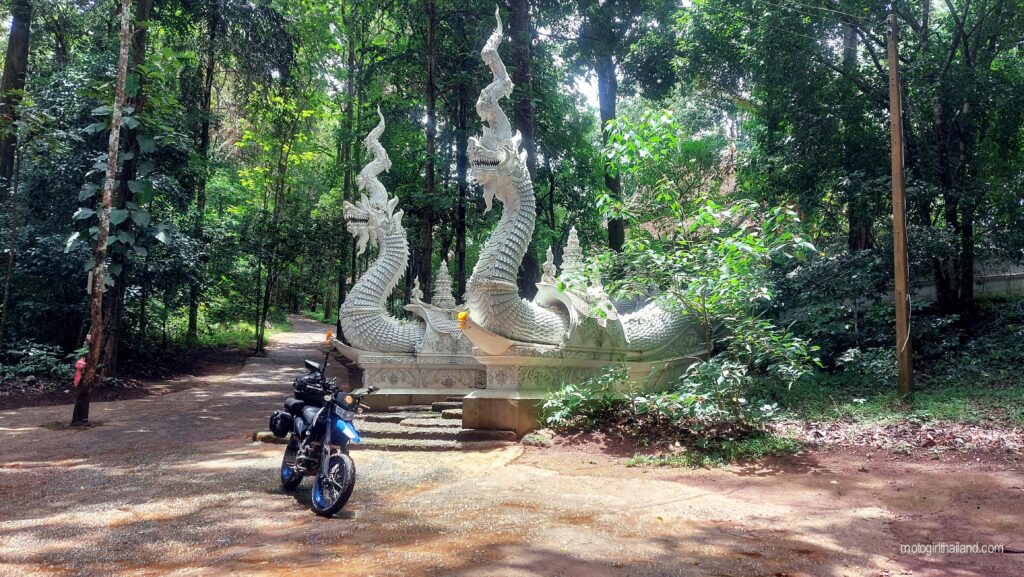
The secluded Wat Luang Khun Win houses the world’s largest wooden Buddha statue, carved from a wild champee tree. The site also features a reclining Buddha and a pagoda enshrining sacred relics.
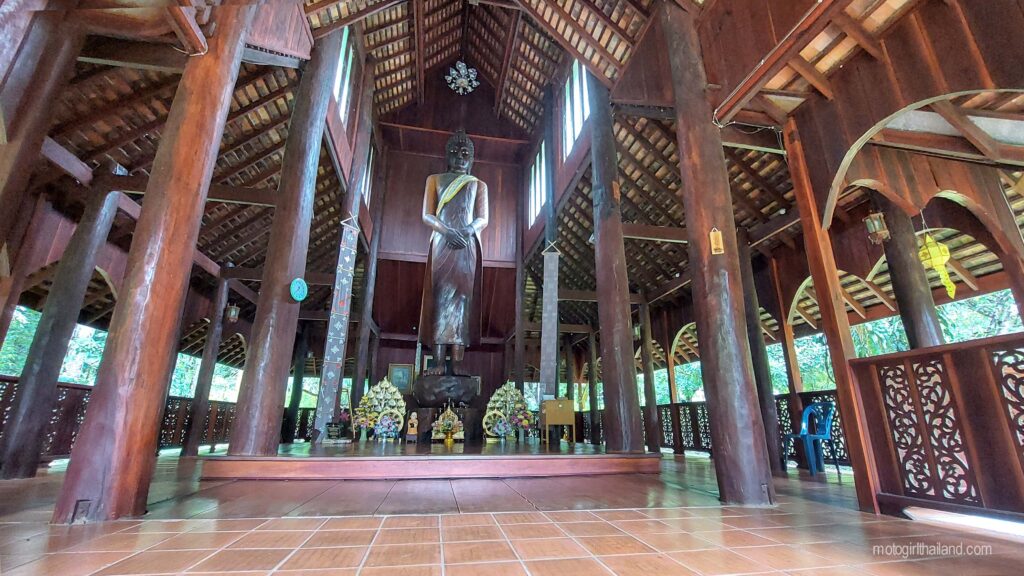
Historical and Cultural Aspects:
Established over seven centuries ago, Wat Luang Khn Win has served as a place of worship and meditation for generations. Its remote location has helped preserve its authenticity and spiritual ambience.
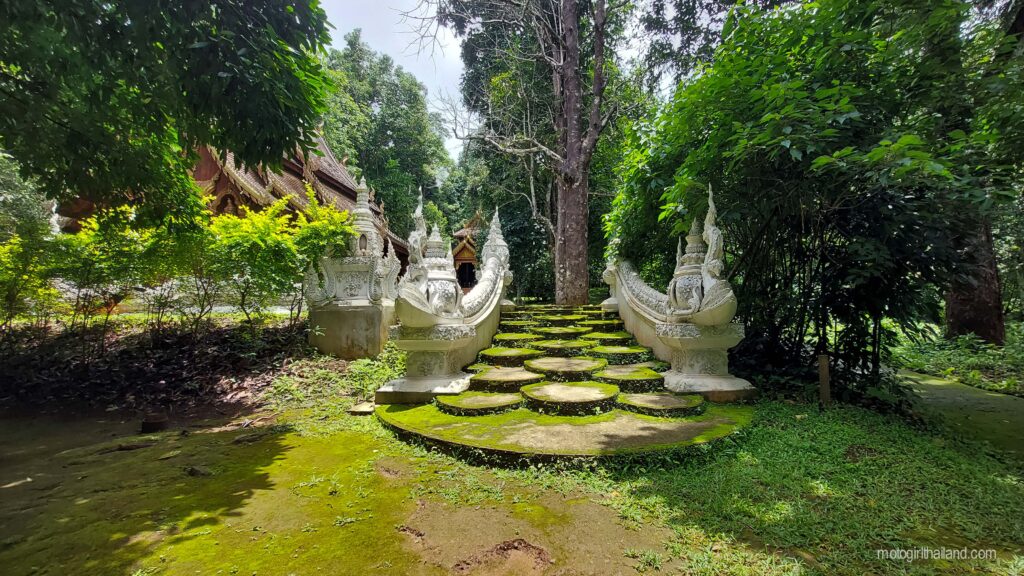
Architectural Features:
The temple complex showcases traditional Lanna-style wooden structures, intricately carved from teak wood.

A highlight is the towering standing Buddha statue, measuring approximately 9 meters in height and 2 meters in width, reputed to be the largest wooden Buddha image in the world.
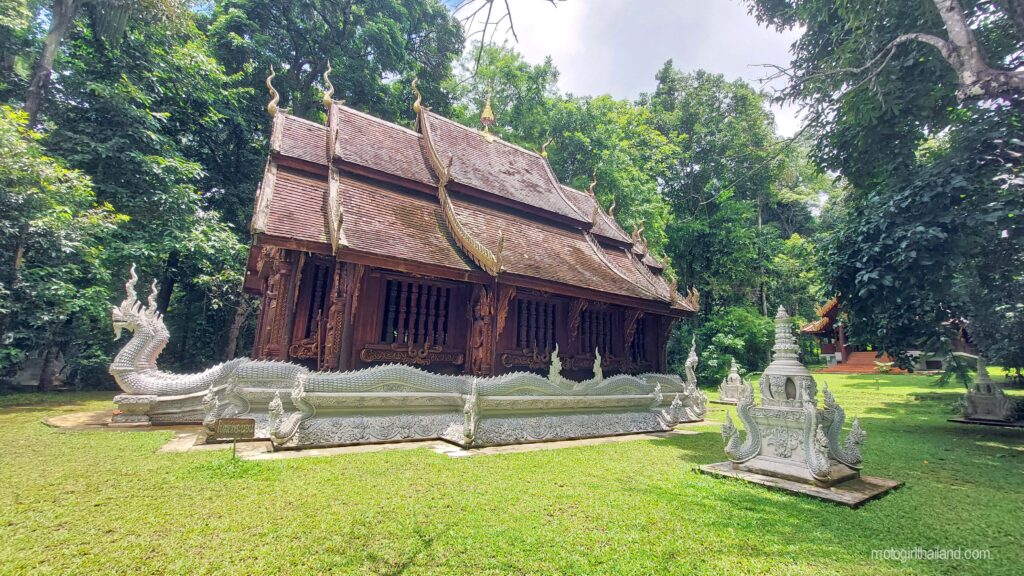
The entrance is marked by a beautifully crafted Naga staircase, with serpent figures that appear lifelike in their detail, guiding visitors into the sacred space.

Additional Notes:
The route to the temple involves some dirt roads. It is best to have previous experience riding/driving on dirt roads. Alternatively, hire a local transportation service to take you there.

For a visual glimpse into the serene beauty of Wat Luang Khun Win, you will find this video insightful:
MotoSplore GPS Guide which includes this zone. – pocket guide direct to your phone
9: Wat Doi Udom Tham
วัดดอยอุดมธรรม/ Wat Doi Udom Tham is a peaceful, hidden temple located in the lush hills of Mae Taeng District. The temple grounds and facilities are pretty simple, (as is the interior), but what makes it special is the mountainous tea plantation location and the unusual temple style. Inspired by ancient Indian and Mon Buddhist architecture, the temple was designed to remind visitors of the roots of Buddhism and the timeless path to enlightenment

Note: The route to this temple is steep, twisty, and potentially hazardous, especially in wet conditions. It is recommended for experienced riders/drivers. (The video at the end of the ‘more details’ section can give a better idea of the rote condition.)
Details
- Location: 60 km from the City. (Map)
- Opening Hours: Daily, 6:00 AM – 6:00 PM
- Entry: Free (donations welcomed)
- Best Time to Visit: Early morning for misty mountain views and cooler temperatures.
- Parking: Available on the temple grounds.
- Food/Drinks: It is advisable to bring your own.
- Disabled Access: No
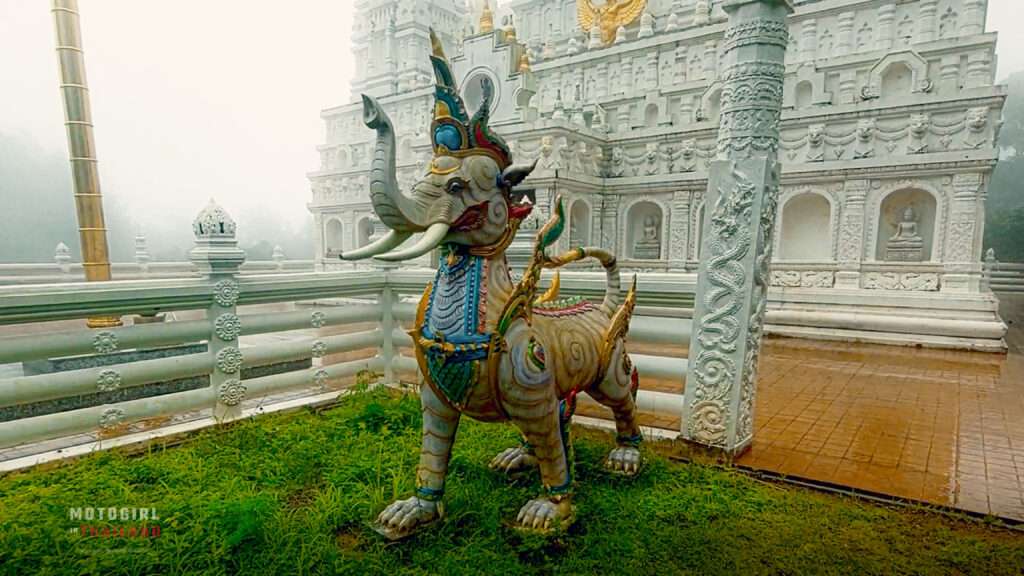
Wat Doi Udom Tham is an unusual hidden temple, set deep in the Mae Taeng Tea Plantation mountains, renowned for its distinctive architecture, which blends traditional Thai Buddhist design with influences from Indian and Mon styles. The striking white and gold stupa, adorned with intricate carvings and deities, symbolizes spiritual ascension and enlightenment.
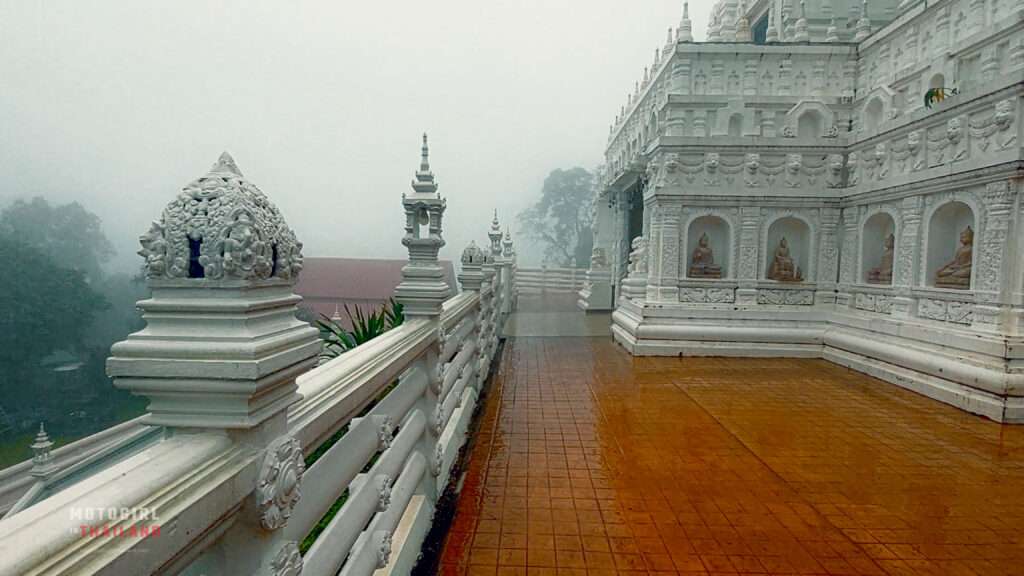
Historical and Cultural Aspects:
While the exact history of Wat Doi Udom Tham is not widely documented, it is believed to be a peaceful retreat for locals and visitors seeking spiritual solace. “Udom Tham” translates to “the ultimate Dharma” or “the ultimate truth,” reflecting the temple’s purpose as a place for profound practice and understanding of Buddhist teachings.
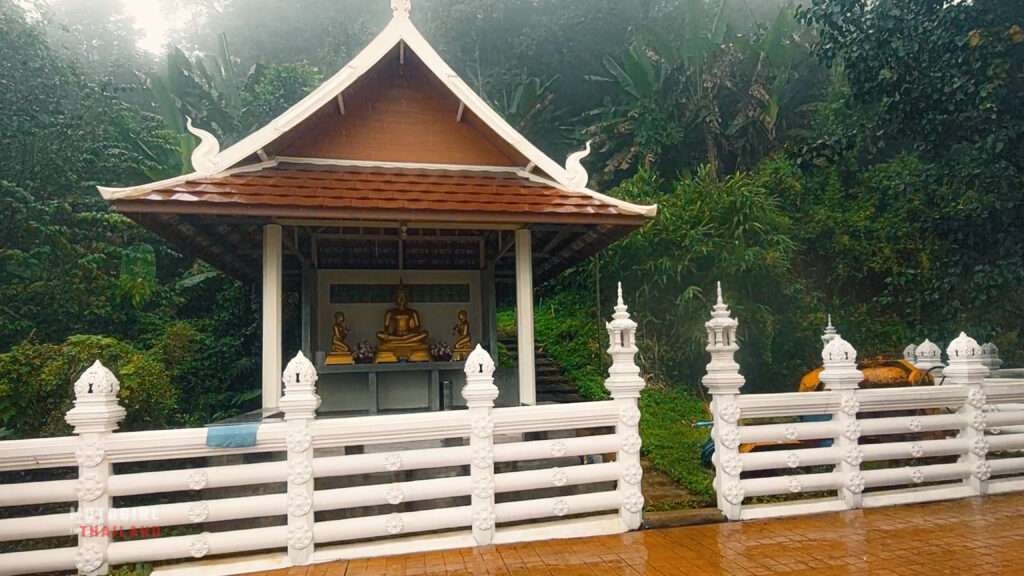
The temple is revered for its tranquility and connection to nature, serving as a quiet haven for meditation, Buddhist practice, and reflection. Monks here often live in seclusion, practicing Vipassana meditation in a natural setting, in keeping with the Theravāda Buddhist values of mindfulness and renunciation.
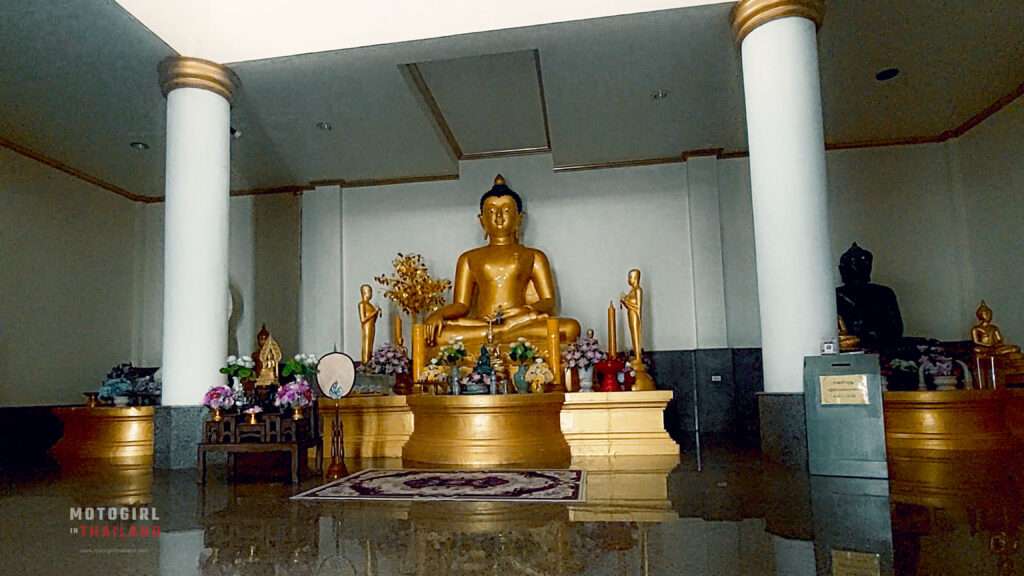
Architectural Features:
The architecture of Wat Udom Tham blends traditional Thai Buddhist design with influences from Indian and Mon styles, creating a striking and serene structure. The tall, slender stupa-like form, painted in pure white with golden accents, symbolises spiritual ascension, purity, and enlightenment.
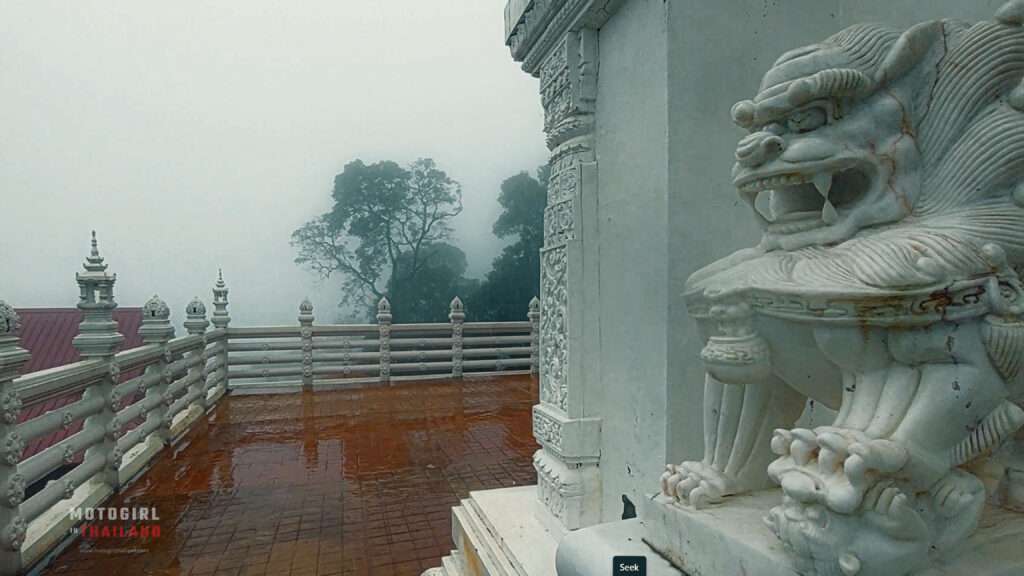
Intricate carvings of deities, mythical creatures, and floral patterns cover the surfaces, reflecting fine craftsmanship and cosmic symbolism. The symmetrical layout and the grand staircase leading up to the entrance represent the spiritual journey toward wisdom and balance between the earthly and divine.
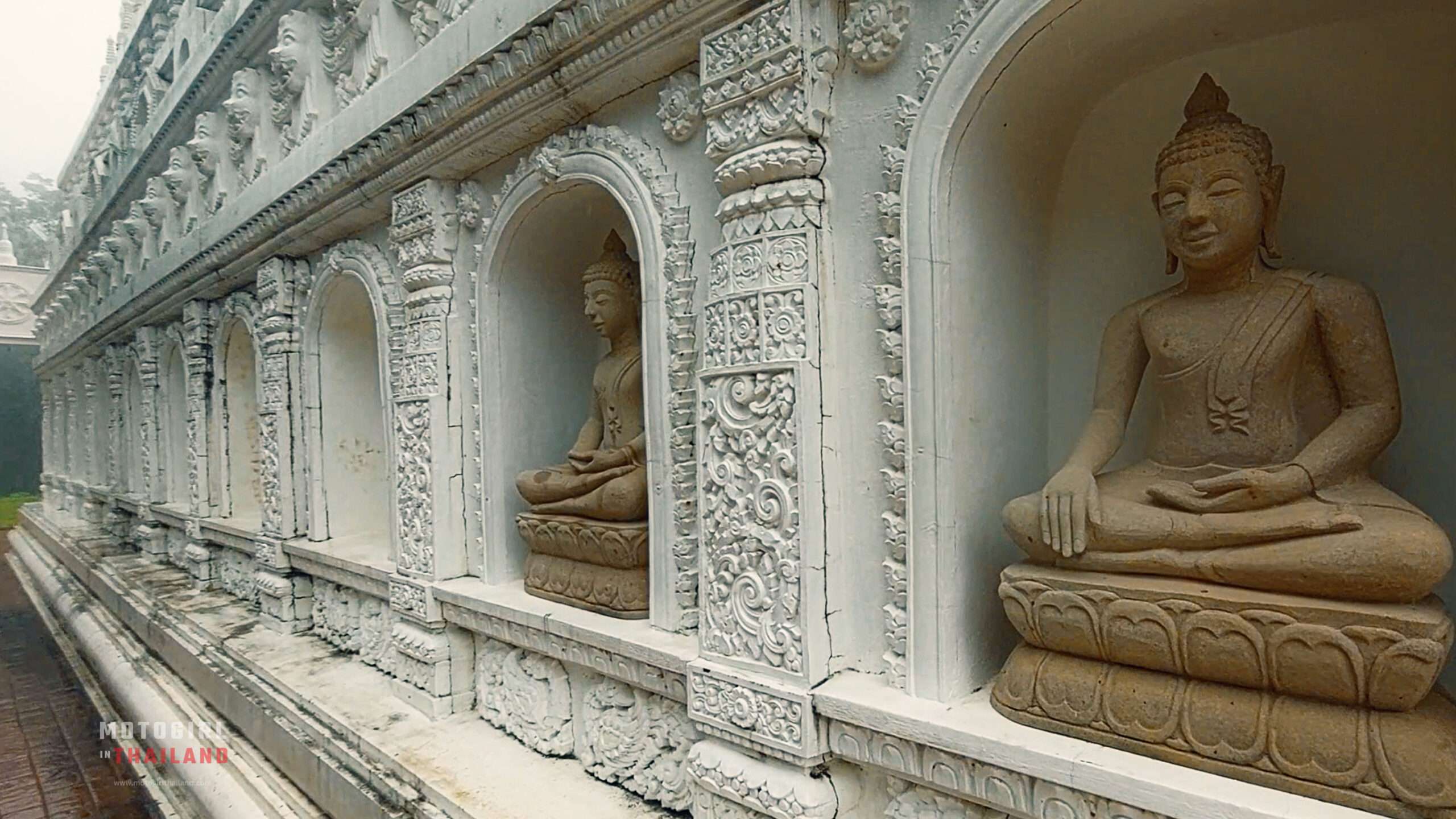
Set against a misty, mountainous backdrop, the temple’s ethereal appearance enhances its sacred, otherworldly atmosphere.
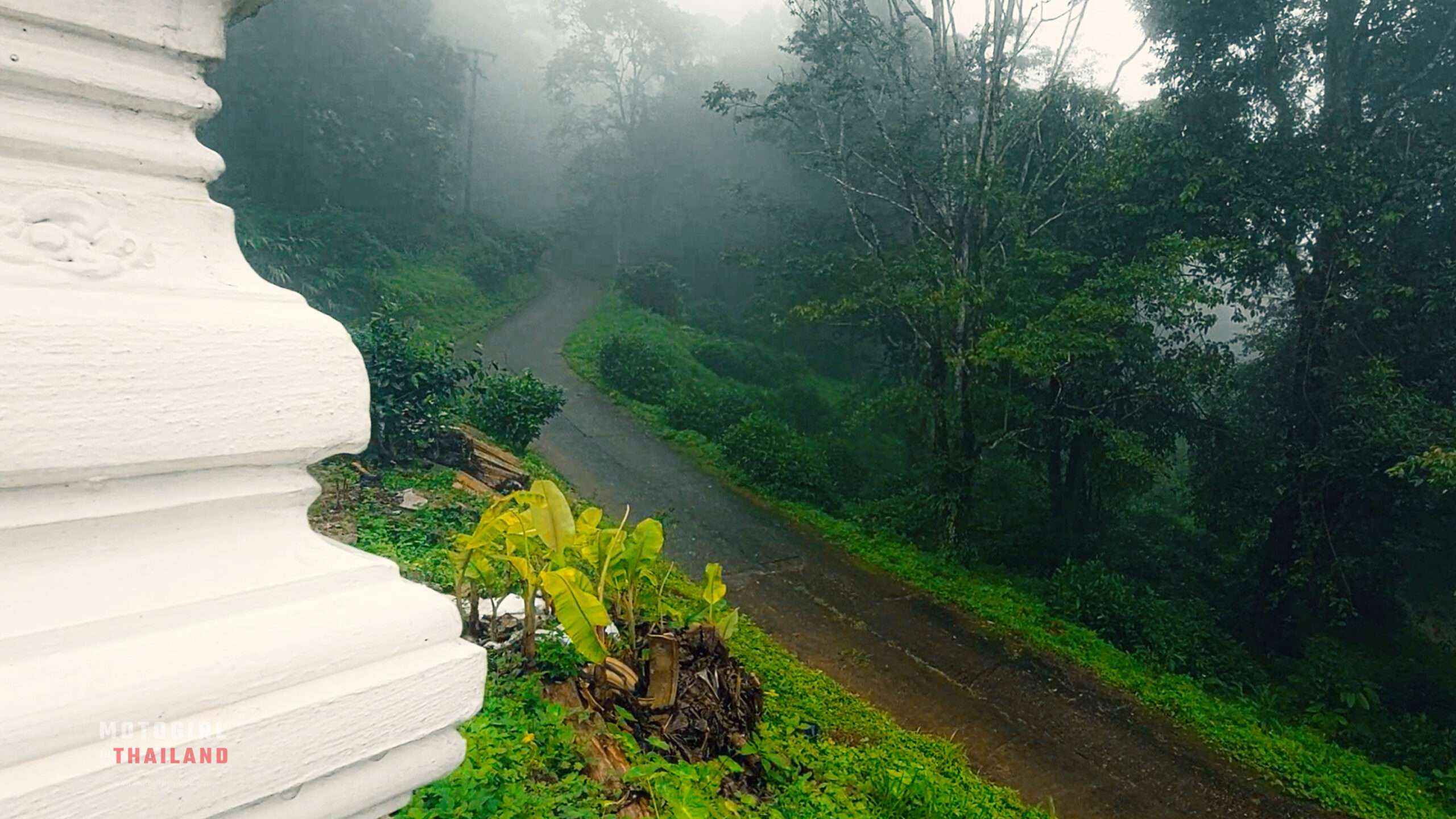
Additional Notes:
Expect an abundance of nature and a serene environment. This temple is truly an off-the-beaten-path experience. The route to the temple can be tight and slippery with some broken surface areas and moss. Caution advised.
10: Wat Ban Den
วัดบ้านเด่น / Wat Ban Den, also known as Wat Den Sali Si Mueang Kaen, is a striking Buddhist temple located in the Mae Taeng District. Once a modest village temple, it has transformed into a colourful and expansive temple complex. The temple is renowned for its harmonious blend of traditional Lanna architecture and vibrant, whimsical design elements, earning it the nickname of “the Electric Kool-Aid Acid Temple”!
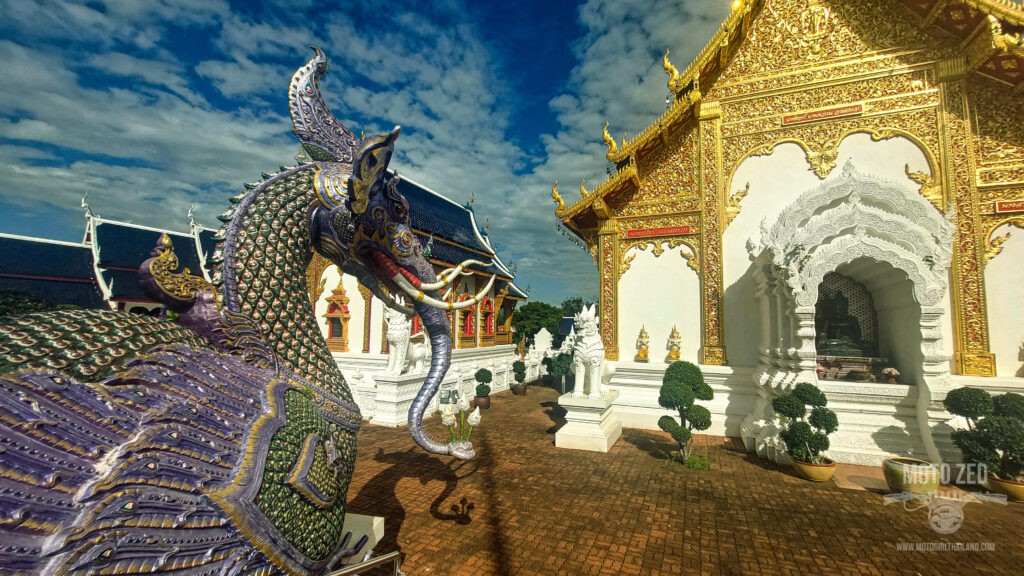
Details
- Location: 45 km from the City (Map)
- Opening Hours: Daily, 6:00 AM – 6:00 PM
- Entry: Free (donations welcomed)
- Best Time to Visit: Early morning or late afternoon for optimal lighting and cooler temperatures.
- Parking: Ample parking is available at the temple grounds
- Food/Drinks: Many local cafes and eateries in the area.
- Disabled Access: Yes

Wat Ban Den is certainly one of the more unusual temples you will ever see in Thailand. Well worth visiting for the experience and visual delights!
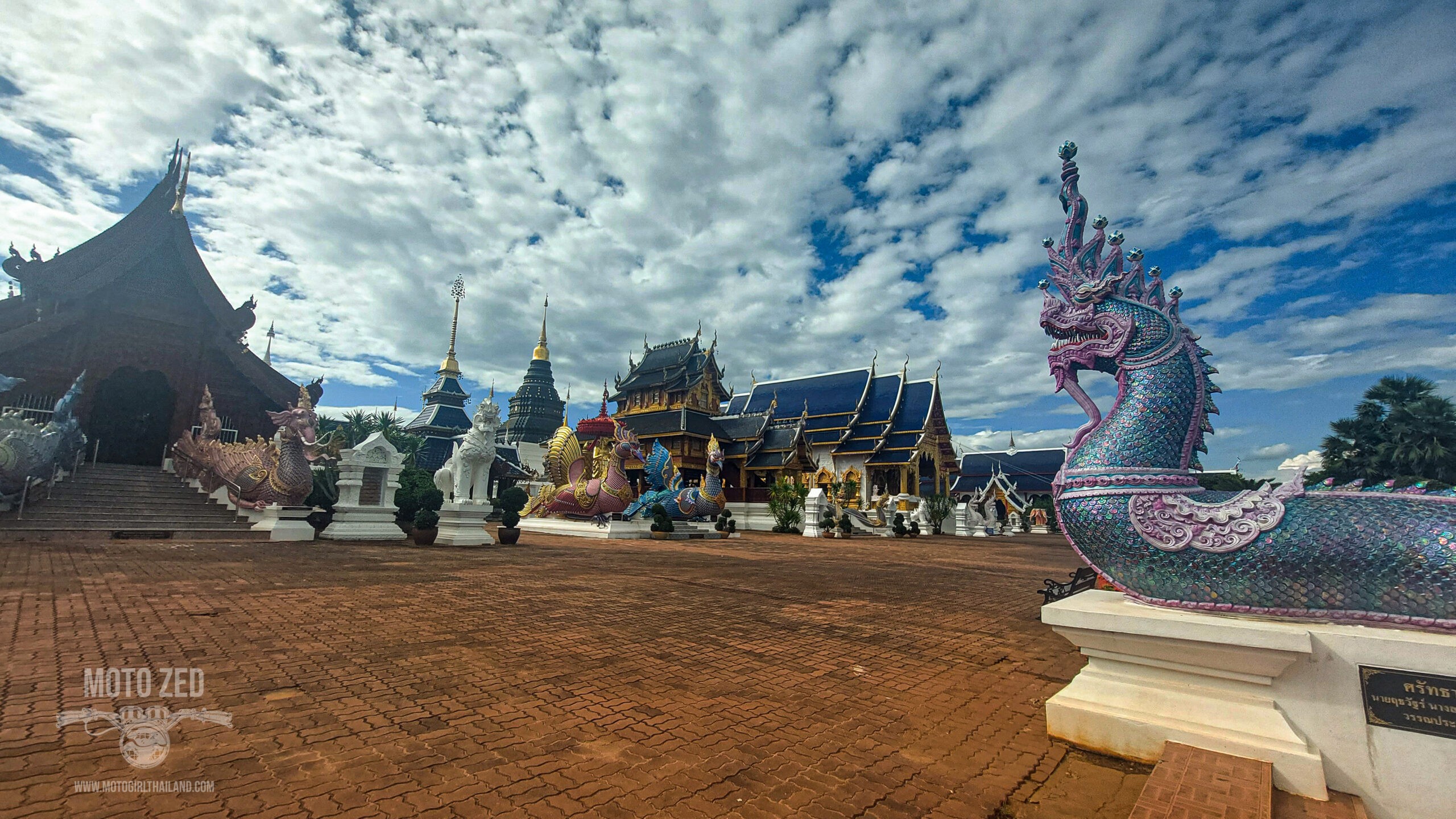
Historical and Cultural Aspects:
Established over 500 years ago as a modest village temple, Wat Ban Den underwent significant renovations beginning in 1988 under the guidance of Phra Kru Ba Tuang, a revered abbot. His vision was to create a grand spiritual complex that would attract visitors and serve as a centre for Buddhist practice.
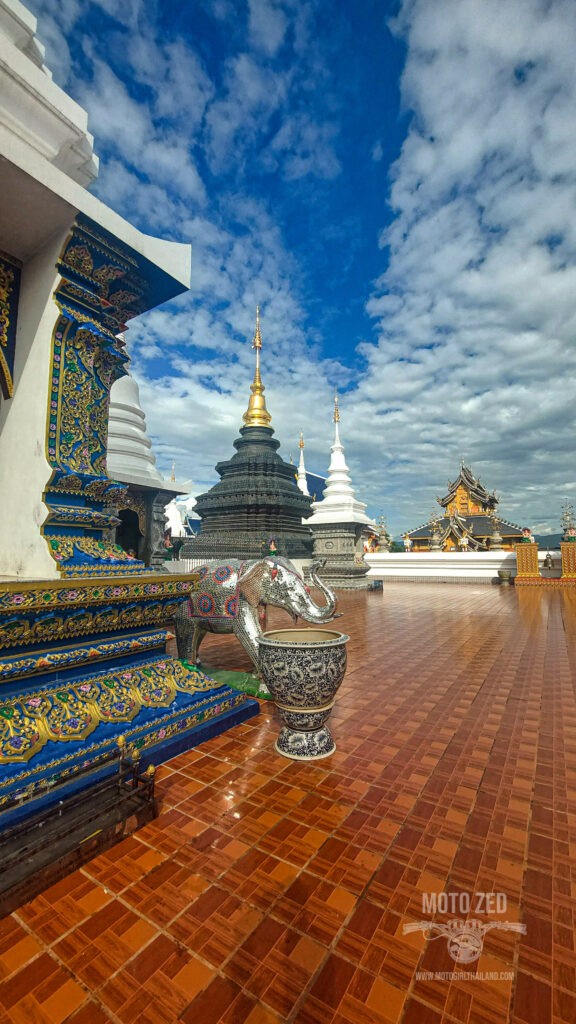
The temple’s transformation was largely funded through donations, including a notable contribution of 39 “money trees” during the abbot’s 39th birthday celebration.
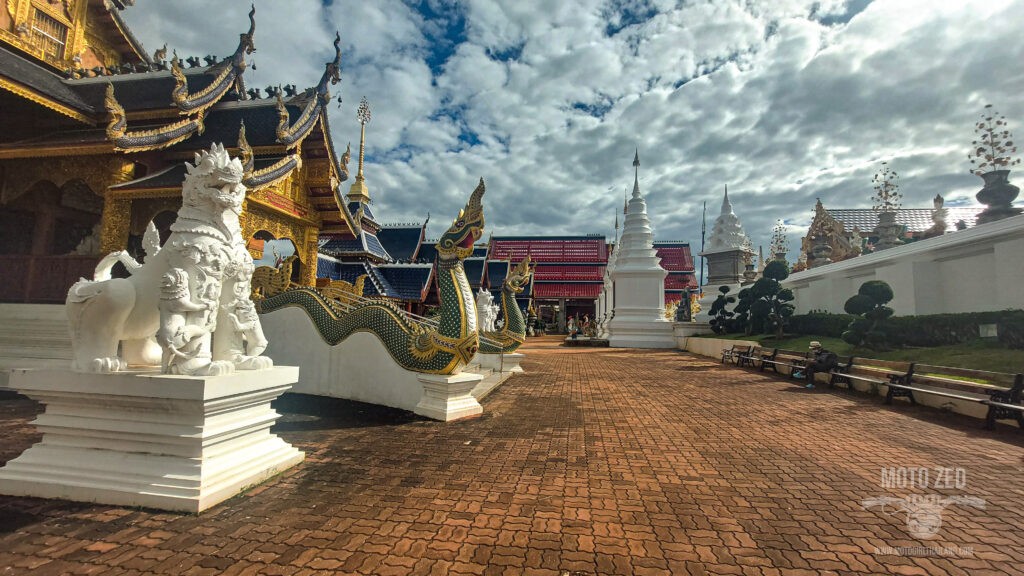
Architectural Features:
The temple complex at Wat Ban Den blends Lanna, Burmese, and Thai architectural styles, featuring multi-tiered roofs adorned with intricate wood carvings, vibrant stucco work, and colourful details.
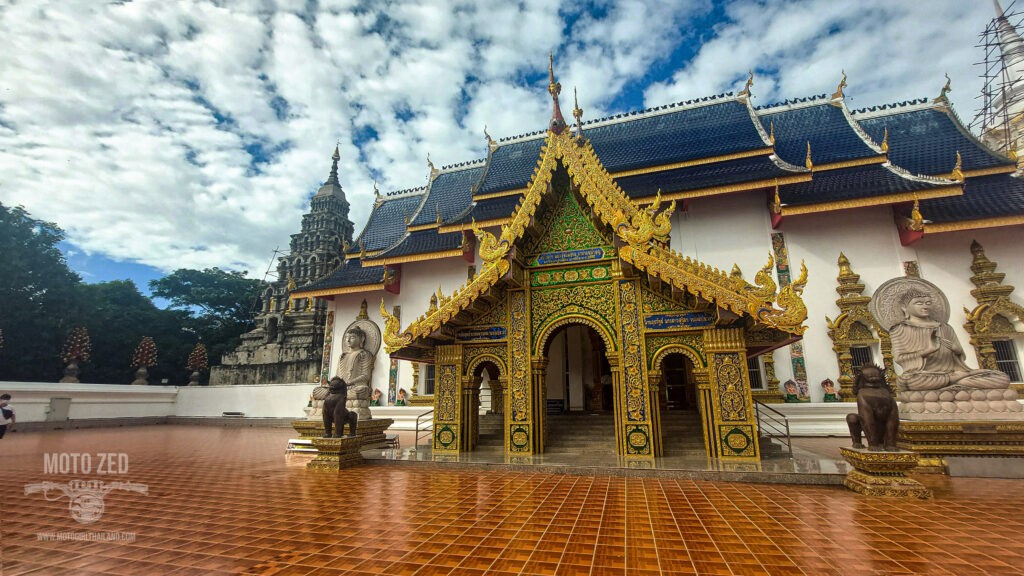
The design includes 12 stupas (chedis) representing the Chinese zodiac, mythical creature sculptures like dragons and lions guarding entrances, and a grand teak viharn with a three-tiered roof, blue tiles, and golden bargeboards.
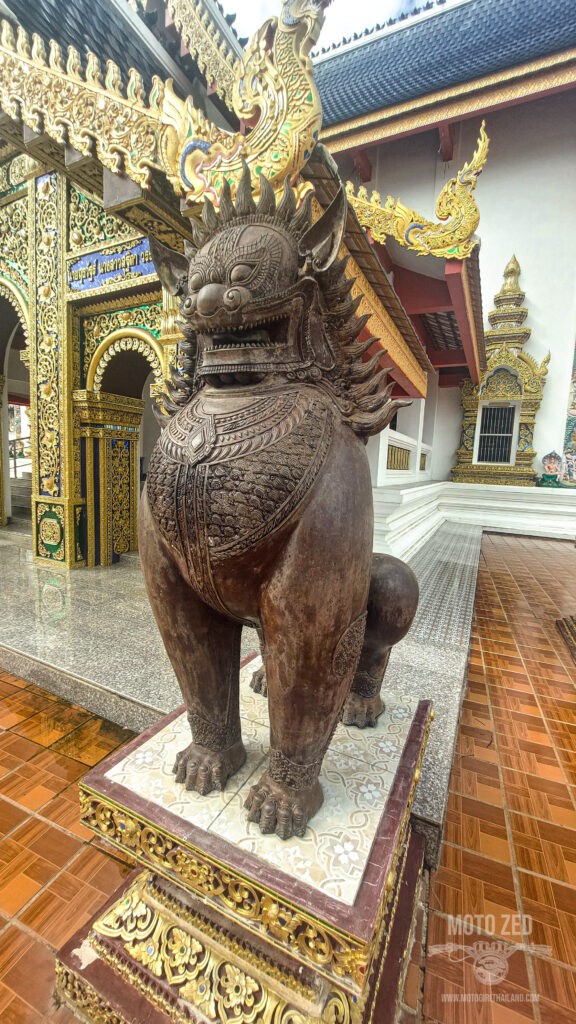
These elements combine to create a visually stunning and fantastical environment, often compared to a Buddhist theme park.
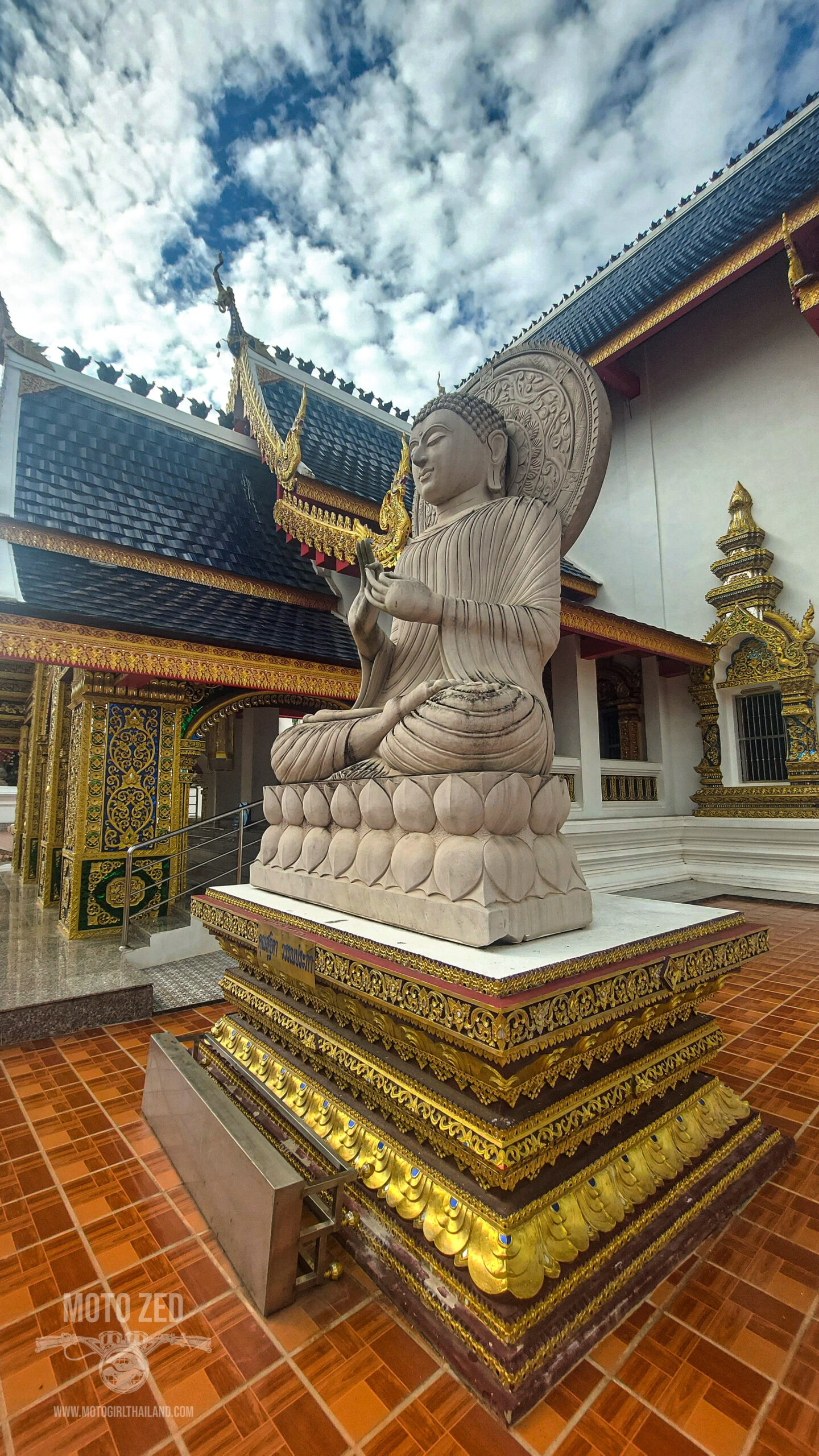
Additional Notes:
Although playful and vibrant in design, Wat Ban Den is an active place of worship, thus the typical temple rules regarding dress and decorum apply.
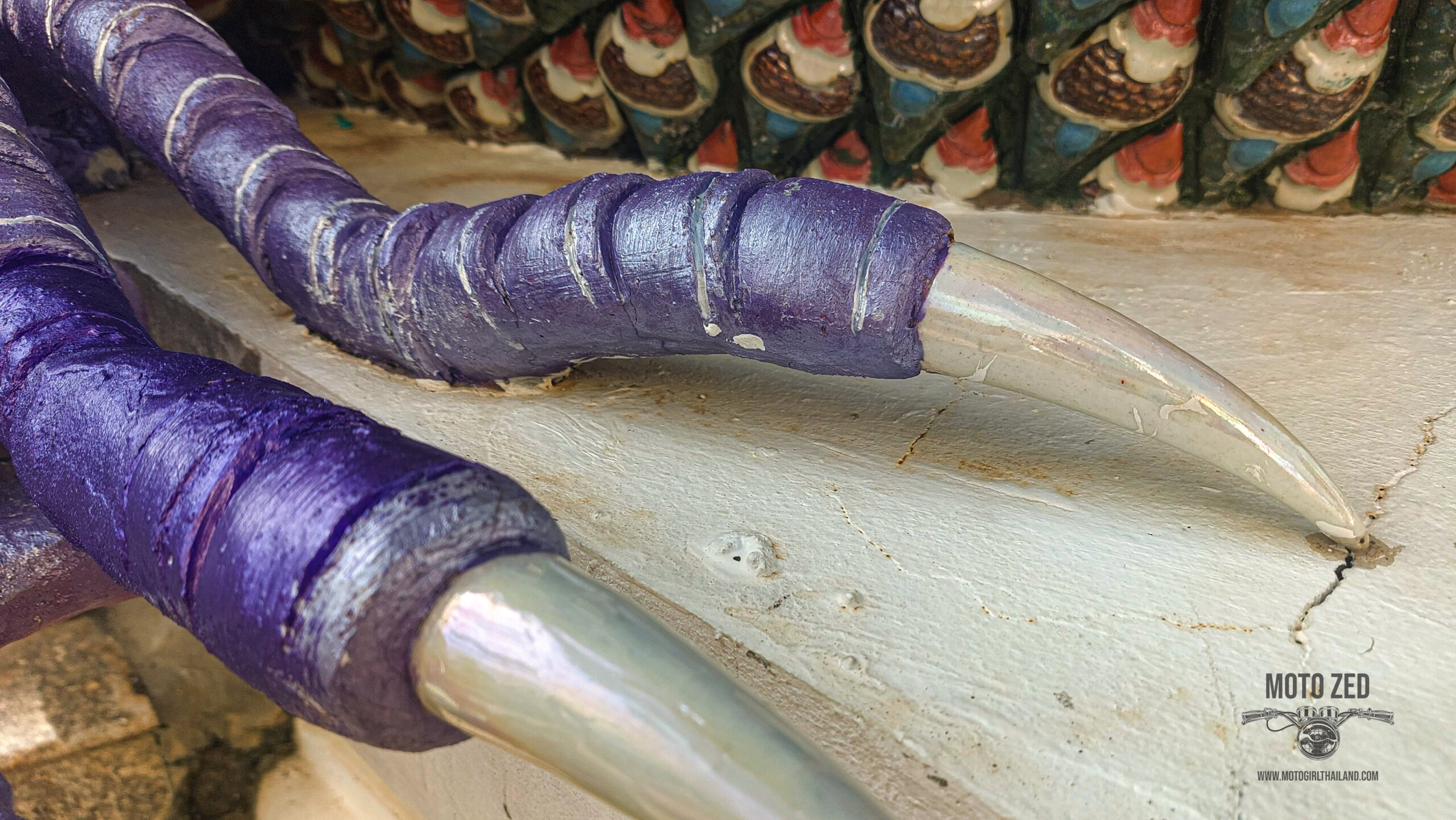
11: Wat Khantha Phueksa
วัดคันธาพฤกษา / Wat Khantha Phueksa, also known as Wat Mae Kampong, is a tranquil Buddhist temple nestled in the lush village of Mae Kampong, in Mae On District. Established around 1925 as a hermitage, it was transformed into a temple in 1930 under the guidance of Kruba Insom Khanthornso.
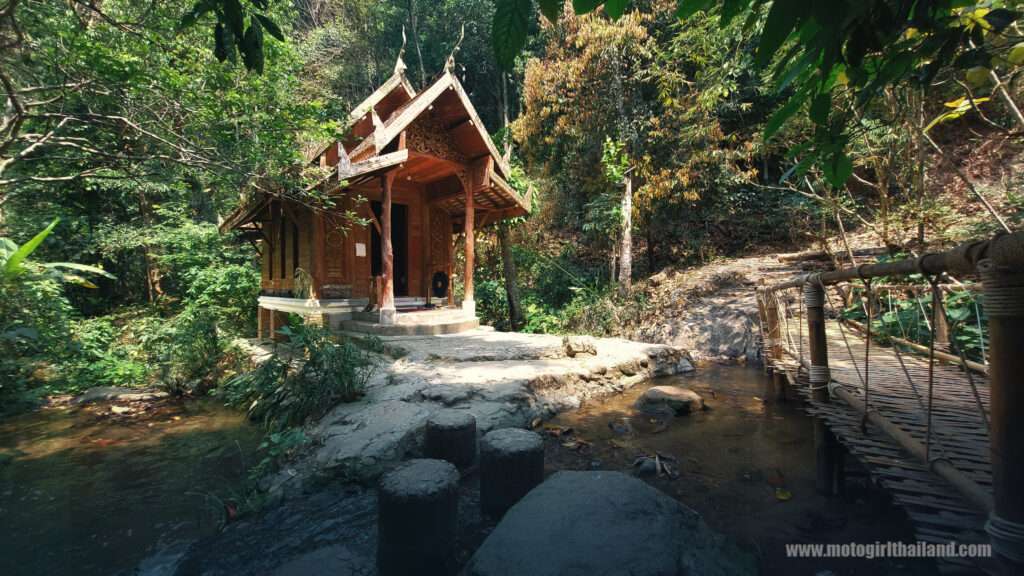
Details
- Location: 50 km from the City. (Map)
- Opening Hours: Daily, 6:00 AM – 6:00 PM
- Entry: Free (donations welcomed)
- Best Time to Visit: Morning hours, especially during the Cool Season when mist drifts through the hills.
- Parking: Limited parking is available near the temple and village.
- Food/Drinks: A small selection of cafes and local eateries are available in Mae Kampong village.
- Disabled Access: No
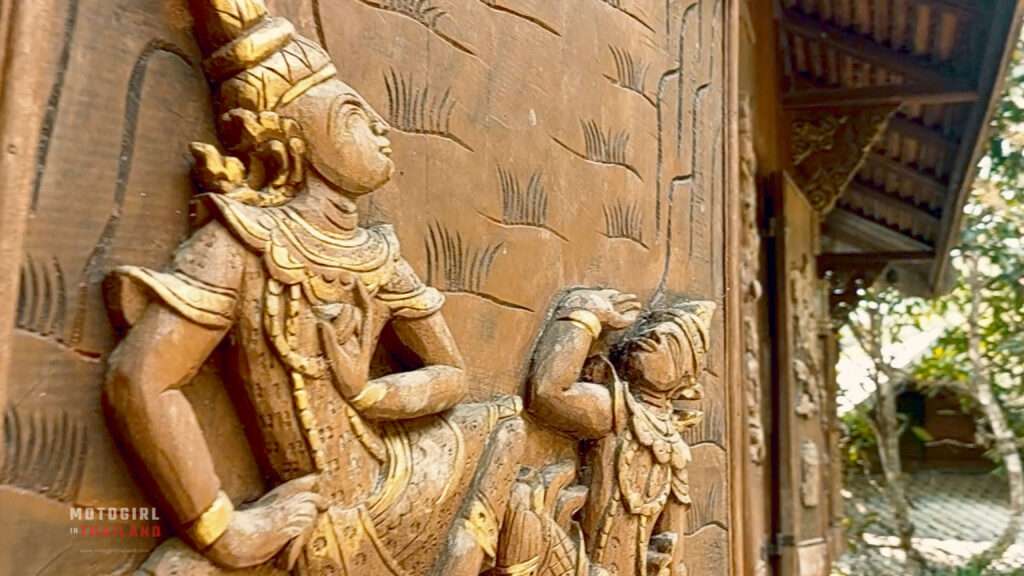
Wat Khantha Phueksa is a unique and charming hidden temple within Mae Kampong village, offering a peaceful, authentic Lanna village experience.

Historical and Cultural Aspects:
Wat Khantha Phueksa was originally established as a hermitage in the early 20th century and became an official temple in 1930. It is a deeply spiritual centre for the local community, reflecting the quiet, slow-paced traditions of Mae Kampong village.
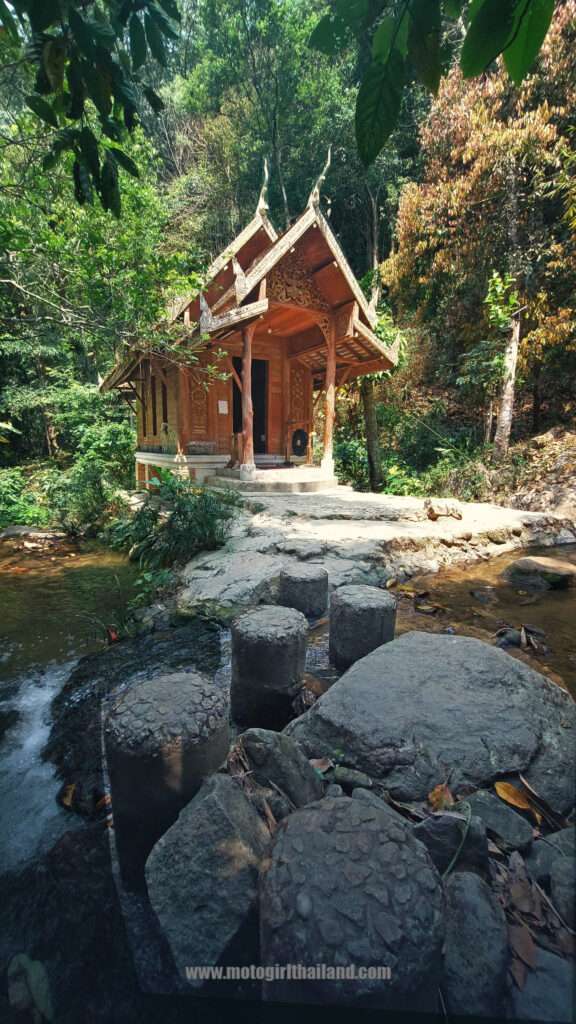
Architectural Features:
The most striking feature of Wat Khantha Phueksa is its ordination hall (Ubosot), which is uniquely built in the middle of a pond — a rare design found only in a few temples in Northern Thailand. This symbolises purity and separation from the secular world.
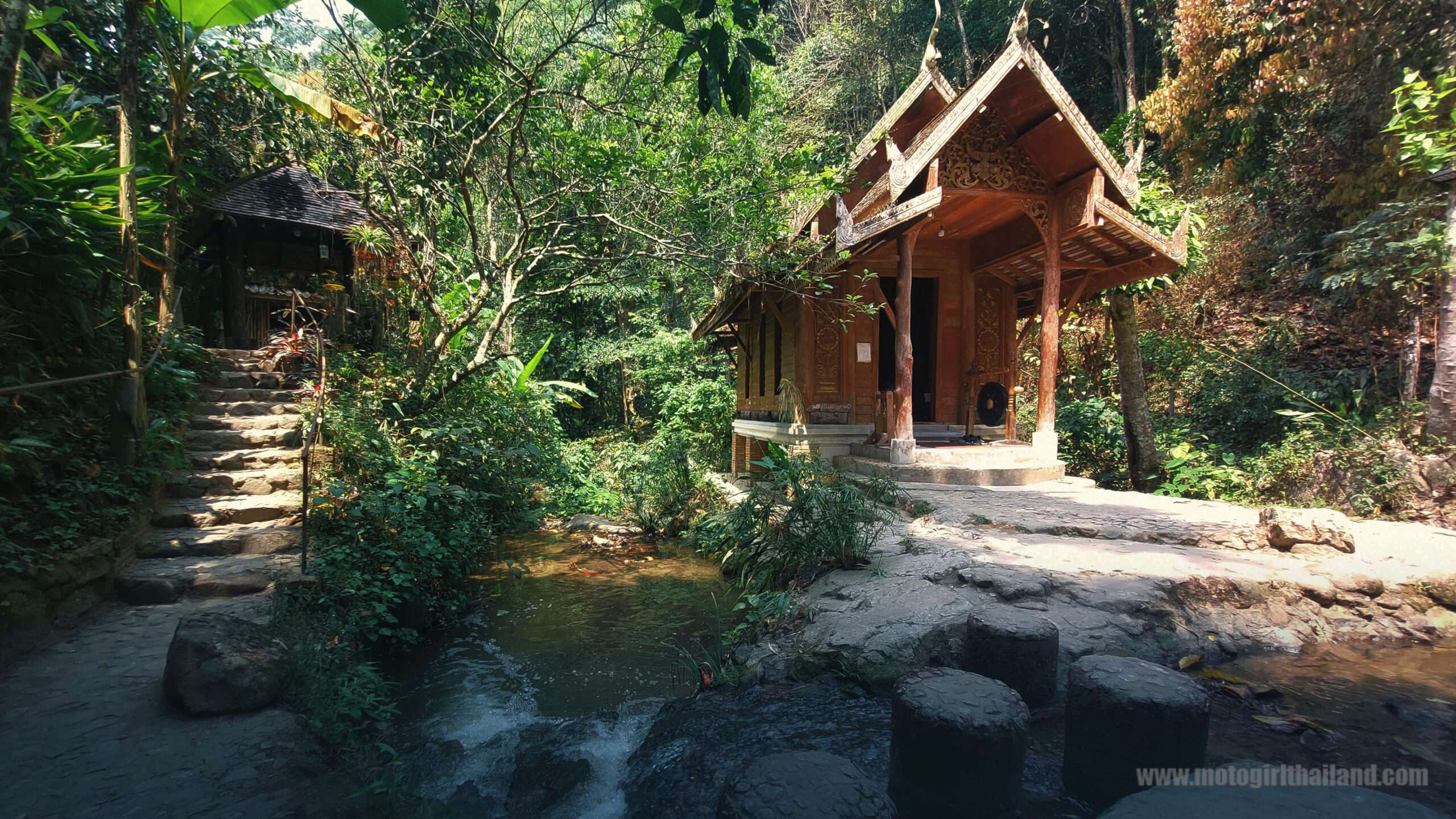
The Viharn (assembly hall) is built from richly carved teak wood, showcasing exquisite traditional Lanna craftsmanship.

Additional Notes:
Visitors to the temple will also go through Mae Kampong village = a quaint mountain village which stands at around 1,300 meters above sea level.

Known for its cool climate, lush forest surroundings, and charming wooden homes, the village offers a glimpse into traditional Northern Thai life.
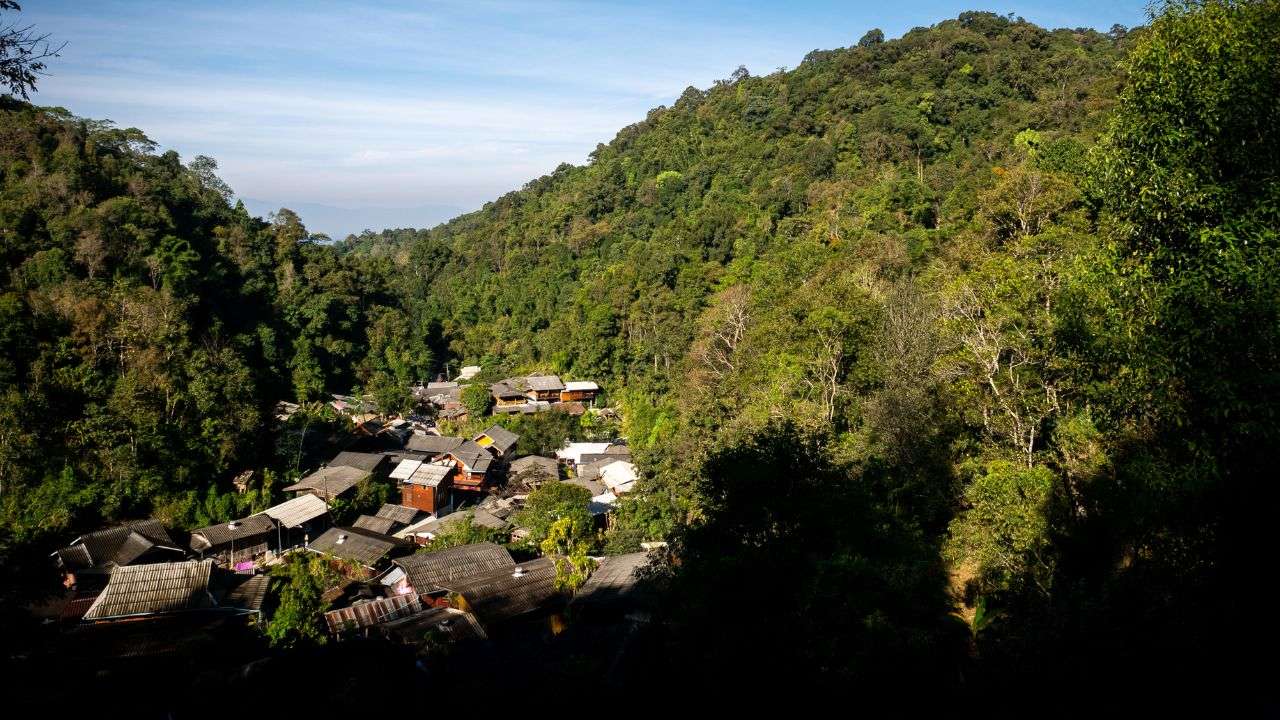
It’s famous for eco-tourism, coffee plantations, homestays, and its peaceful, slow-paced atmosphere — perfect for visitors seeking nature, culture, and authentic local experiences.
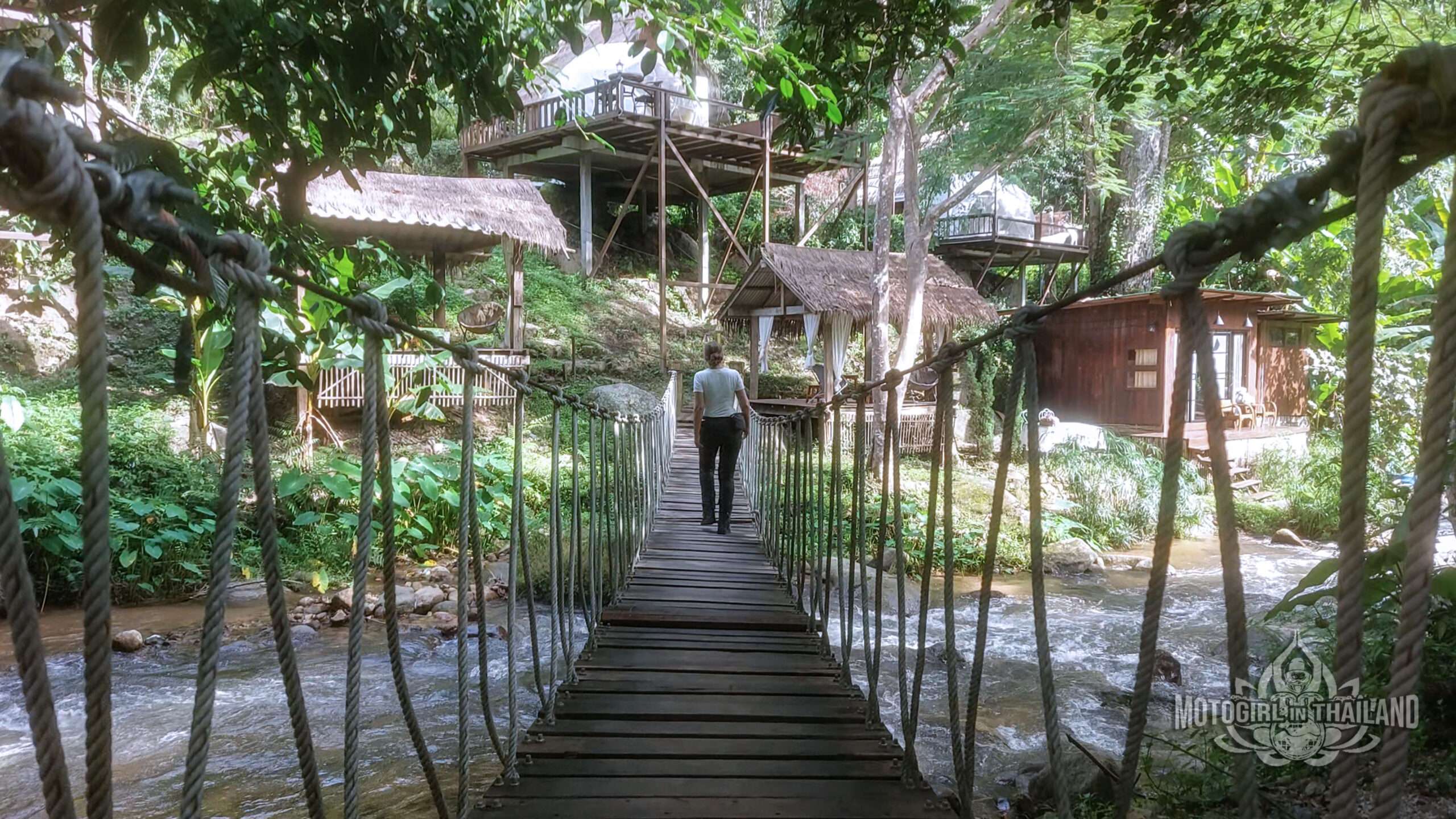
This video shows some of the beauty on offer at Mae Kampong, including the stunning Khantha Phueksa temple.
12: Kuan Im Chokchai
พระแม่กวนอิมมหาโพธิสัตว์ / Kuan Im Chokchai is a Chinese temple surrounded by serene gardens and traditional Chinese-style architecture, which includes an interesting giant dragon statue.
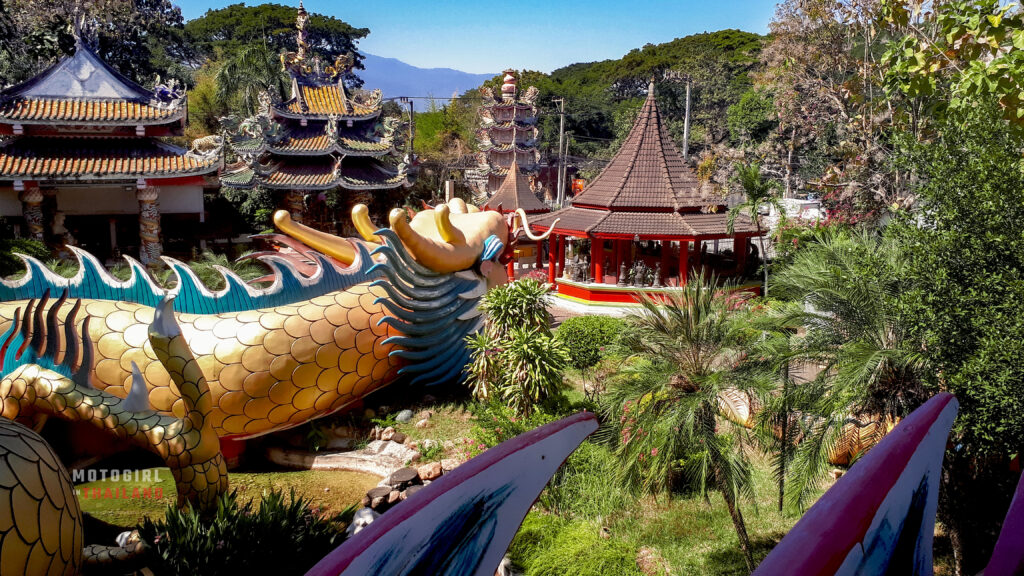
Details
- Location: 10 km from the City. (Map)
- Opening Hours: Daily, 7:00 AM – 5:30 PM
- Entry: Free (donations welcomed)
- Best Time to Visit: Early morning for cool and pleasant weather.
- Parking: Available streetside.
- Food/Drinks: It is advisable to bring your own.
- Disabled Access: Yes (although, if I recall correctly there is a turnstile entrance with an adjacent gate. So, you would need to have someone open the gate. I will check again and update, later.)
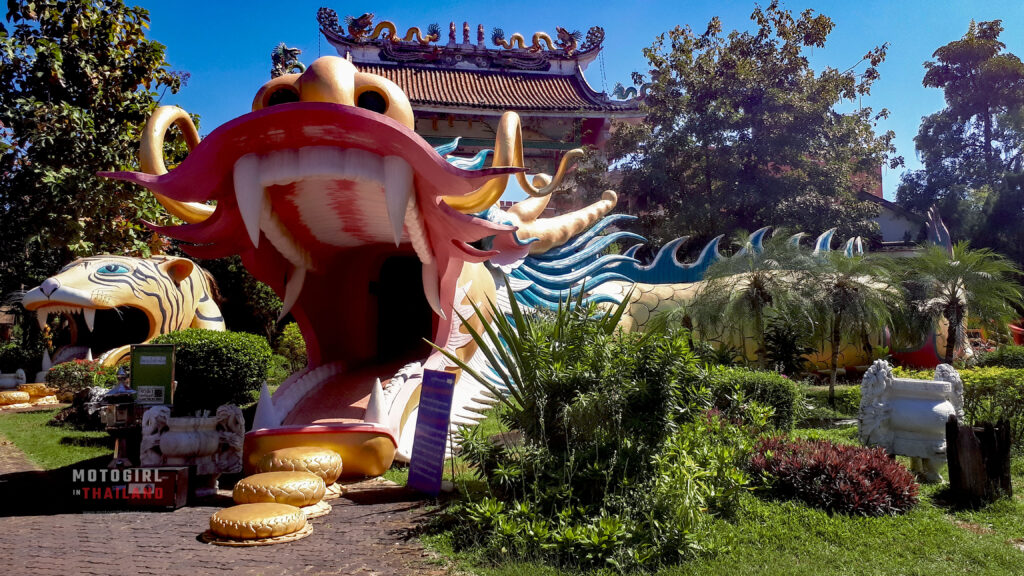
Surrounded by lush gardens and traditional Chinese architecture, this unique and interesting temple is an interesting alternative to Lanna temples. .
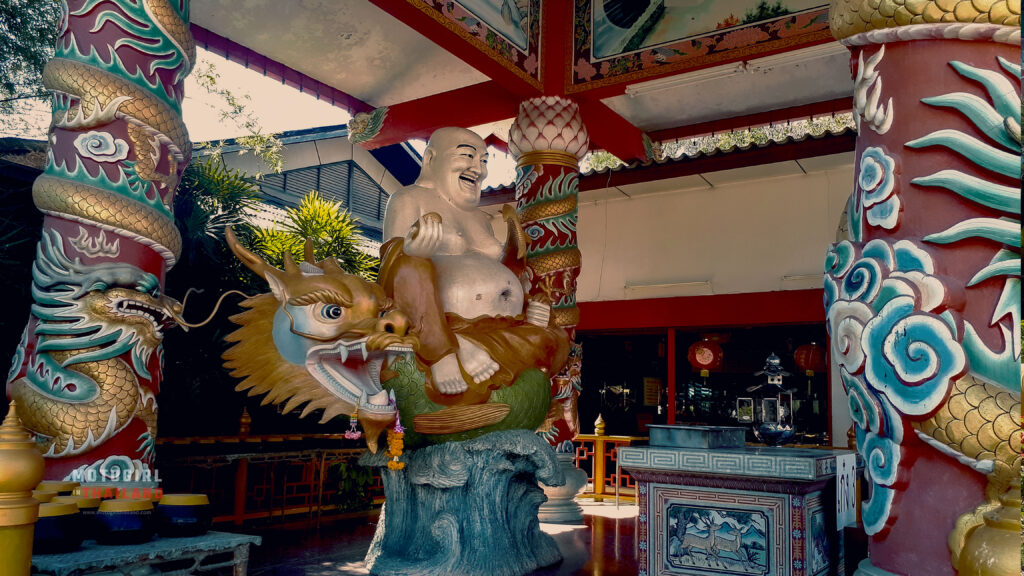
Historical and Cultural Aspects:
While not ancient, Kuan Im Chokchai reflects the strong cultural influence of Chinese Buddhism in Thailand. It serves as a centre for worshippers who seek blessings, peace, and healing under the compassion of Guan Yin.

Architectural Features:
Traditional Chinese motifs such as lotus flowers, colourful pavilions and large interesting statues can be found in the temple, including a large dragon statue with detailed murals inside its body.
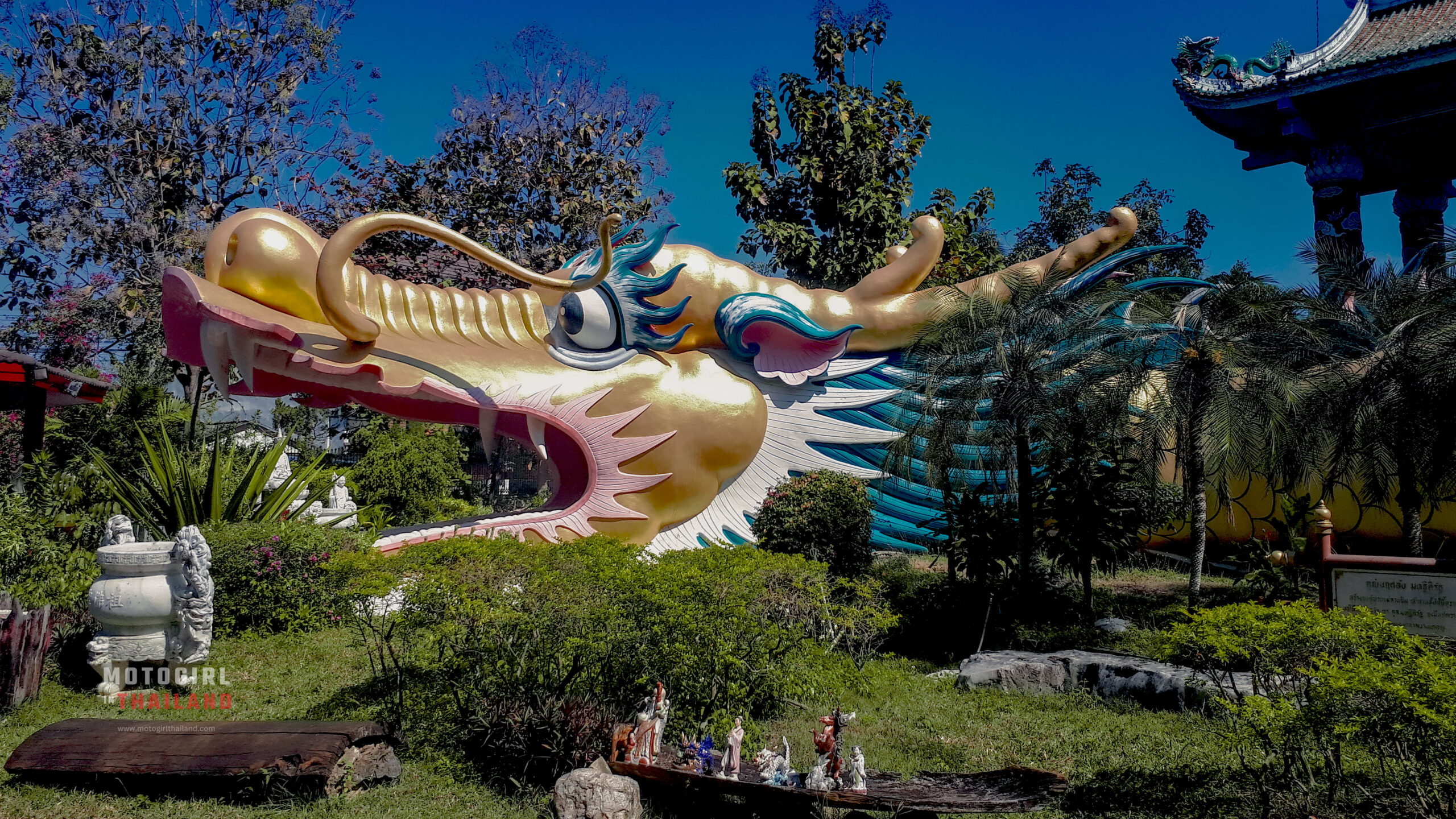
In fact, you can walk through the body of the dragon to enjoy the colourful murals, depicting a story within.
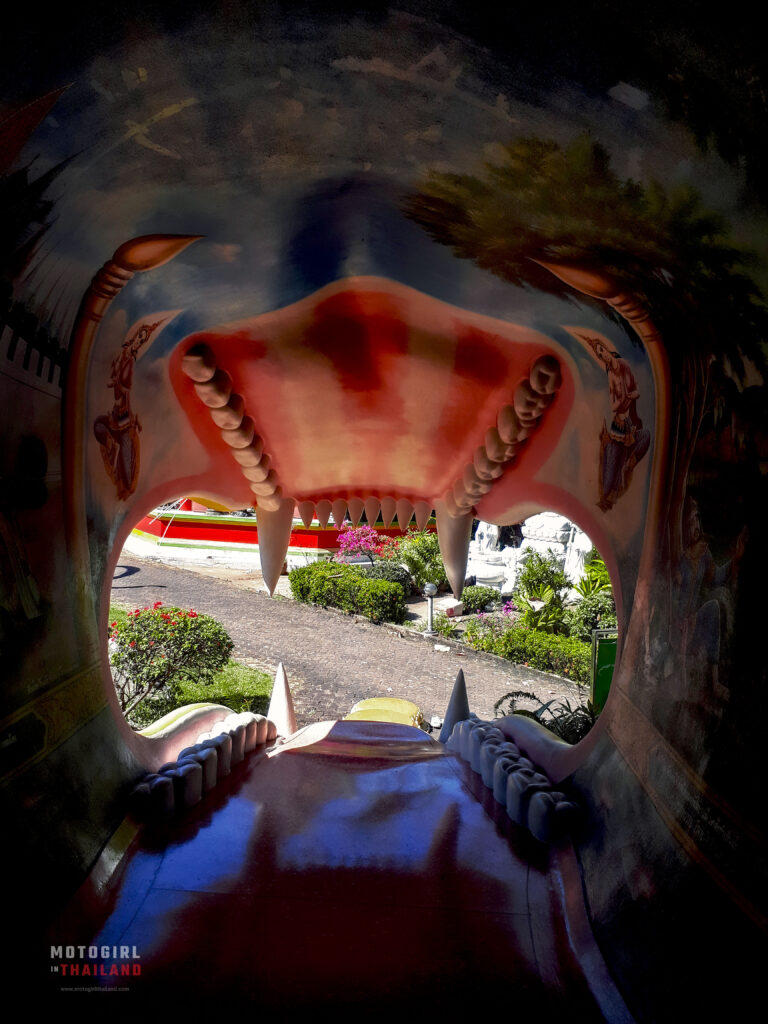
There is also an additional tiger statue that you can enter.
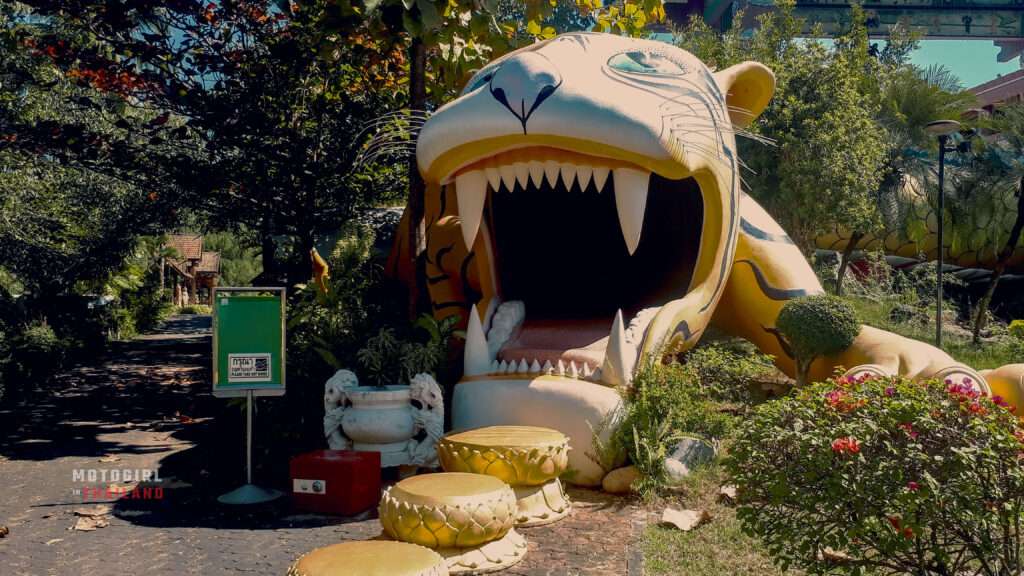
The careful landscaping, including small ponds and flowering plants, adds to the tranquil atmosphere, inviting visitors to slow down and reflect.
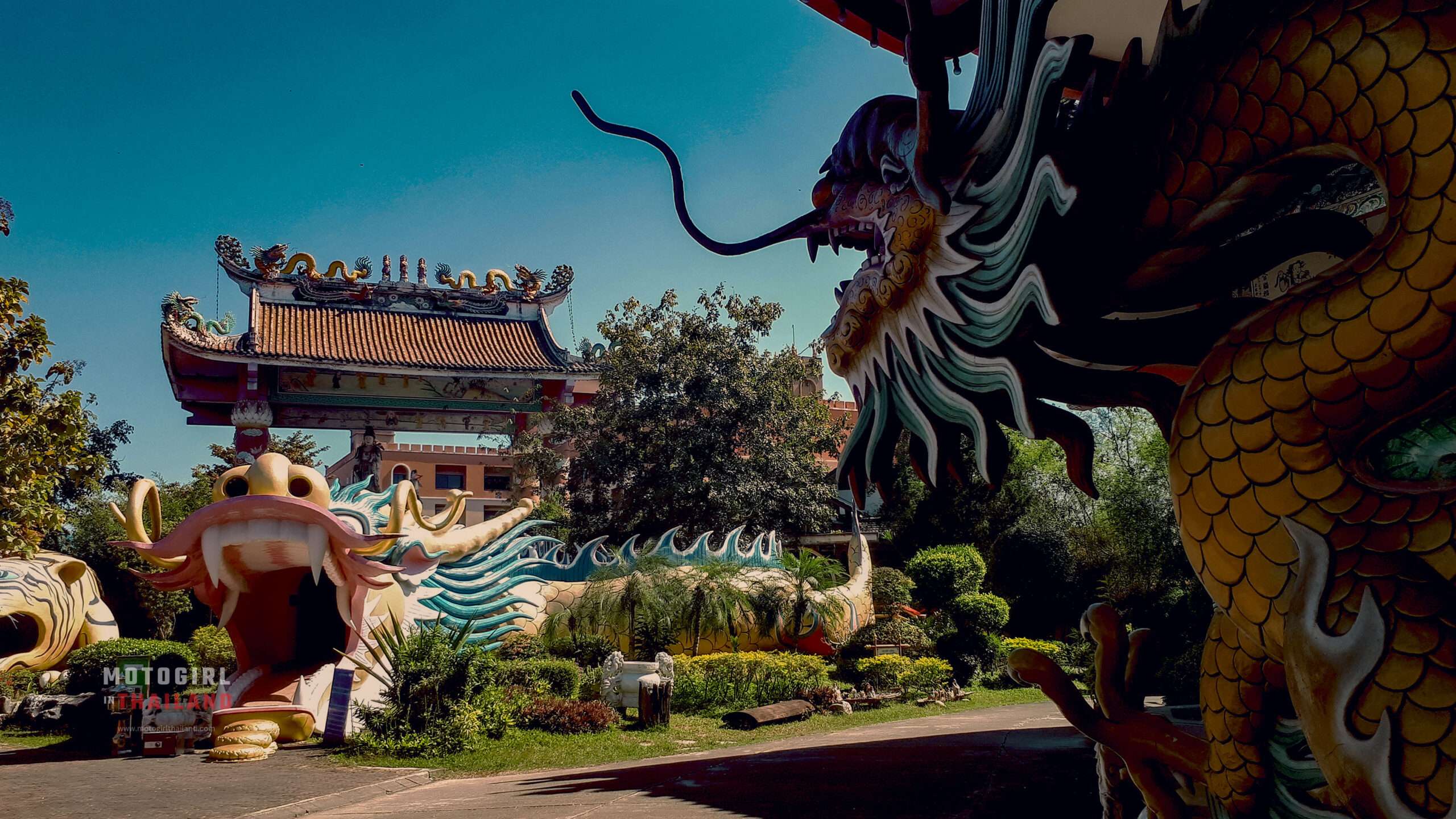
13: Wat Phra Borommathat
วัดพระบรมธาตุดอยผาส้ม / Wat Phra Borommathat Doi Pha Som is a temple sanctuary that harmoniously blends spiritual devotion with environmental stewardship. The temple offers visitors a peaceful Buddhist retreat and a glimpse into the integration of sustainable living principles.
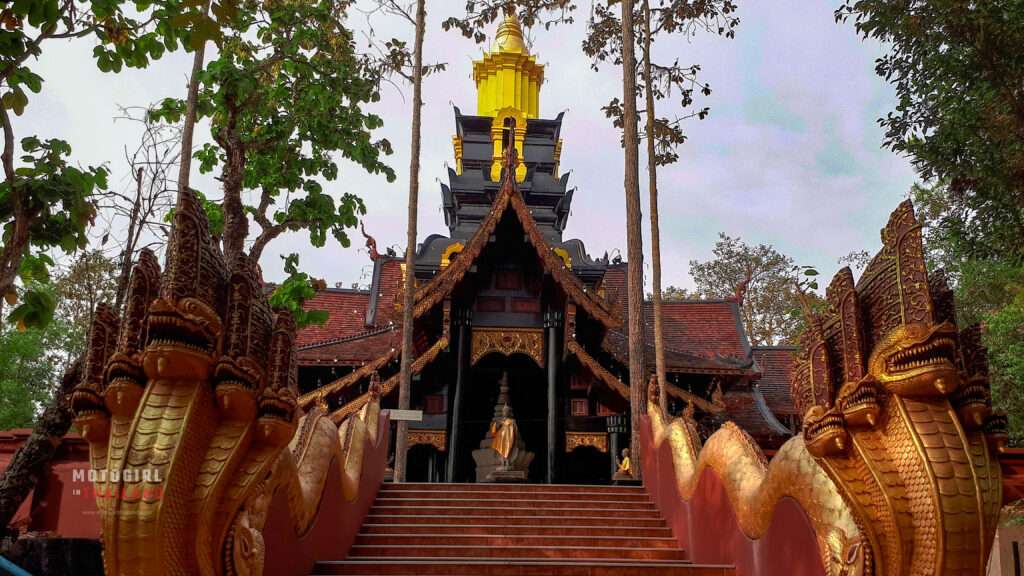
Details
- Location: 80 km from the City (Map)
- Opening Hours: Daily, 6:00 AM – 6:00 PM
- Entry: Free (donations welcomed)
- Best Time to Visit: Early mornings for a serene atmosphere and soft lighting.
- Parking: Available at the base of the temple grounds.
- Food/Drinks: No food or drink available onsite; consider bringing your own or visiting local eateries in Samoeng town.
- Disabled Access: No

Wat Phra Borommathat Doi Pha Som is home to eco-issues and spiritual serenity, and also a fun surprise—a giant yak guardian!
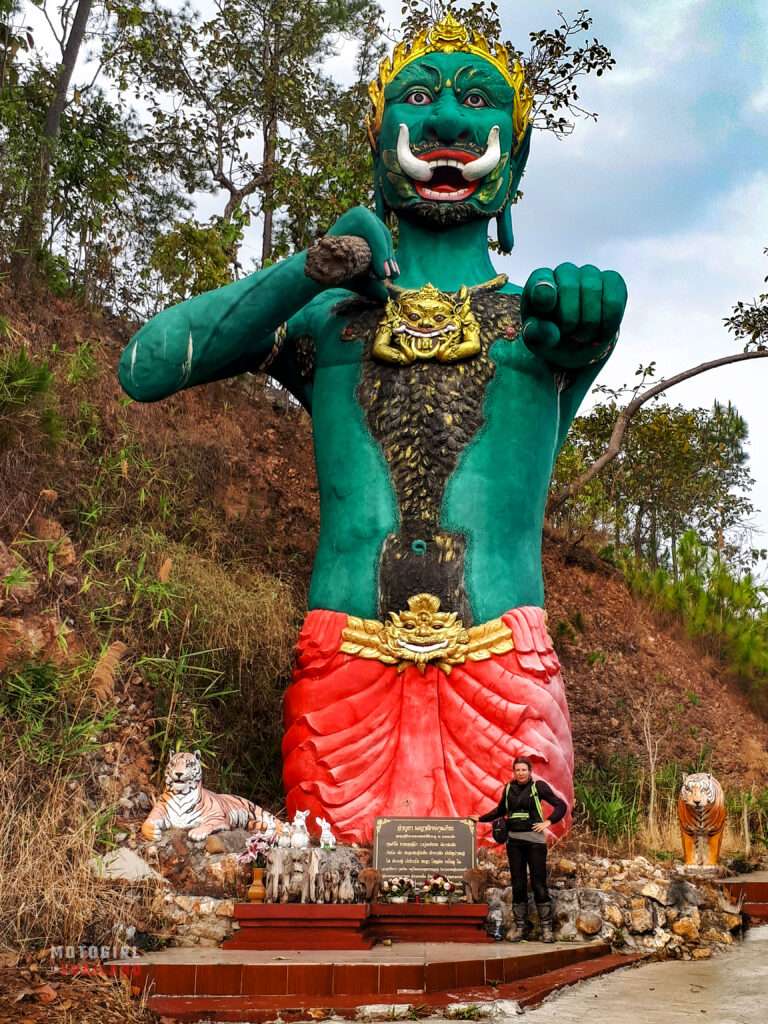
This towering, colourful giant watches over the temple with a fierce expression, making it an iconic, imposing feature..
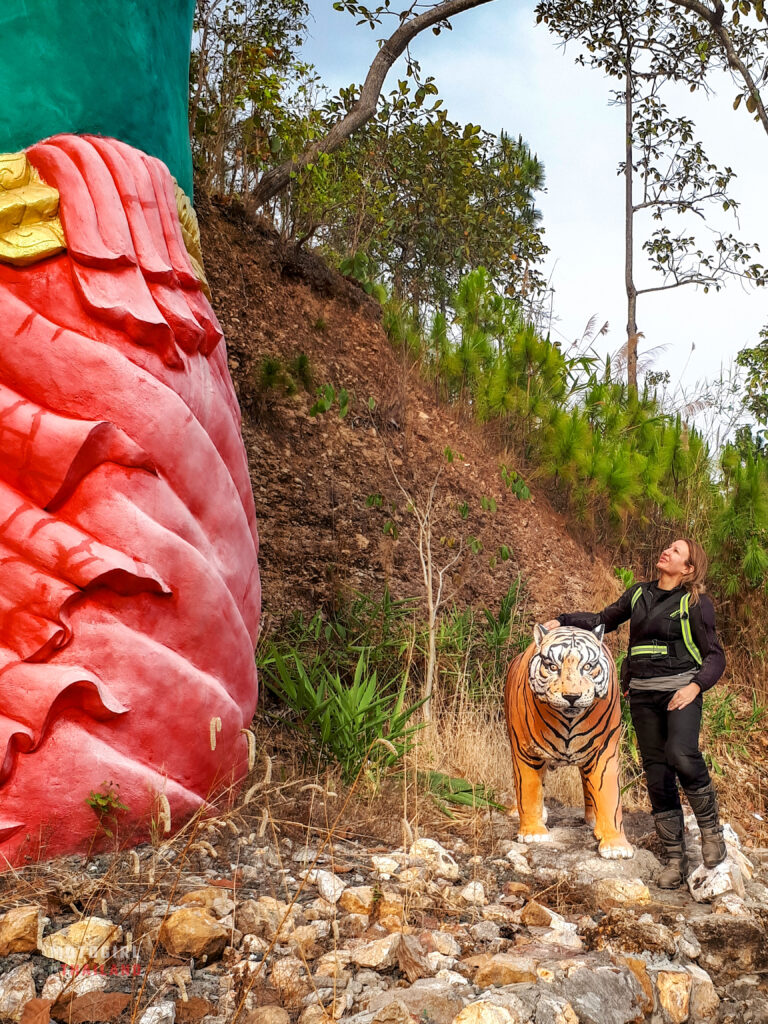
Historical and Cultural Aspects:
Wat Phra Borommathat Doi Pha Som is believed to house sacred relics of the Buddha, making it a revered site for local devotees. However, beyond its religious significance, the temple serves as a model for sustainable living, embodying the late King Bhumibol Adulyadej‘s philosophy of sufficiency economy.
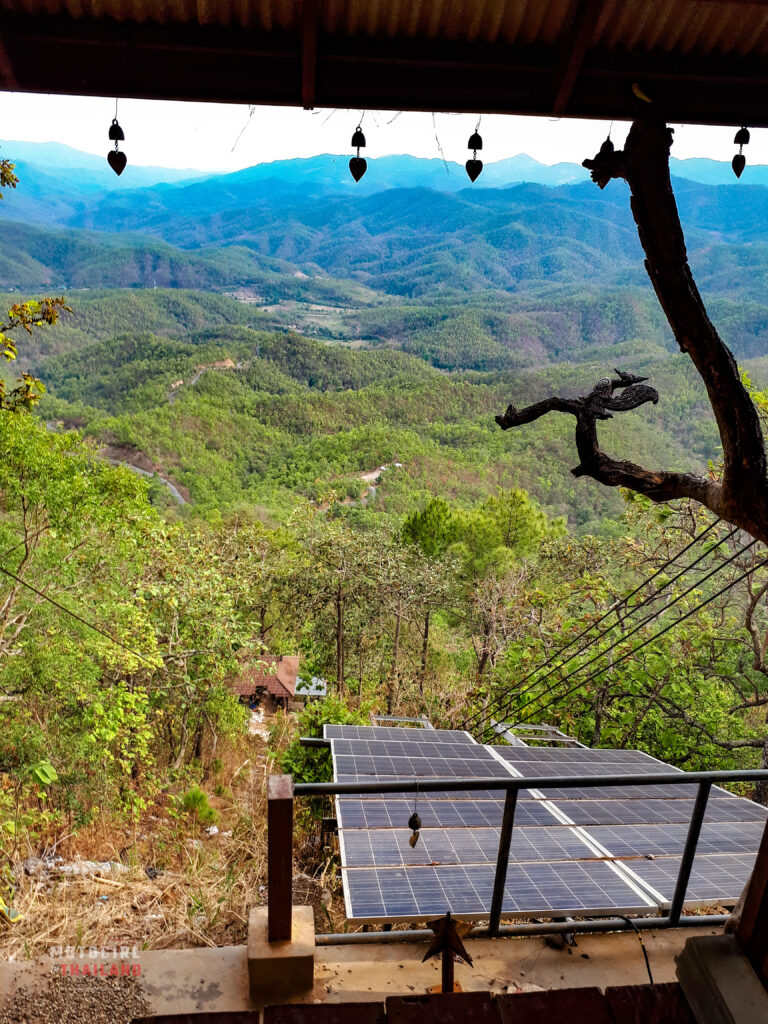
Since 2008, under the guidance of Abbot Phra Sorayut Chaiyapanyo, the temple has implemented initiatives such as forest conservation, water resource management, and community education programs, fostering a self-reliant and environmentally conscious community.
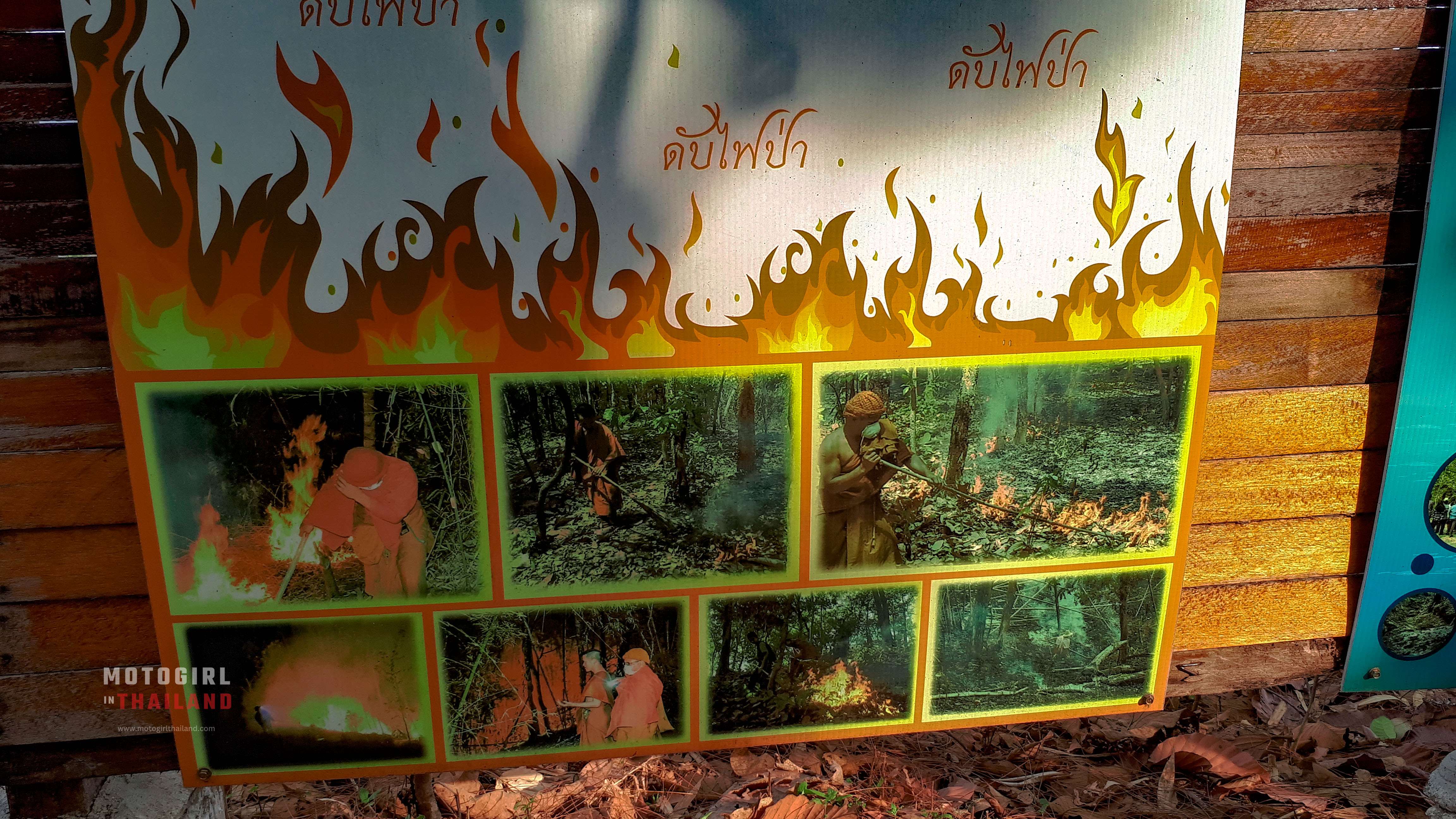
Dotted around the temple grounds is evidence of sustainability education and practices.
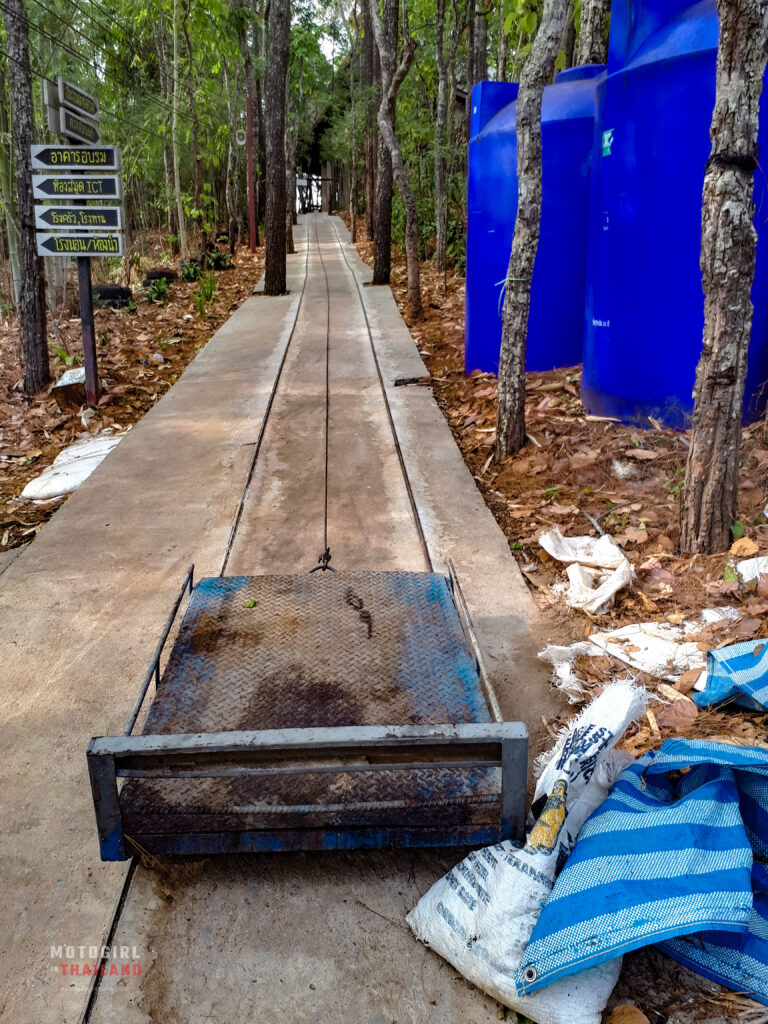
Architectural Features:
The temple grounds are thoughtfully integrated with the natural landscape, featuring check dams, terraced gardens, and areas designated for environmental education, all exemplifying the harmonious coexistence of spiritual practice and ecological mindfulness.

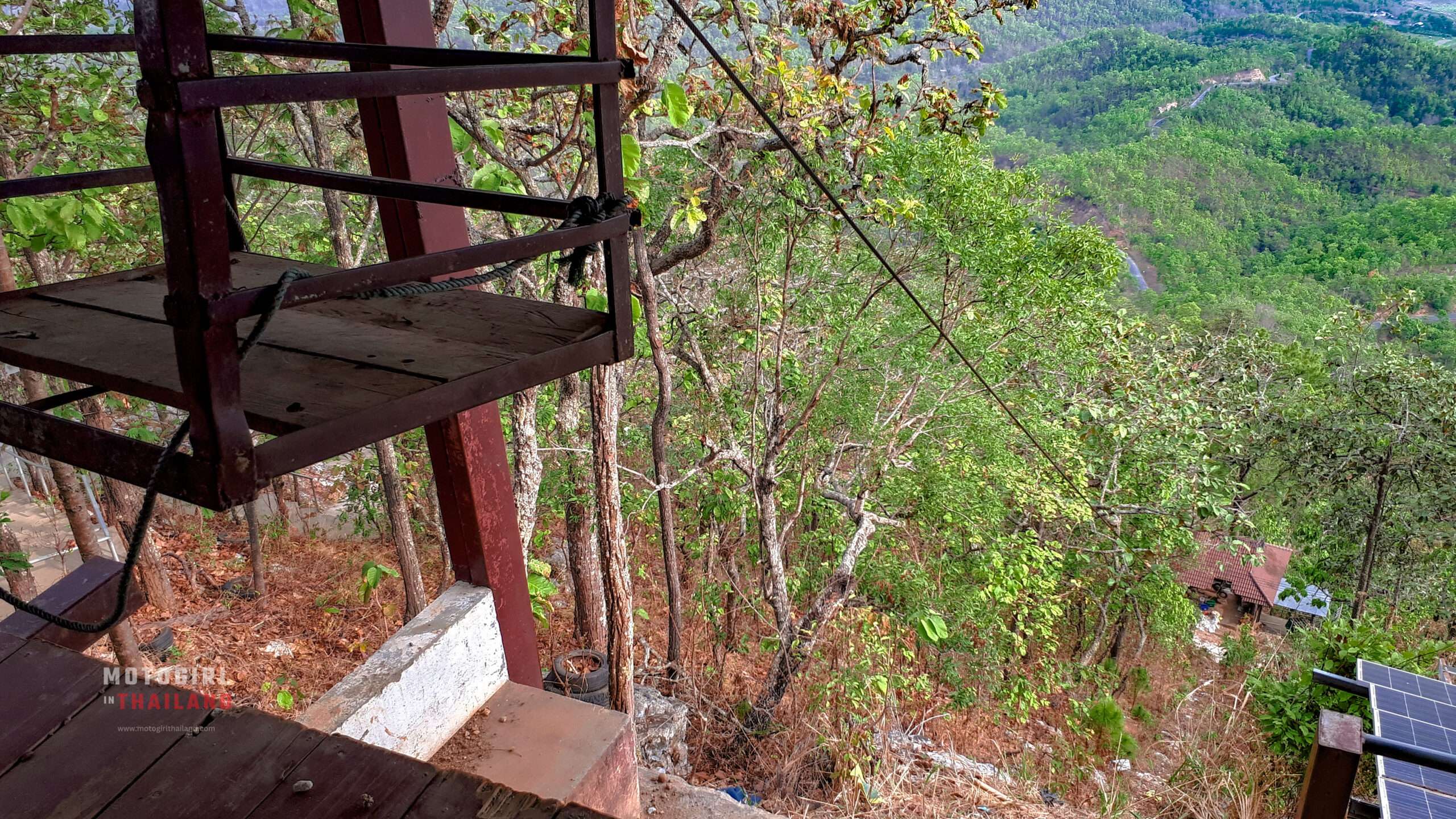
It is an interesting mix of both sustainability and Buddhist art, making it a unique and interesting local community temple.
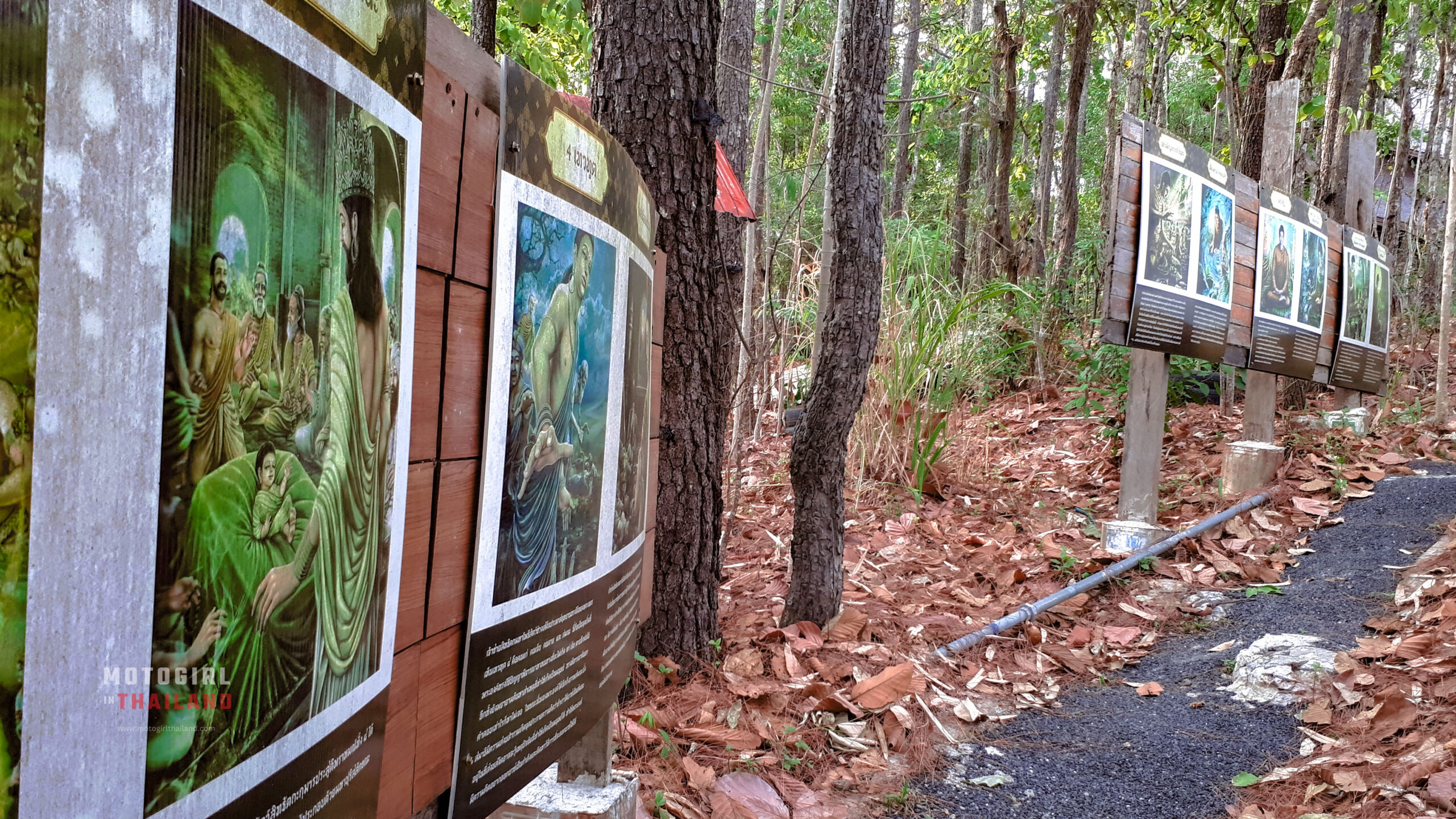
Additional Notes
It is a long walk up to the top of the temple grounds, so keep that in mind if visiting. Take water! However, there does seem to be a pulley system set up – although I am unsure if it is suitable for transporting people!
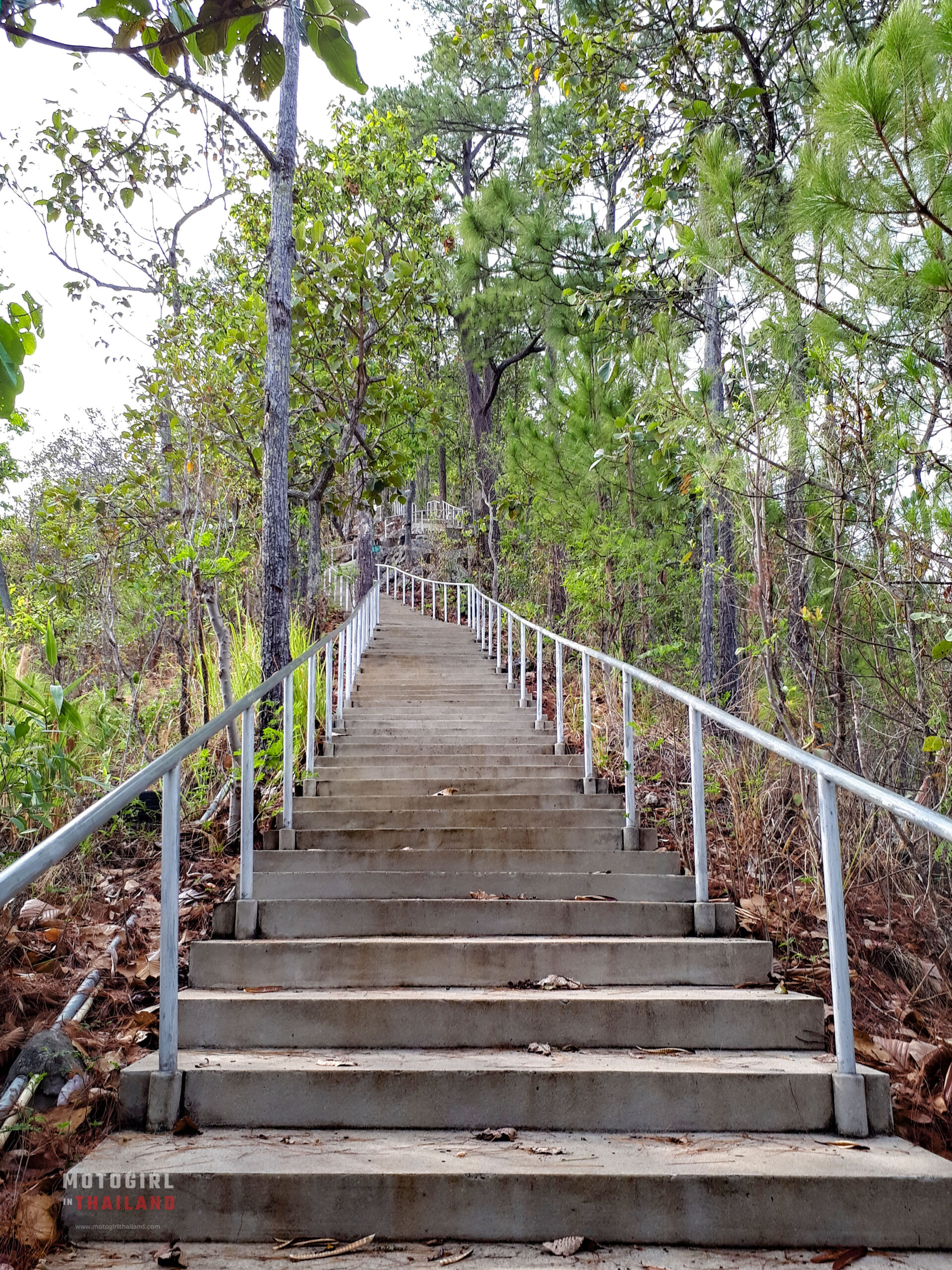
14: Shiva Brahma Narayan
Located in the San Pa Tong District of Chiang Mai, the เทวสถานพระศิวะ พรหม นารายณ์ / Shiva Brahma Narayan Temple in the San Pa Tong District, is a unique spiritual destination that harmoniously blends Hindu and Thai architectural elements. Dedicated to the Hindu Trimurti—Shiva (the destroyer), Brahma (the creator), and Narayan (Vishnu, the preserver)—this temple offers visitors a serene environment for reflection and worship. Its distinctive design and tranquil ambiance make it a noteworthy site for those interested in diverse religious traditions and cultural integration.

Details
- Location: 40 km from the City. (Map)
- Opening Hours: Daily, 9:30 AM – 4:00 PM
- Entry: Free (donations welcomed)
- Best Time to Visit: Weekday mornings for a peaceful experience
- Parking: available outside the temple.
- Food/Drinks: Cafe on site for drinks and snacks.
- Disabled Access: Whilst not specifically designed with disabilities in mind, most could probably manage.


Historical and Cultural Aspects:
Established in 2022, the Shiva Brahma Narayan Temple serves as a spiritual haven that reflects the syncretism of Hindu and Thai religious practices. It has quickly become a popular site for Thai visitors seeking to pay respects to the Trimurti. The temple’s design and rituals are influenced by both Hindu traditions and local Thai customs, offering a unique perspective on the cultural interplay between these two rich heritages.

Architectural Features:
The temple showcases a harmonious blend of Hindu and Thai architectural styles. Upon entering the compound, visitors are greeted by intricately designed structures adorned with traditional motifs.

The central sanctum houses statues of the Trimurti—Shiva, Brahma, and Narayan—each depicted with symbolic attributes that represent their respective roles in the cosmic cycle. The temple’s layout and ornamentation reflect a thoughtful integration of artistic elements from both cultures, creating a visually captivating and spiritually enriching environment.

Additional Notes:
The temple grounds are well-maintained, offering peaceful surroundings that encourage introspection. Occasionally, religious ceremonies and festivals are held, providing opportunities to witness traditional rituals and community gatherings. There is also a great little cafe on the premises, and plenty of places to sit and reflect.
15: Sampathaya Wanaram
Nestled in the tranquil forests of Mae On District, สัมปทายะวนาราม / Sampathaya Wanaram is a serene Dhamma practice center that offers a peaceful environment for meditation and spiritual reflection. Established by Mr. Sirawat and Mrs. Jiratcha Thepkongkham, the center embodies their deep faith in Buddhism and commitment to a simple, mindful lifestyle.

Details
- Location: 50 km from the City. (Map)
- Opening Hours: Daily, 6:00 AM – 6:00 PM
- Entry: Free (donations welcomed)
- Best Time to Visit: Early morning or late afternoon for cooler temperatures and a peaceful experience.
- Parking: on-site.
- Food/Drinks: It’s advisable to bring water and snacks.
- Disabled Access: There does seem to be fairly suitable access.

Historical and Cultural Aspects:
Wat Sampathaya Wanaram began as a personal retreat for its founders, who moved to the area in 2010 seeking a life immersed in nature and spiritual practice. Initially living in a tent without modern amenities, they gradually developed the site into a Dhamma practice center, constructing facilities to accommodate visiting practitioners and monks. The center emphasises the practice of Anapanasati (mindfulness of breathing) meditation and adheres to traditional Buddhist principles.

Architectural Features:
The center’s architecture reflects its commitment to simplicity and harmony with nature. At the heart pf the compound is an imposing ornately decorated gold Naga statue, which features multiple dragon heads and coiled bodies. Facilities include meditation halls, simple accommodations, and communal areas designed to support a contemplative lifestyle. The emphasis on minimalism and sustainability creates an environment conducive to introspection and spiritual growth.
What to Expect:
The center welcomes visitors and also, individuals interested in practicing mindfulness and participating in Dhamma activities. While the facilities are basic, they are thoughtfully designed to support a focused and undisturbed practice. As a place dedicated to spiritual development, visitors are encouraged to observe silence and respect the center’s guidelines.
For more information, visit the official website: www.sampathaya-wanaram.com

16: Wat Mae Ta Khrai
Located in the serene countryside of Doi Saket District, Wat Mae Ta Khrai is a large, tranquil temple complex often missed by tourists. While the main grounds are beautifully maintained and offer a classic temple experience, there’s a unique twist—tucked away behind the main buildings lies a hidden hell garden, a rare and surreal depiction of Buddhist concepts of karma and rebirth.

Details
- Location: 30 km from the City (Map)
- Opening Hours: Daily, 6:00 AM – 6:00 PM
- Entry: Free (donations welcomed)
- Best Time to Visit: Early morning or late afternoon for cooler temperatures and a peaceful experience.
- Parking: available on-site.
- Food/Drinks: Limited facilities; it’s advisable to bring water and snacks.
- Disabled Access: Limited.

!!***WARNING*** – DISTURBING IMAGES/VIDEO !!
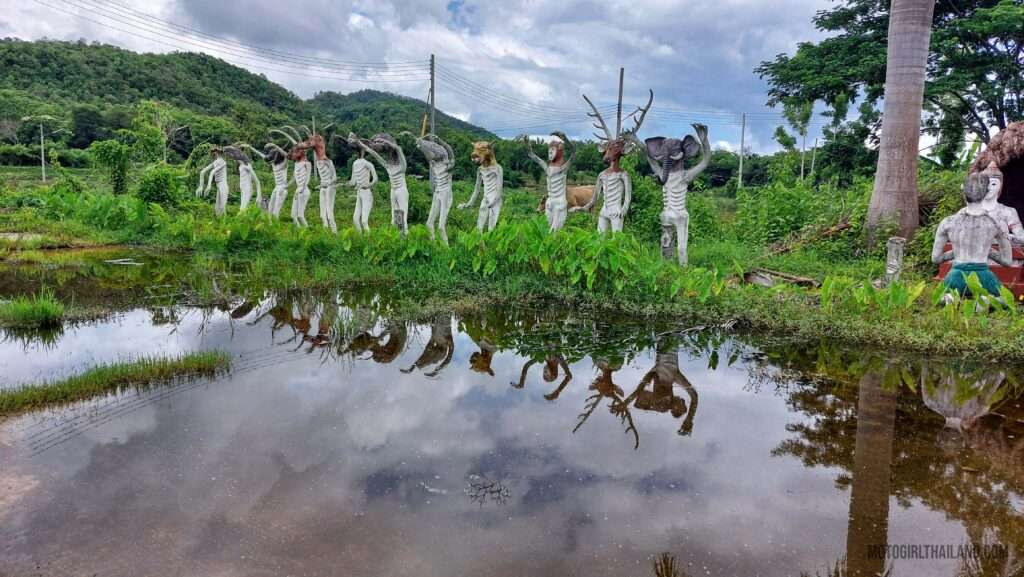
Historical and Cultural Aspects:
Wat Mae Ta Khrai serves as a spiritual and community centre for the surrounding rural population and has been a hub for local Buddhist practice for decades.
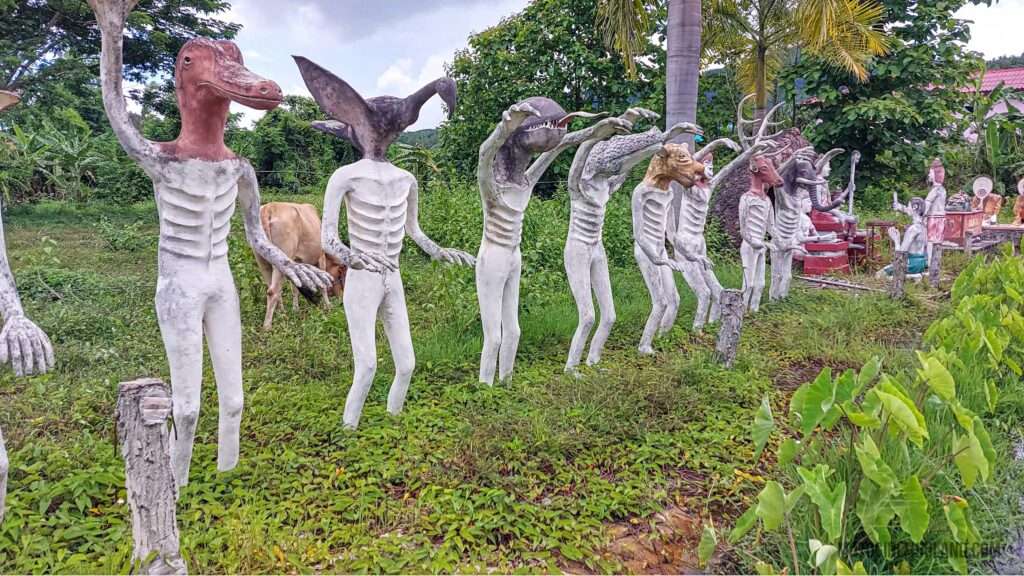
Though it may not have the ancient pedigree of some of Chiang Mai’s more famous temples, its cultural relevance is significant, offering insight into everyday religious life in Northern Thailand.
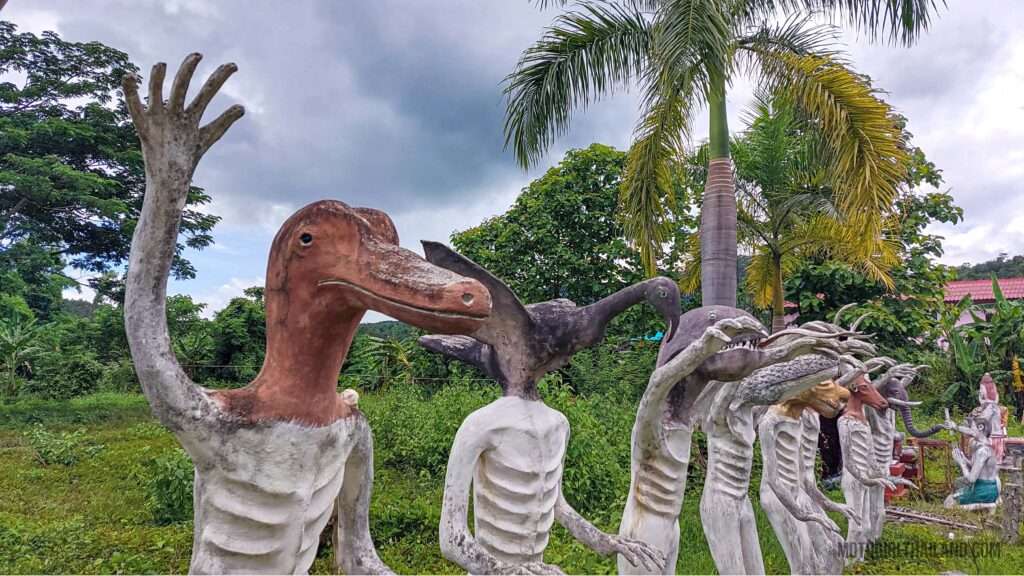
The temple is also known for its support of educational and charitable initiatives in the area.

Architectural Features:
The main temple features a giant statue of revered monk Kruba Sri Wichai (also known as the “Engineer Monk” for his dedication to building temples, roads, and bridges across Lanna (Northern Thailand), including the famous path to Wat Phra That Doi Suthep), and a glorious view from the top of the temple steps.
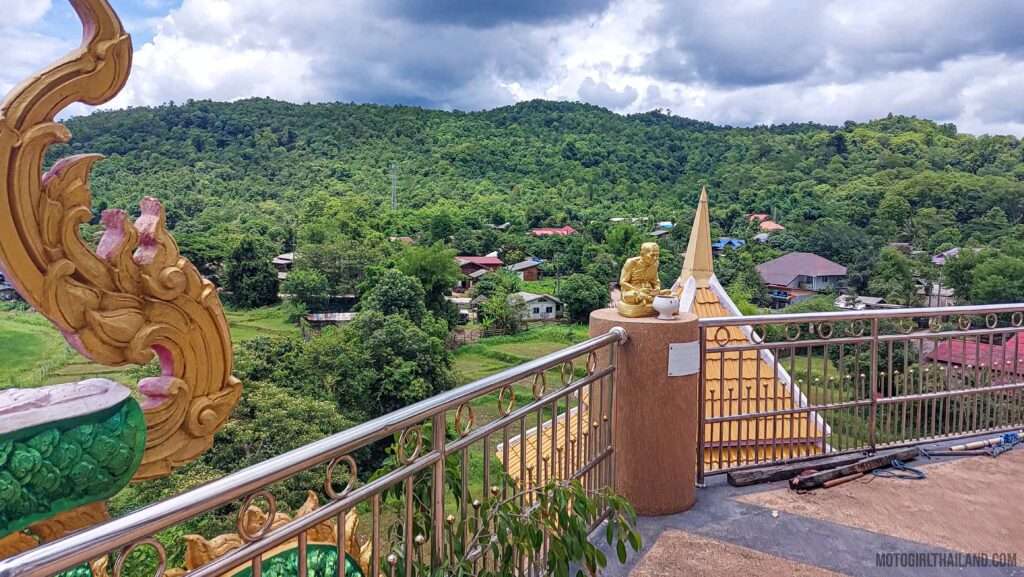
However, an interesting feature that many miss, is the adjoining ‘Hell Garden’.
Hidden Hell Garden (Naraka)
This hidden gem—or shock—is located behind the main viharn near the rear boundary of the temple grounds. Known as a hell garden or Naraka sculpture park, this surreal area depicts graphic, sometimes disturbing statues portraying Buddhist hells—used as morality tales to teach about the consequences of sin, greed, and violence.
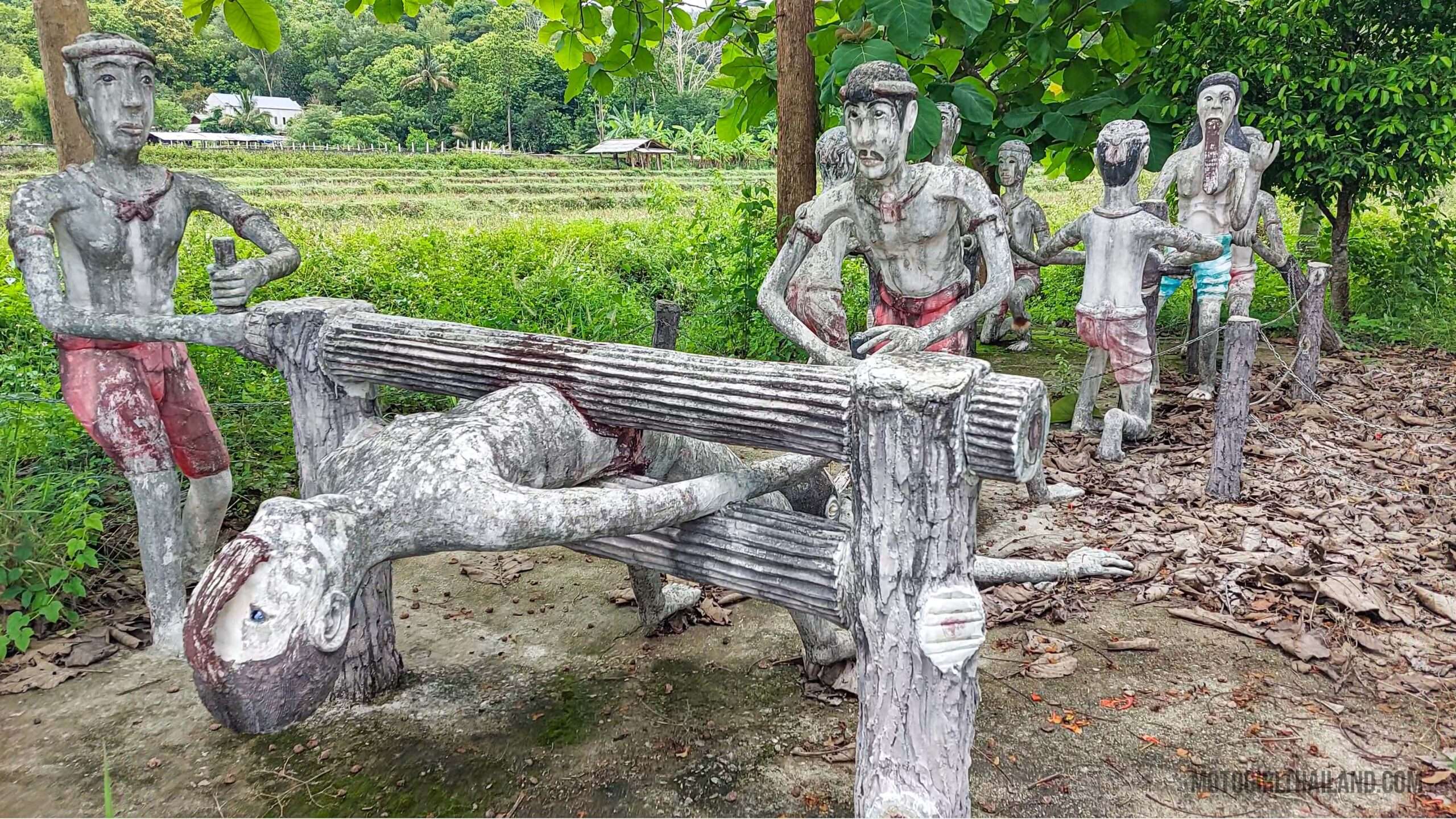
Expect sculptures of tortured souls, demon guardians, and symbolic punishments, intended not to frighten but to educate and inspire ethical living. Not all visitors are aware of this part, making it a unique surprise for the curious.

Note: Photography is allowed, but please be respectful. These displays carry cultural and religious significance.

17: Wat Mae Kaet Noi
Located in the San Sai District, วัดแม่แก้ดน้อย / Wat Mae Kaet Noi is renowned for its vivid and graphic depictions of Buddhist hell, known as Naraka. This temple offers a stark contrast to the serene and peaceful ambiance typically associated with Thai temples. The temple’s “Hell Garden” features life-sized statues and scenes illustrating the consequences of immoral actions, serving as a visual representation of karmic retribution and a moral lesson for visitors.
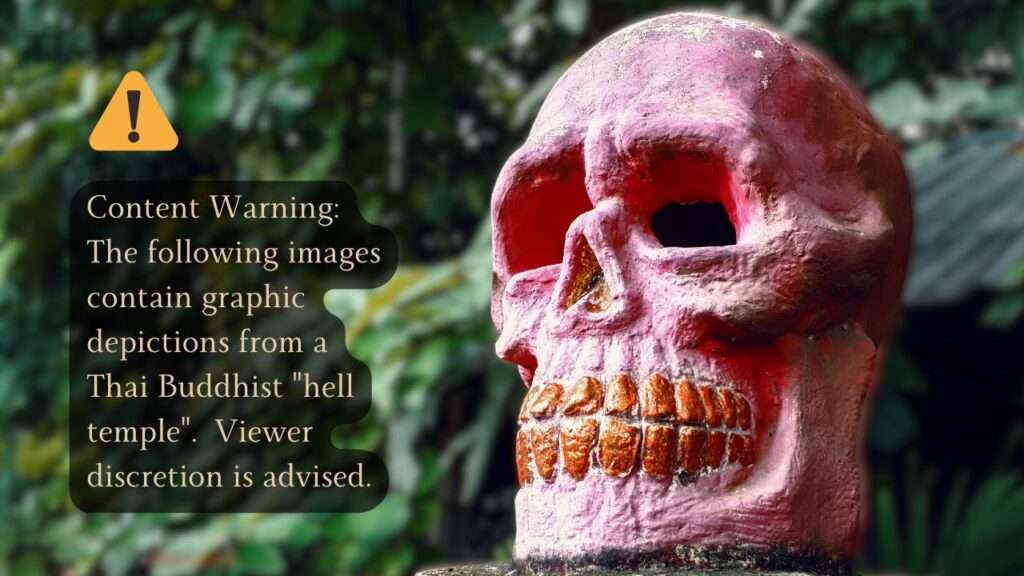
Details
The Hell Garden is not recommended for young children or those sensitive to graphic imagery. Although some Thai families do take their children there for a morality lesson.
- Location: 20 km from City. (Map)
- Opening Hours: Daily, 8:00 AM – 6:00 PM
- Entry: 10 Baht (coin-operated gate). Bring plenty of additional 10 Baht coins if you wish to trigger the coin-operated statues.
- Best Time to Visit: Weekday mornings to avoid crowds..
- Parking: Available in the main temple section or park roadside.
- Food/Drinks: Nothing on-site; it’s advisable to bring water and snacks.
- Disabled Access: I believe so, but I need to recheck and confirm.
!!***WARNING*** – DISTURBING IMAGES/VIDEO !!
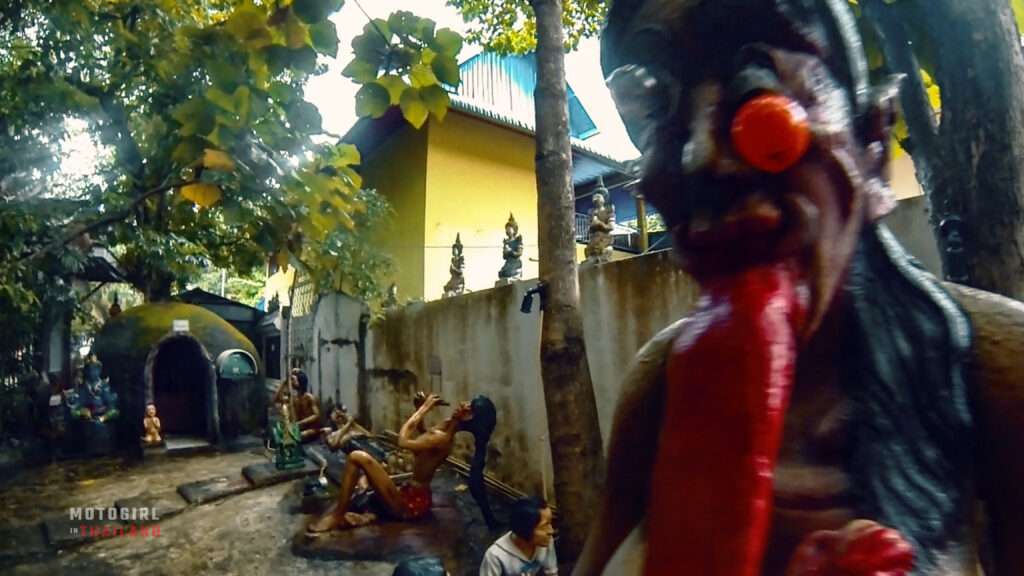
Hell temples, known in Thai as “Naraka Temples”, are a striking part of Thai Buddhist culture. They use graphic sculptures and vivid imagery to depict Buddhist hell (Naraka)—a symbolic realm where souls face the consequences of their actions based on karma.
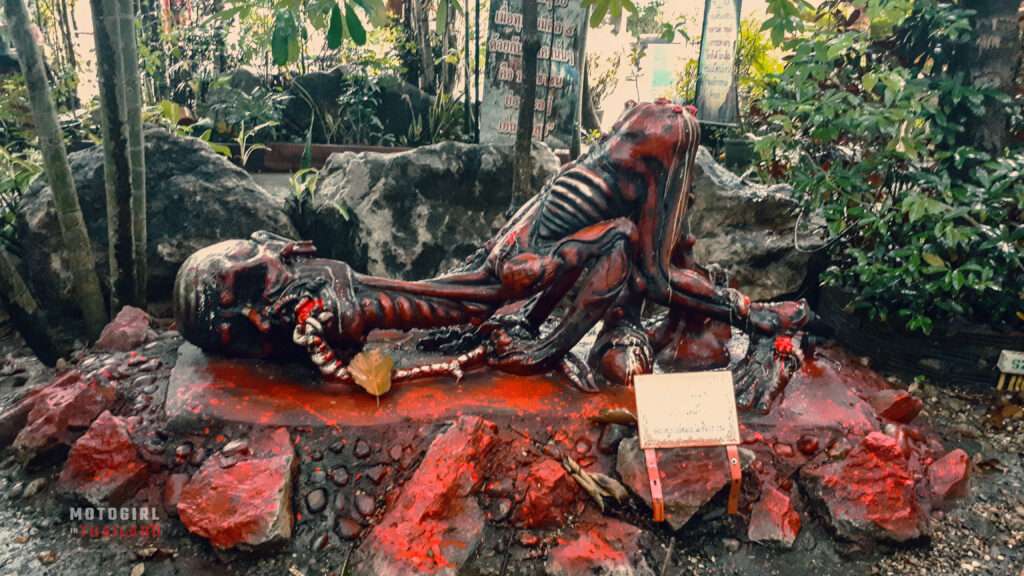
These temples are intended as morality lessons, depicting scenes such as greed, violence, adultery, and dishonesty. Each gruesome scene acts as a cautionary tale, especially for younger generations, reminding visitors to live mindfully and ethically.
They’re confronting, yes—but also deeply cultural.

Historical and Cultural Aspects:
Wat Mae Kaet Noi Hell Garden was conceptualised by the abbot, Phra Kru Vishanjalikon, who was inspired by a vivid dream. Over two decades, he collaborated with artists and sculptors to bring this vision to life, resulting in a unique and thought-provoking addition to the (regular) temple grounds.

Architectural Features:
While the main temple structures adhere to traditional Thai architectural styles, the standout feature is the Hell Garden. This area contains a series of sculptures depicting various punishments for sins.
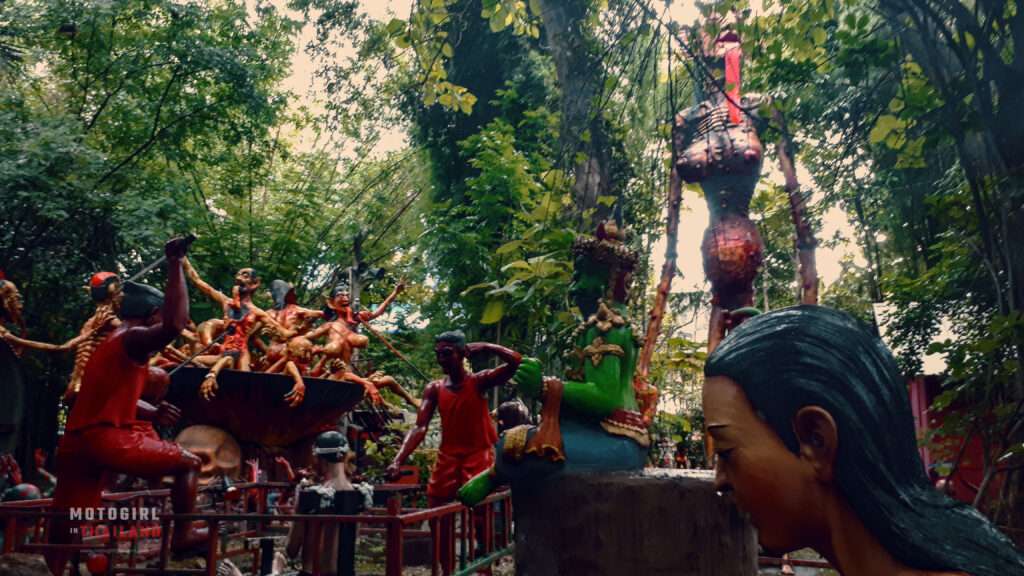
The temple really needs to be seen to be believed. The statues are gruesomely dramatic and some tower sky high.
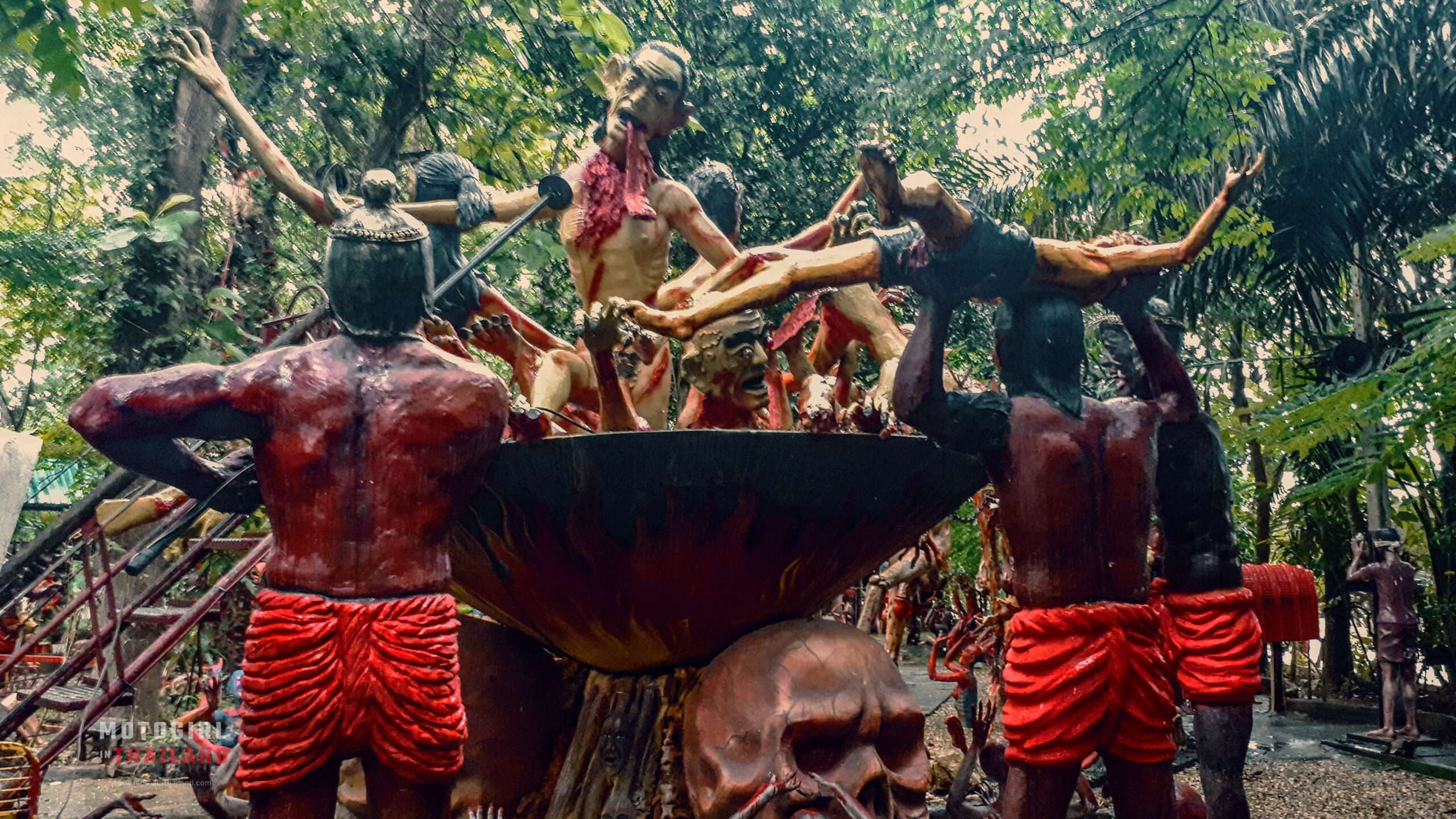
Additional Notes:
Take plenty of 10 Baht coins. To enter the hell section, you pass through a turnstile—operated by a 10-baht coin. Certain figures also move or light up when you insert a coin, making it feel almost like a horror amusement park. It’s bizarre, thought-provoking, and unforgettable. (The video below will give a better idea of the experience).
18: Wat Hua Dong Samakkhitham
วัดหัวดงสามัคคีธรรม / Wat Hua Dong Samakkhitham in Mae Rim District, serves as a community temple for local residents. While not particularly spectacular compared to the other temples mentioned, what makes this temple interesting, is the unexpected Kyaiktiyo (Golden Rock) replica. Other “Golden Rock” temples in the region include Wat Phrathat In Khwaen, in Lampang, and Phra That Inkhang, in Phrae.

Details
- Location: 20 km from City. (Map)
- Opening Hours: Daily, 6:00 AM – 6:00 PM
- Entry: Free (donations welcomed)
- Best Time to Visit: Early morning for cooler temperatures.
- Parking: Available on-site
- Food/Drinks: Limited options nearby; advisable to bring your own refreshments
- Disabled Access: Yes

Historical and Cultural Aspects:
According to local elders, the area where Wat Hua Dong Samakkhitham now stands was once a dense forest adjacent to a cemetery, characterised by tall trees and a quiet, somewhat mysterious atmosphere.
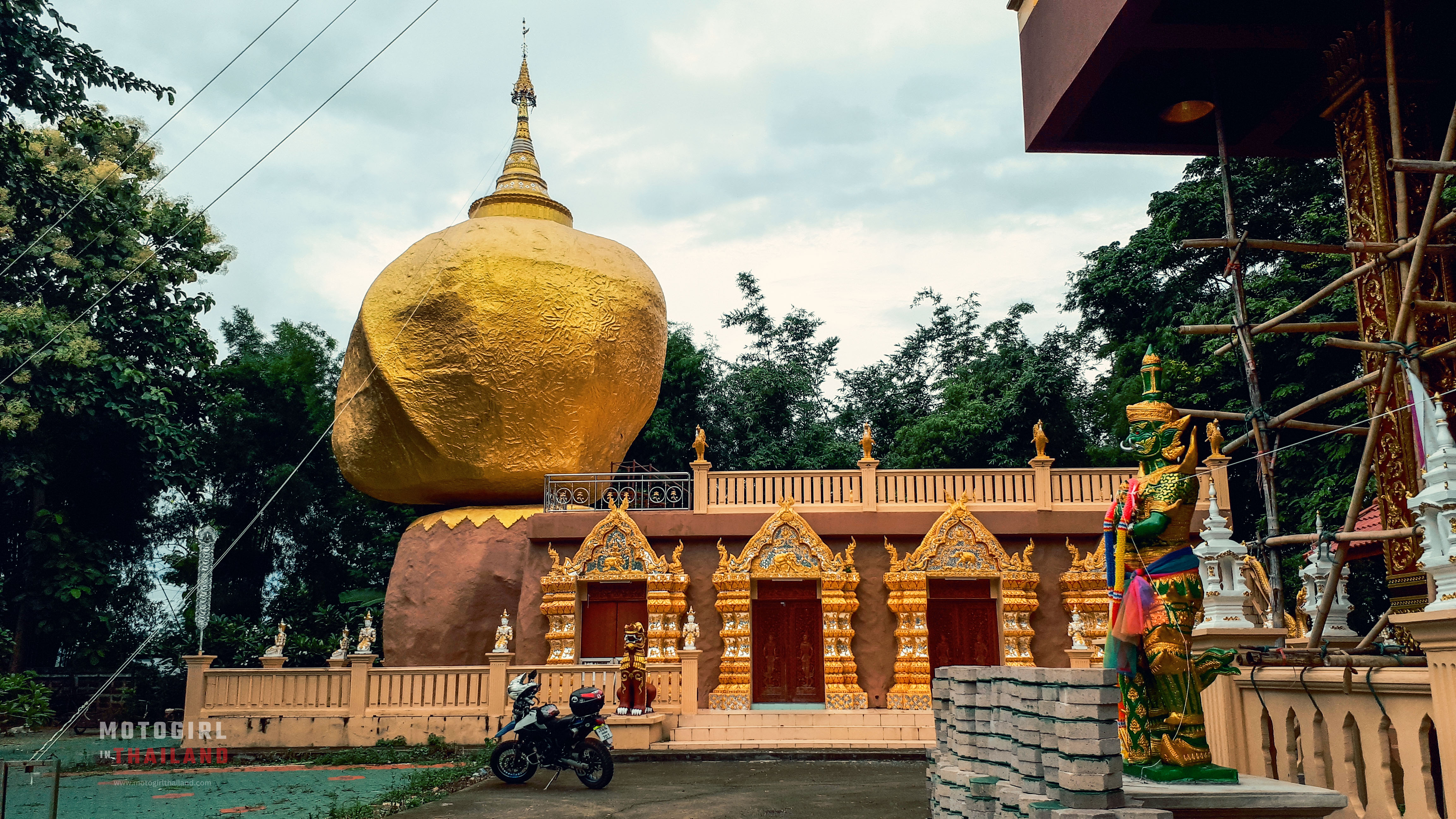
Over time, villagers began to use the space for spiritual gatherings, and a small shrine was built. Through local dedication and community effort, the temple evolved into a full-fledged monastery. The word “Samakkhitham”, (meaning religious fellowship), reflects the spirit of unity and harmony that shaped its founding.
What makes this temple special is the Golden Rock, modelled after the famous Kyaiktiyo Pagoda in Myanmar – one of the most revered Buddhist pilgrimage sites in Southeast Asia. The Golden Rock is believed to be miraculously balanced on the edge of a cliff by a strand of the Buddha’s hair.

Temples in Thailand and other neighboring countries often build replicas as acts of devotion or to bring the same sacred energy and merit to their communities.
Architectural Features:
Wat Hua Dong Samakkhitham features a mix of modest Lanna-style architecture and modern additions. The main viharn (ordination hall) is adorned with traditional northern Thai roof tiers, while colorful murals and Buddha statues reflect local artistic influences. A newly built ubosot (ordination hall) serves as the heart of religious ceremonies. Surrounding structures include monk living quarters, a community kitchen, and an open-air pavilion often used for dhamma talks and communal meals. The setting—surrounded by farmland and gently rolling hills—enhances the temple’s peaceful ambiance. A quintessential Thai community temple.
The following video is not the best quality as it is an old Facebook Live video, but should give an idea of how it looks.
19: Wat Pha Thamachart
วัดป่าธรรมชาติ / Wat Pha Thamachart in Hang Dong District, is a hidden forest sanctuary amidst nature. This secluded temple, enveloped by lush forests and serene landscapes, provides an ideal setting for meditation and introspection.
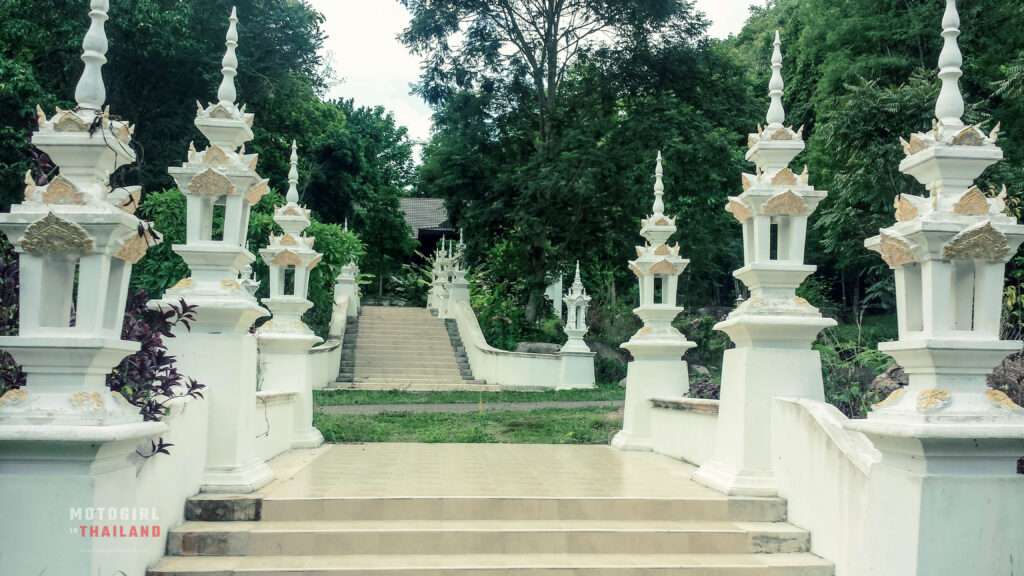
Details
- Location: 20 km from City. (Map)
- Opening Hours: Daily, 6:00 AM – 6:00 PM
- Entry: Free (donations welcomed)
- Best Time to Visit: Early morning for cooler temperatures.
- Parking: Available on-site
- Food/Drinks: Nothing available on-site, but cafes and eateries are in the general area.
- Disabled Access: Surrounding grounds only. I need to re-check if there is access into the temple itself.

Wat Pha Thamachart, meaning “Temple of the Natural Cliff,” is renowned for its integration with the surrounding natural environment.
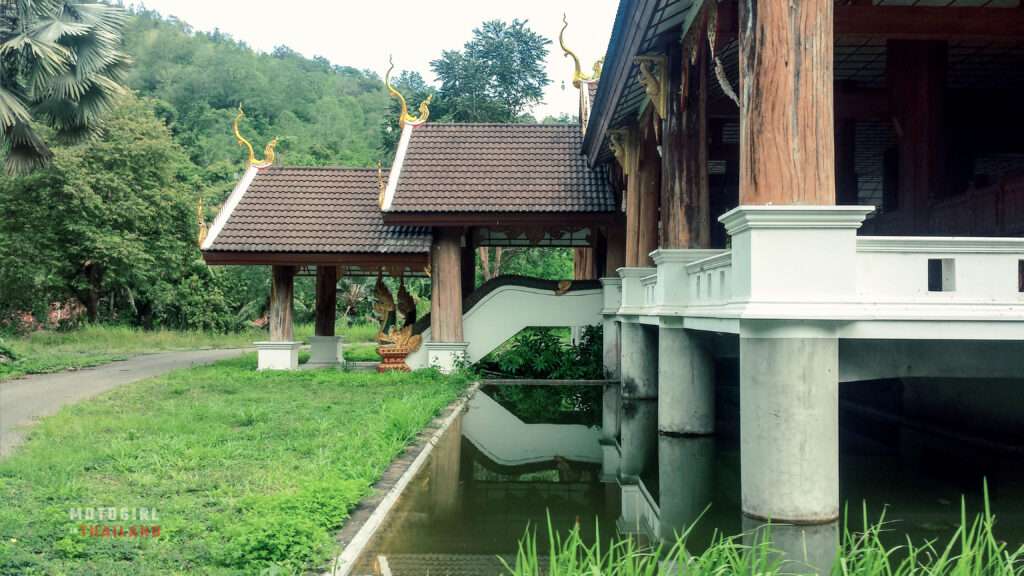
Historical and Cultural Aspects:
The temple serves as a center for Buddhist practice, emphasising harmony between spiritual development and nature. Monks and visitors alike engage in meditation and mindfulness practices, drawing inspiration from the serene surroundings.
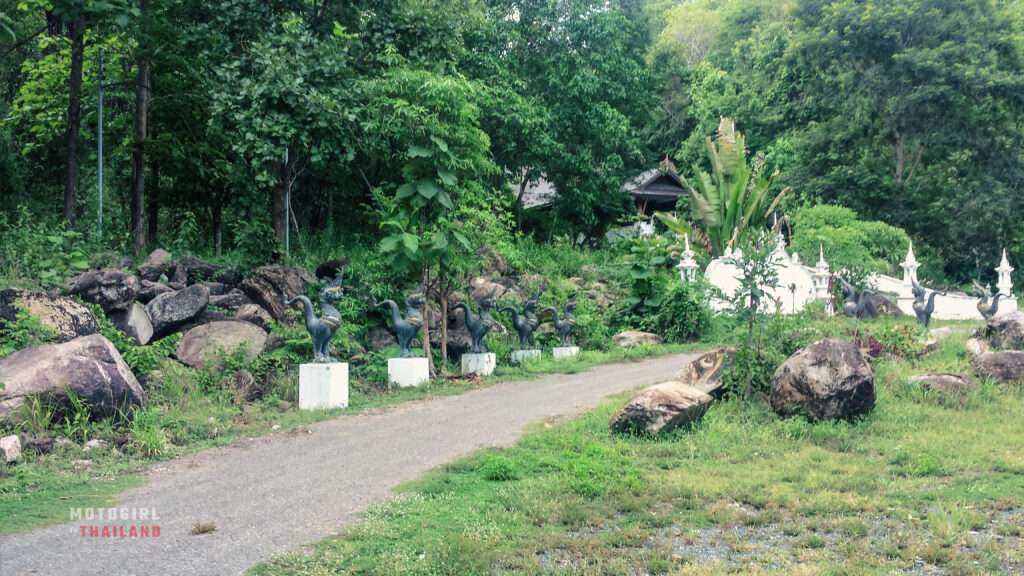
Architectural Features:
The temple’s architecture harmoniously blends traditional Thai design with the natural landscape. Structures are thoughtfully positioned to complement the contours of the land, with meditation halls and living quarters nestled among trees and rock formations. Natural materials are used extensively, reinforcing the temple’s commitment to simplicity and environmental harmony.

The temple grounds are characterized by quiet walking paths, shaded areas for contemplation, and spaces designed for communal practice.
20: Wat Mok Khan Lan
Away from the tourist trail, วัดโมคคัลลาน / Wat Mok Khan Lan is also known as “The Temple of Dinosaurs”, due to the many unusual statues within. It also houses beautiful huge Buddha images, which can be seen at a distance on the roadside.

Details
- Location: 60 km from City. (Map)
- Opening Hours: Daily, 6:00 AM – 6:00 PM
- Entry: Free (donations welcomed)
- Best Time to Visit: Early morning for cooler temperatures.
- Parking: Available on-site
- Food/Drinks: Limited options nearby; advisable to bring your own refreshments

Mok Khan Lan is a unique and whimsical temple, known for its vibrant collection of dinosaur sculptures, oversized Buddha statues, and unusual fantasy-themed decor. Often referred to as the “Dinosaur Temple,” it blends traditional Buddhist elements with playful, surreal installations—making it both a spiritual site and a quirky, photogenic experience.

Historical and Cultural Aspects:
Wat Mok Khan Lan may not be ancient, but it represents a modern interpretation of Thai Buddhist storytelling and teaching. Its unique incorporation of dinosaur statues and mythical creatures serves as a creative visual metaphor for karmic lessons, impermanence, and the cycle of life and death.

While the exact founding date is unclear, the temple has become a local curiosity, drawing attention for its blend of playful and symbolic elements. As with many Thai temples, it functions as a space for community gathering, spiritual practice, and merit-making. The temple reflects how modern Thai Buddhism can adapt traditional values through imaginative, culturally resonant displays.

Architectural Features:
Wat Mok Khan Lan features a massive golden reclining Buddha as a central highlight, surrounded by eclectic sculptures that set it apart from more traditional temples.

Scattered throughout the lush garden grounds are whimsical statues, including dinosaurs, Godzilla, King Kong, and mythical creatures, creating a surreal and playful landscape.

Traditional elements such as Buddha images, shrines, and pavilions are thoughtfully integrated among these modern sculptures, blending spirituality with imaginative artistry.
@Motogirlthailand
Riding solo in Thailand and sharing my adventures, insights, and tips is a passion of mine. If you’ve enjoyed my report, there are a few ways you can support me and help keep the wheels turning.
Say Thanks!:
Consider buying me a coffee through BuyMeACoffee.com/motogirlthailand or becoming a patron on Patreon.com/motogirlthailand. Your support helps me continue creating content, exploring new routes, and bringing you closer to the rich culture and landscapes of Thailand.
Motogirl Shop!:
Check out my shop page where you can find MotoSplore GPS Route Map guides, exclusive MotoGirlThailand merchandise and products I recommend for every rider. Every purchase gives you a great adventure and helps fund and support the running costs for Motogirlthailand.com



